
 GIEDO VAN DER ZWAN
GIEDO VAN DER ZWAN

WWW.DUTCHINDUSTRY.ORG

2
IMAGE: ARENDA OOMEN
A wise man once said, ‘The mechanics of industry is easy. The real engine is the people: their motivation and direction.’
As prime minister it’s my privilege to have regular contact with the ‘engine’ of Dutch industry. I visit companies and speak with entrepreneurs, and together we go on foreign trade missions. Time and again I’m struck by their innovative and creative mindset and their focus on cooperation, continuity and sustainability. It’s an approach that goes back decades in the Netherlands. This book showcases Dutch entrepreneurs, their companies and how they have developed over the past decades and centuries. It also describes the way they continue to operate at the forefront of the global market today, each in their own sector or niche.
Dutch businesses are popular with partners all over the globe, and no wonder. Their innovative nature and focus on continuity make them reliable. They deliver high-quality products and services. They value their knowledge base and expand it year after year by building on their own R&D activities and the input received from the first-class universities and institutes with which they form networks. Partnership between businesses, research institutes and government bodies is firmly anchored in Dutch culture, and it’s crucial to our success.
Wherever I go in the world, I find Dutch businesses active there, often helping to tackle the major challenges of our time. Challenges like producing enough food to feed the planet’s growing population, or anticipating the impact of climate change on water management, reducing greenhouse gas emissions and halt global warming. The Netherlands aims to be a world leader in smart, clean and energy-efficient technologies. Dutch industry fulfils its role as a partner by sharing its knowledge on how to increase crop yields, combat flooding or optimise communications, safety and infrastructure, to name but a few examples.
This book offers a wide-angle perspective of Dutch industry. The individuals featured talk about the competition abroad, about innovation and about the challenges they encounter in their day-to-day business. I am confident this book will give you a clearer picture of how Dutch companies operate and work towards a better, more sustainable world, as well as a better understanding of the engine behind our unique and thriving industry.
Mark Rutte Prime Minister of the Netherlands
3 DUTCH INDUSTRY
PREFACE

4
5 DUTCH INDUSTRY INTRODUCTION A NEW WORLD TOP SECTORS IN THE NETHERLANDS: 20 AGRI & FOOD 26 CHEMISTRY 32 CREATIVE INDUSTRY 38 ENERGY 44 HIGH TECH SYSTEMS & MATERIALS 50 HORTICULTURE & STARTING MATERIALS 56 ICT 62 LIFE SCIENCES & HEALTH 68 LOGISTICS 74 WATER & MARITIME INSPIRATIONAL BUSINESS STORIES FROM THE NETHERLANDS: Amgen Bejo Bosch Excess Materials Exchange Fastned Feadship Flowfirm Kaak Micreos Natural Bag OMA Port of Rotterdam Rademaker Rijk Zwaan Royal Smit & Zoon Royal Van der Most SADC Schiphol Smart Health SoluForce INVESTING IN THE NETHERLANDS PUBLICATIONS ABOUT THE AUTHOR COLOPHON Dutch Industry underwrites the international positioning strategy of the Netherlands and endorses its key philosophy of solving global challenges together. To join the conversation, visit NLplatform.com. CONTENTS 06 12 18 80 82 88 94 98 104 110 116 122 128 134 138 144 152 158 164 170 176 182 188 194 202 214 215 216

6
REASONS FOR SUCCESS
Dutch industry is of great importance for Dutch society. It employs 13% (close to 1,000,000 working years) of the Dutch labour force and generates almost 20% of the Dutch Gross National Product. As a whole the industrial sector performs as an engine for the Dutch economy by generating 75% of its exports. Being part of a broad and deeplyrooted knowledge infrastructure, of which small and medium-sized enterprises are an integral part, Dutch industry is also the main hotspot for innovation. Dutch society greatly appreciates the value-adding capacity of these industrial activities and the role that Dutch industry has played in the remarkable economic recovery of recent years.
Dutch industry also plays a significant international role. In many sectors Dutch firms, large and small, have dominated certain industrial sectors for decades.
Apart from the behind-the-scene stories of the participating companies, this volume also seeks to explore the reasons for their successes. How is it that the Dutch have managed to maintain a strong and successful industrial base, which has moved from the domestic into the wider world market? Is it a native resilience that has come from generations of battles against the sea coupled with a lack of natural resources, or the early growth of a merchant middle-class that needed trade and exploration to create prosperity? We found some answers from the companies that tell their story in this book.
A tough entrepreneurial climate
There are many reasons that explain the international success of Dutch industry. To start with, most companies have a long
7 DUTCH INDUSTRY
INTRODUCTION
history; even start-ups often have their roots in older businesses and the collective Dutch knowledge base. The Netherlands as a whole has unique and intimate knowledge of technologies and markets that have grown over the last centuries and in which companies, knowledge networks and the government continuously invest. This gives the companies involved a competitive edge. This competitiveness is also stimulated by the high costs of labour in the Netherlands, the high demands of the domestic market and both legal and quality standards. These compel companies to make only the best products in the most efficient way against the most competitive prices. As a participant said: ‘You are either the best, or not a player at all on the global market’. This tough entrepreneurial climate gets the best out of companies.
Privately owned
Another important reason for the success is the fact that most companies are privately owned, this also having an effect on other reasons for success. Without the constant pressure of shareholders, private companies have time to invest in innovation, market development, knowledge and their employees. Private ownership also seems to stimulate companies to develop their own legacy and their own ‘DNA’. This is very important for the corporate culture and cohesion within the company, especially when a proportion of the workforce operates abroad in network-style organisations that sometimes span the whole globe.





8
Many participants in this book feel that the preservation of the company DNA, or identity, is of greater importance than fast growth and higher turnover. Last but not least, private ownership makes companies resilient: a few bad years won’t scare the owners. They have been there before and survived.
Incremental innovation
Innovation in most Dutch industrial companies is incremental, although as one participant remarked ‘Incremental innovations lead to disruptive innovation’: and this is precisely what is happening. Many companies in this volume are working on, or already have developed, next-step technologies. These shed a different light on all the sectors involved: they are the result of years or even decades of incremental innovation and have led to very refined technologies such as in agriculture, chemistry or infrastructure. These innovations are always part of a greater development in which knowledge networks play an important role. Together they broaden the Dutch knowledge base and make it fit for the future. The concept of the so-called ‘Sustainable Urban Delta’, which is described in detail later in this chapter, is a good example in which many of these new technologies come together.
And innovation is not only to be found in the classic R&D department. The account manager and the technician operating ‘up front’ are often the first to signal trends in demands and technical possibilities that can be used as
input for innovations. With the typical Dutch management style in which there is room for everyone’s input, ideas quickly find their way toward the various innovative pathways.
Keen entrepreneurship
Another reason for success is the incremental way in which markets are being developed. Operating from a strong and critical home market, Dutch manufacturers and service providers dare to make next steps, firstly in neighbouring European countries and then frequently followed by newer markets in, for example, the United States, Asia or South America. In this phase the focus is on finding the right counterpart abroad, be it a manufacturer or an agent. But once settled, Dutch companies seem to be capable of acquiring a solid market position in a relatively short period, with the quality of Dutch industrial products and the companies’ pre- and after-sales activities key features. Furthermore the Dutch are also renowned for their linguistic skills, their open minds regarding different cultures, as well as good and fair trading. These all contribute to the strong position of Dutch companies abroad.
Investing in knowledge
Dutch companies dare to invest in knowledge because they know that their future depends on ‘top of the bill’ facts, information and learning. They are supported in this by the
various sector-related knowledge networks that are focussed on giving an edge to Dutch science and industry. The contemporary level of technological knowledge has its basis in the past which, in some cases, can be traced back for centuries. This knowledge has become part of Dutch DNA and is, in many respects, unique. The same applies to the companies involved: their success can be explained by their knowledge basis which, for them, requires constant expansion as part of the ‘going concern’.
Investing in people
Investing in knowledge is a corollary of investing in people as, in many ways, employees are the embodiment of knowledge. Dutch employers go a long way to engrain company knowledge in their employees and, by return, collect knowledge from them. This all contributes to the employees’ professionalism and craftsmanship. Many participating companies have in-company academies complemented by internet-based knowledge networks, as well as special expert or innovation centres where employees, clients and suppliers can contribute to the knowledge base of not only the company but themselves individually as well. In the short run the client is provided with the most up to date knowledge on, for example, how to optimize production while, in the long run, possibly obtaining new insights and development of new products. The contact between employee and client is the key to this mutually beneficial knowledge transfer. However, this is not the only reason
9 DUTCH INDUSTRY
INTRODUCTION
why investing in people is worthwhile: employees will feel more connected to the company. Such connection can create higher working satisfaction and lead to long employment relationships, thereby contributing to optimal growth and use of the collective knowledge base within the company. This knowledge base has proved to be one of the decisive factors for success.
Focus on cooperation and co design/co creation/co production
One of the unique selling points of our industrial companies is the typical ‘Dutch approach’: companies from the Netherlands are very keen on cooperation resulting in co-design and co-creation with clients. They are also willing to share knowledge, an attitude that is, in a way, unique in the world and gives companies a competitive edge. Dutch companies acknowledge that, in the overwhelming large global market, cooperation with suppliers, competitors or clients is the only way to stay successful and contribute to the strategic position of the company. Besides this, cooperation often leads to advisory and service activities thus broadening the portfolio of the company involved.
Dutch management style
The Dutch style of management is part of the larger European style of management that has created many successful companies. The
Dutch style is characterized by a free flow of horizontal and vertical communication and employee freedom within certain boundaries, by which the latter have the possibility to act without interference from their superiors. The better the DNA, or company identity, is defined, the less the boundaries have to be described, hence our earlier emphasis of this important feature. With this strong corporate culture the companies have, on the one hand, the necessary agility and, on the other, the necessary resilience by which they can move quickly and flexibly from a solid operating base. This freedom to act is especially important as many companies run complex projects abroad where important decisions have to be taken on a daily basis. Employee professionalism and the craftsmanship guarantee that the decisionmaking is in the right hands.
Knowledge networks
An important facilitating phenomenon is the so-called ‘Knowledge networks’ which significantly contribute to the competitive power of Dutch industry. This intricate fabric comprises universities, research institutes, centres of excellence, government agencies and other public authorities. Every branch has its own specific type of network and its own historical basis. The networks have broadened and deepened in past centuries so that the knowledge basis of the various branches can guarantee, and will continue to guarantee, a strong technological push. The challenge is to keep combining this push with
market demand, thereby reducing the timeto-market for innovations. For this purpose every branch has its own so called ‘Top Institute’, a public/private initiative that has the sole purpose to function as a matchmaker between the innovative ideas of researchers and the companies that might be interested in marketing them. These knowledge networks are described in the next chapters in the descriptions of what are termed ‘Top Sectors’.
Geographical position
Traditionally, the geographical position of companies explains a lot about their history. Shipyards for example are to be found along the rivers in the west and north of the Netherlands while the country’s location close to the sea and the European hinterland explain its logistical position. The precision mechanics industry is located where the old textile industries used to be and the automotive industry is found in the southern part of the country where the first cars were produced. Engineering works are often sited where iron ore was available, energy-related industry where gas is to be found, with water management-related industries in the wetlands of the west and north. Agri & Food industry and horticulture can be found anywhere in the country, but often with a region-specific profile. Knowledge networks can be found clustered around all of these industries. In this way the geographical location of a company says a lot about its history and the knowledge network to which it belongs.
10
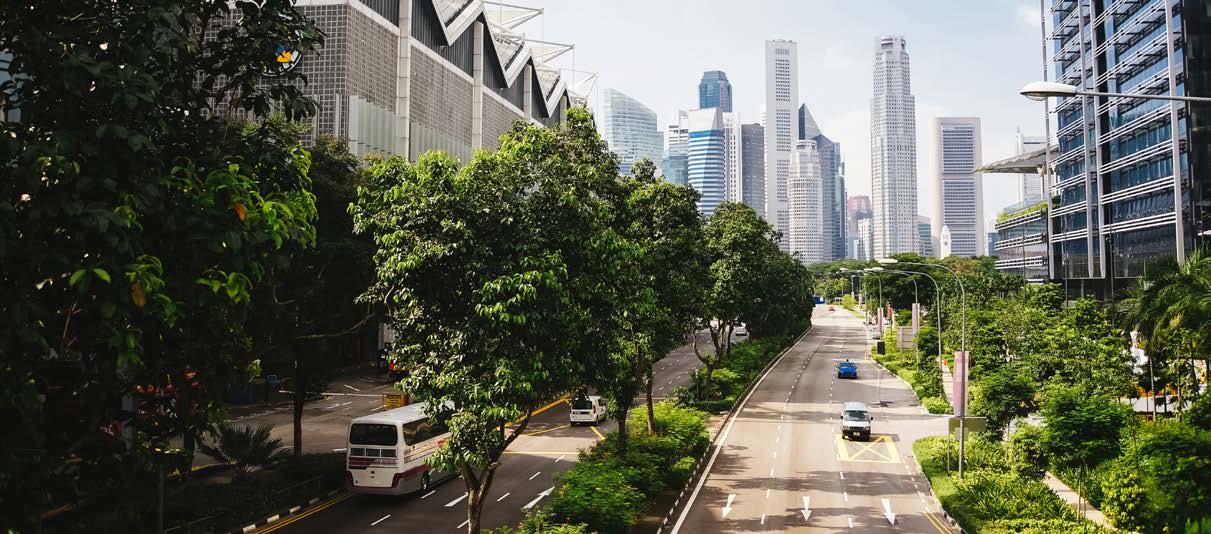
Most of the ambitions of Dutch industrial companies come together in an integrated concept that is called ‘The Sustainable Urban Delta’. The starting point for this concept is that the Netherlands is geographically located in a delta environment with sea, rivers and water enabling food production, transport and trade.
Historically, Dutch industries have played a major role in this and, more recently, this role has evolved to make the urban delta more sustainable as, without design, engineering and manufacturing skills, it would be impossible to live, work, feed and transport people in such an area. This concept of an integrated vision and role for industries has huge potential on a global scale in the light of many international trends and developments.
Every day, about 180,000 people worldwide move from the countryside to the city. It is estimated that within 15 years over 60% of the world’s population will be living in metropolitan areas. Many of these areas are located in a delta such as the Netherlands and, just like the Netherlands, the presence of water in these foreign deltas enables food production, trade and transportation. Furthermore, these cities will need efficient energy and water flows, sustainable food production, green and clean neighbourhoods, decentralized and short supply chains, clever transportation systems and much more. Without all these conditions a certain quality of life will be unattainable for their inhabitants.
The Netherlands itself is like a city in a river delta, based on a single area of conurbation from north of Alkmaar to south of Eindhoven. With that image in mind, the Netherlands and its industry can play an important role in the development of sustainable urban deltas all over the world. In many business cases elements can be discerned that greatly contribute to this development, for example by enhancing the yield of groceries, combining energy networks, introducing organic chemistry and smart urban transport systems. Together they sketch the conceptual outlines of the future in the form of the Sustainable Urban Delta.
11 DUTCH INDUSTRY
INTRODUCTION
DUTCH DREAMS: THE SUSTAINABLE URBAN DELTA

12
TIMES OF CRISIS. TIMES OF CHANGE.
Over the past few years, the world has undergone numerous shocks. The COVID-19 pandemic, conflicts in many regions including the war in Ukraine, a cost-of-living and debt crisis, and climate related disasters are entwined through environmental, economic and social systems that created intensifying global backslides.
But as is often the case, times of crises create opportunities for change: the same interconnections that amplify the crises can generate integrated recovery strategies and address systemic risks.
In its Global Sustainable Development Report (GSDR) 2023, ‘Times of crisis, Times of change’, the UN states that if leaders are able to step up and address climate change, nature and biodiversity loss, demographic change, digitalization, economic inequalities, and violent conflict, this will help to avoid
undermining advances made in the short term and thus build resilience.
Clouds are beginning to part
In its latest World Economic Outlook (January 2024), the International Monetary Fund (IMF) said that it expects the world’s economy to pick up again in 2024 and 2025. Put another way, “The clouds are beginning to part.”
According to the IMF, there is still a risk of new commodity price spikes from geopolitical shocks and supply disruptions which could prolong tight monetary conditions. However, the global economy appears to be moving towards a ‘soft landing’, with inflation declining steadily and growth holding up.
Current disinflation and steady growth increase the likelihood of a receding ‘hard
landing’, and risks to global growth are broadly balanced. Also, faster disinflation could lead to further easing of financial conditions, while looser fiscal policies could imply higher growth and stronger structural reform momentum which could bolster productivity with positive cross-border spillovers.
New missions empowering change
In the Netherlands, with its open economy, the same shocks have disrupted the economy. Yet, at the same time, many of the same opportunities have arisen. In order to empower this positive change, entrepreneurs, scientists and the government have joined forces to strengthen the economy through innovations, capitalizing on international opportunities, improving human capital and investing in scientific research.
13 DUTCH INDUSTRY
NEW WORLD
A
Dutch policy makers, together with the representatives of ten top sectors, formulated twenty-five ‘missions’ to tackle social challenges. These missions focus on ensuring a longer and healthier life expectancy, sufficient clean water and safe food, lower greenhouse gas emissions, affordable sustainable energy and a safe environment in which to live and work. These are ambitious goals that challenge entrepreneurs and scientists to develop pioneering solutions and contribute to the global competitiveness of the Netherlands.
The formulated missions are helping the top sectors to join forces, even more than before. Among the new features of this policy is also the creation of new markets, to ensure that innovations can be widely applied and made available for purchase. If necessary, the government may also act as a launch customer. By including market challengers, innovative entrepreneurs and different regions, the mission-driven policy will be applied more widely with a greater chance of success.
Focus on social challenges and key technologies
Even more extensively than before, the innovative strength of the top sectors is linked to solving social challenges. The world needs large and small solutions for a climate-proof, water-resilient, sustainable, healthy and safe environment, that range from the latest scientific insights and key enabling technologies to practical solutions in design and use. By combining the strengths of
entrepreneurs, scientists and the government, a joint effort is created to address these challenges, even when the road to the best solution has yet to be established.
However, key enabling technologies, such as quantum, nano, photonics and digital technology, will play an important role in achieving pioneering solutions. Examples include: quantum computing which can calculate all possible options in a fraction of the time; special sensors that can determine the exact amount of water, nutrients and light needed for optimal growth; laser techniques, which enable surgeons to perform precise operations with fewer complications and a faster recovery time; or production robots that can customize any product for the best price with great precision and without waste.
A co-creation between entrepreneurs, scientists and government
The missions state a clear need for specific research and innovation. Scientists can extensively research diseases, natural resources and data, so we learn how to better treat and use them with little waste or error. Subsequently, entrepreneurs play a key role in converting innovations into concrete applications and products. They also provide employment and economic opportunities in the Netherlands as well as abroad.
The role of the government is to promote groundbreaking innovations: by investing
in research, amending laws and regulations, entering public-private partnerships, socially responsible procurement, providing financial arrangements and creating new markets.
The Netherlands have a long history of successful cooperation between entrepreneurs, scientists and the government. For example, Dutch water management, illustrated by the famous Delta Works, emerged due to national necessity. While the government played a leading role in search of inventive and pragmatic solutions, these were ultimately developed through research and made financially viable by entrepreneurs far beyond our national borders.
This collaboration between entrepreneurs, scientists and the government, generates smart solutions for global challenges. As a result, we don’t just grow older, but also enjoy a longer and healthier quality of life. We don’t just ‘keep our feet dry’, but are able to eat tasty and reliable food and produce goods durably, so that we shall still have a habitable planet in 30 years.
In addition, these innovations and solutions are also potential export products for a worldwide market. After all, other countries face many of the same challenges as we do. The Netherlands aspires to play a leading role in tackling social challenges and developing key technologies. These missions for the future should also be seen as an investment in overall progress and reinforcing economic opportunities.
14


PROMISING INNOVATIONS FROM THE NETHERLANDS
The Netherlands is an innovative and entrepreneurial country, known for many successful innovations worldwide, such as the invention of the microscope (1595), the dialysis machine (1943) and Wi-Fi (1997). The future also looks promising, thanks to the development of smart greenhouse materials that can adapt to light, climate and crops; cars that can run on sun and rainwater; an irrigation system that anticipates weather conditions and can store water for dry periods; sun-blinds made up of solar cells; a coral nursery which helps repair damaged reefs; new types of fuel; environment-friendly alternatives that protect ships, roads and machines from the elements; infinite recycling of plastic; or an artificial pancreas for people with diabetes.
These are all innovations from recent years or are currently under development.
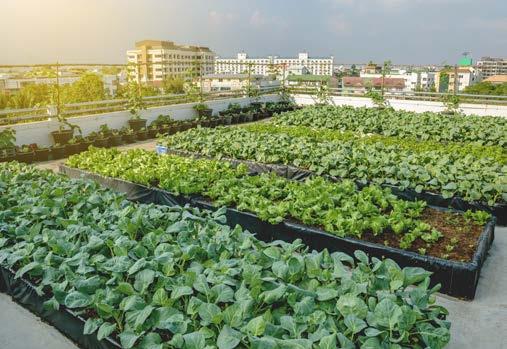
15 DUTCH INDUSTRY A NEW WORLD
From theory to practice
The missions which were drafted in close cooperation with eight Ministries and all Top Sectors, focus on four social themes:
• Energy transition and sustainability
• Agriculture, water, food
• Health and healthcare
• Security
A Knowledge and Innovation Agenda is drawn up for each of the themes and two
separate agendas are also drawn up for key enabling technologies and projects that contribute to the earning capacity of the Netherlands. The financial resources and research capacity are specified in what is termed a ‘Knowledge and Innovation Covenant’. Subsequently, entrepreneurs and researchers can begin to develop new products, technologies and solutions for each challenge and successfully market them all over the world.


SUSTAINABLE DEVELOPMENT GOALS

16
4 themes and 25 challenges
Energy transition and sustainability
• 49% reduction of national greenhouse gas emissions by 2030, aiming for 95% lower emissions by 2050 compared to 1990.
• An entirely carbon-free electricity system by 2050.
• A carbon-free built environment by 2050.
• Carbon-neutral industry with reuse of raw materials and products by 2050.
• Zero-emission mobility of people and goods by 2050.
• A sustainable and completely circular economy by 2050, with resource use halved by 2030.
Agriculture, water and food
• Reduction of the use of raw and auxiliary materials in agriculture and horticulture by 2030 and creating the maximum possible value from all end products and residuals by utilizing them as fully as possible (circular agriculture).
• By 2050, the agricultural and nature system will be net carbon-neutral (Joint mission with energy transition and sustainability).
• The Netherlands will be climate-proof and water-resilient by 2050.
• By 2030, we will produce and consume healthy, safe and sustainable food, while supply chain partners and farmers get a fair price for their produce.
• A sustainable balance between ecological
capacity and water management vs. renewable energy, food, fishing and other economic activities, this balance to be achieved by 2030 for marine waters and by 2050 for rivers, lakes and estuaries.
• The Netherlands is and will remain the best-protected and most viable delta in the world, with timely future-proof measures implemented at a manageable cost.
Health and healthcare
• By 2040, all Dutch citizens will live at least five years longer in good health, while the health inequalities between the lowest and highest socio-economic groups will have decreased by 30%.
• By 2040, the burden of disease resulting from an unhealthy lifestyle and living environment will have decreased by 30%.
• By 2030, the extent of care provided to people within their own living environment (rather than in health-care institutions) will be 50% more than today or such care will be provided 50% more frequently than at present.
• By 2030, the proportion of people with a chronic disease or lifelong disability who can play an active role in society according to their wishes and capabilities will have increased by 25%.
• By 2030, quality of life for people with dementia will have improved by 25%.
Security
• By 2030, organized crime in the Netherlands will have become an excessively high-risk and low-return enterprise, thanks to a better insight into illegal activities and cash flows.
• By 2035, the Netherlands will have a navy fit for the future, which will be able to respond flexibly to unpredictable and unforeseen developments.
• By 2030, the Netherlands will have operationally deployable space-based capabilities for defence and security.
• Cyber security: the Netherlands will be in a position to capitalize, in a secure manner, on the economic and social opportunities offered by digitization.
• By 2030, the armed forces will be fully networked with other services and through the integration of new technologies, so that they can act faster and more effectively than the opponent.
• Supply and demand will come together more quickly to implement successful short-cycle innovations.
• By 2030, security organizations will be capable of collecting new and better data, so that they are always one step ahead of the threat.
• By 2030, the role of security professional will be among the ten most attractive professions in the Netherlands.
17 DUTCH INDUSTRY
A NEW WORLD

18
TOP SECTORS IN THE NETHERLANDS
The Netherlands is one of the twenty largest economies in the world and is a leading global knowledge economy. The country has a longstanding history of invention and trade with other countries, the latter built on adventurous exploration of the world’s oceans. In times of global, social and economic challenges, the Dutch find ways to ‘grow’ innovation and entrepreneurship.
In order to remain a leader in solving global challenges, the Dutch maintain what they term important ‘Top Sectors’. There are ten of these:
• Agri & Food
• Chemistry
• Creative Industry
• Energy
• High Tech Systems & Materials
• Horticulture & Starting Materials
• ICT
• Life Sciences & Health
• Logistics
• Water & Maritime
TOP SECTORS IN THE NETHERLANDS
In this chapter we will look closely at these Dutch Top Sectors, by describing recent and representative facts and figures, typical characteristics, knowledge infrastructure, and their specific challenges, objectives and ambitions. For every sector we will also highlight specific products or themes.
With the business stories in the rest of the book we give entrepreneurs a platform. We encouraged them to talk about how their own company developed during the past years, decades and sometimes even centuries. In this way we have been able to show how Dutch industrial companies continue to operate at the forefront of modern global markets, each in their own sector or niche, as well as specifically discussing how they deal with the global, social and economic challenges that confront them.
19 DUTCH INDUSTRY

20 AGRI & FOOD
The Top Sector Agri & Food is a powerful driving force for the Dutch economy.
It accounts for more than ten per cent of the country’s national income and almost 1 of every ten Dutch employees work in this sector. Every day, the sector makes an important contribution to prosperity by providing sufficient, tasty, safe, and healthy food for the population of the Netherlands and for export in Europe and worldwide.
AGRI & FOOD
The growth of the world population to 9,7 billion people in 2050 and increasing prosperity is making the sector more important, while also creating major challenges for it. These relate to areas such as sustainability, health, and food safety. The sector has a clear agenda for tackling the challenges of the future and for renewing, strengthening, and further expanding its position.
An Agrifood powerhouse
Fuelled by world-class research institutes, universities and public-private partnerships between science, industry and government, the Netherlands is a world leader in agrifood innovation – from farm to fork. As a powerhouse for food, the Netherlands is the second largest exporter of agricultural products in the world, second only to the U.S.
Fifteen out of the top 20 biggest agrifood companies have major production or R&D sites in the Netherlands. These top food companies in the Netherlands include Nestlé, AB InBev, Coca-Cola, Unilever, Heineken, Cargill, and Kraft Heinz. In addition to these food giants, the Netherlands is home to fast-growing innovators like Beyond Meat, Innocent Drinks and Lamb Weston / Meijer. Together, this vast pool of companies and innovators creates an agrifood powerhouse.
Mission driven agenda
The Netherlands faces a number of major challenges in the areas of agriculture, water and food. Together with the Top Sectors Horticulture & Propagation Materials and Water & Maritime a joint Knowledge and Innovation Agenda has been created for six
missions across the years 2024-2027. In this agenda, the three top sectors describe how they will tackle the knowledge and innovation tasks associated with the six missions:
Resilient nature
By 2050, biodiversity and resilience of nature in the Netherlands are sustainably and measurably strengthened. Both society and the economy actively contribute to this.
Sustainable agriculture and horticulture
In 2050, Dutch agriculture and horticulture will be integrally sustainable: economically future-proof, resistant against a changing climate and fitting within the boundaries of the natural environment, and contributing to the well-being of people and animals.
21 DUTCH INDUSTRY
TOP SECTORS IN THE NETHERLANDS
Vital rural areas in a climate-proof country
In 2050, the design and use of rural and urban area will fit within the preconditions of natural systems such as climate, water and soil. For both types of areas, there is a coherent perspective. This will contribute to broad prosperity for who live, work and recreate there.
Sustainable and valued food that is healthy, accessible and safe
In 2050, the Dutch food system will be ecologically, socially and economically sustainable, with an ecological footprint half as large as in 2015. Food in the Netherlands is in addition to sustainable also tasty, healthy and safe. The entire food chain is economically healthy.
Sustainable and safe use of the North Sea and other larger waters
In 2050, economic activity on the North Sea and other major Dutch waters, including energy production, food production, shipping and fishing, will fit within ecological preconditions. Sufficient fresh water of good quality is guaranteed.
Safe and resilient delta
In 2050, the Netherlands will be, despite rising sea levels, and more variable supply of river water, still a safe and resilient delta. Land and water are protected with affordable, circular, climate-neutral and nature-inclusive measures. Ports are accessible and rivers, canals and the North Sea are safely navigable.
Next to these missions key technologies will be developed that help the sectors to achieve their missions and goals more effectively, faster and/or more efficiently. The agenda builds on the previous knowledge and innovation agendas. More intensive cooperation between the three top sectors, companies, knowledge institutions and the governments (national and provincial) will ensure a more integrated approach to the topics at stake. New themes are restoration and protection of nature, biodiversity and broad prosperity in rural areas.
By working together and investing in knowledge development and innovation, a major contribution can be made to solving societal issues, both in the Netherlands and abroad. The agenda will also ensure that the Netherlands will remain as the global hotspot for smart solutions to future problems in agriculture, horticulture and the water sector.

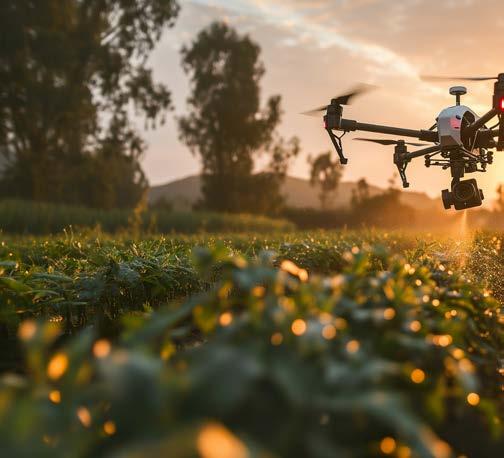
22
AGRI & FOOD






23 DUTCH INDUSTRY
NETHERLANDS
TOP SECTORS IN THE
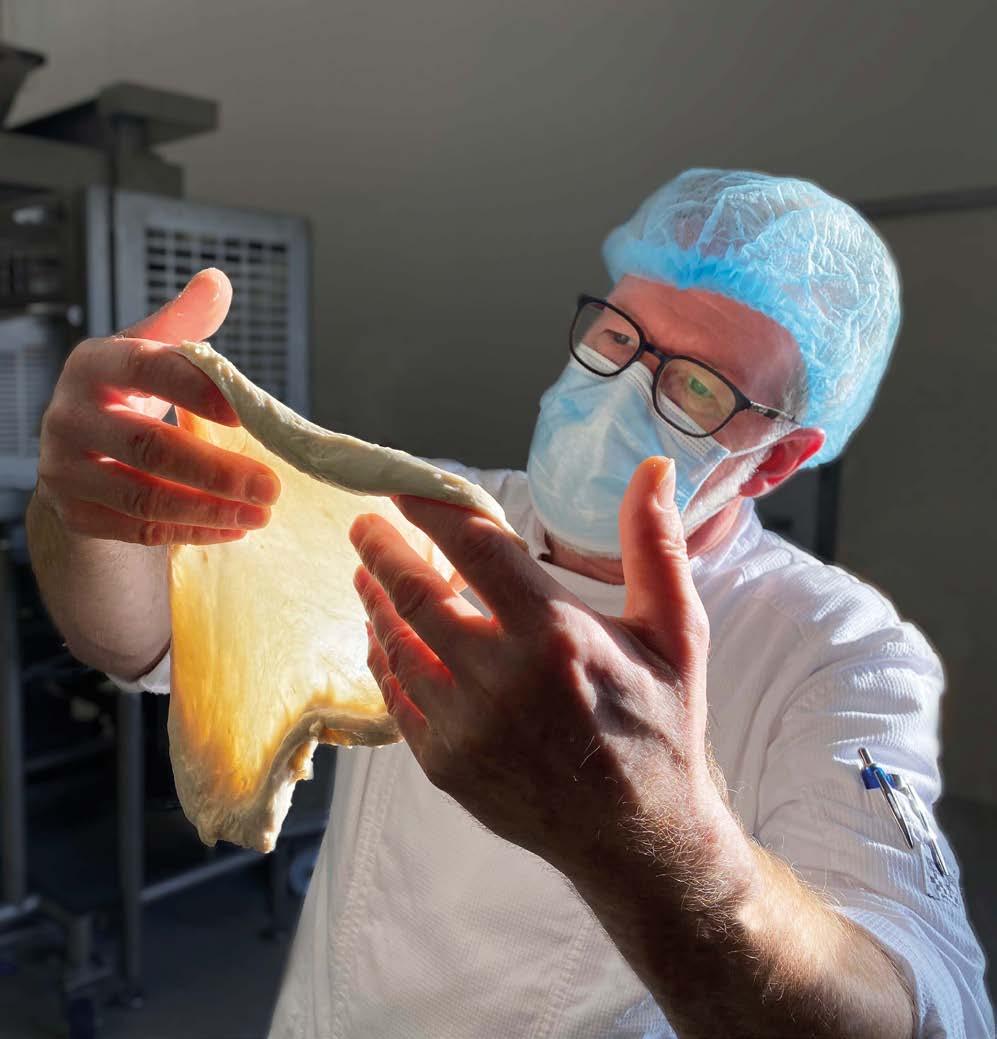
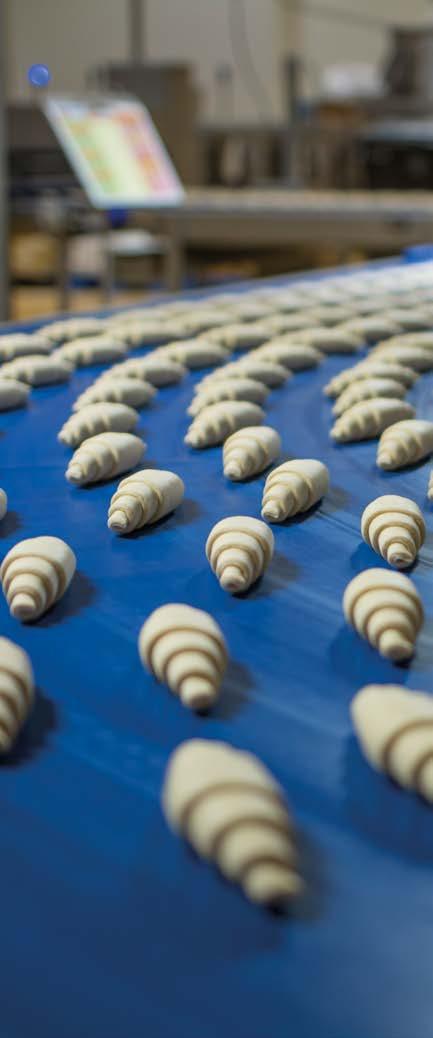
24 AGRI & FOOD
TOP SECTORS IN THE NETHERLANDS



Tough tasks, powerful parties, international reach
The tasks present considerable challenges for the public and private sector and knowledge institutions. In the fields of agriculture and in water and food, the Netherlands is a global leader in the development of smart, efficient solutions. This puts the top sectors Agri & Food, Horticulture & Propagation Materials and Water & Maritime in an excellent position to engage with these challenges and remain world leaders in sustainable solutions for global social issues in agriculture, water and food.
In line with national and international agendas
The development of new knowledge and innovations as mentioned above is in line with the most important international policy agendas. On a European level, there is a close link with the ambitions of Food 2030, Agricultural Research & Innovation, the Biodiversity Strategy and the Horizon Europe programme of the EU commission. On a global level, a link is being made with the Sustainable Development Goals of the UN: No Poverty, Zero Hunger, Clean Water and Sanitation, Decent work and Economic growth, Sustainable cities, Responsible consumption and production, Climate Action and Protection of bio-diversity.
25 DUTCH INDUSTRY

26 CHEMISTRY
TOP SECTORS IN THE NETHERLANDS
The Netherlands is one of Europe’s leading suppliers of chemical products and services. The Dutch Chemistry industry works methodically to find solutions for society’s great challenges, especially for the energy and raw materials transition. Chemistry companies work together on production and innovation with knowledge institutions and government organizations and take advantage of regional clustering.
CHEMISTRY
ChemistryNL is the name of this Top Sector that executes the mission-driven top sector and innovation policy of the Ministry of Economic Affairs and Climate.
The drive towards a ‘Green Chemistry Country’ for a circular economy
Like other industries the world over, the chemistry industry must deal with increasing scarcity of natural resources. The Dutch see this as an opportunity to transition to greener chemicals for sustainability and circularity. This means that environmentally friendly source materials should be utilized to develop smart materials and solutions, and new processes developed that reduce the production of unwanted by products, waste materials and CO2 emissions.
The goal by 2050 is to be recognized as the ‘Green Chemistry Country ‘– founded on sustainable resource streams and clean and sustainable production processes – and to be ranked among the top-three producers of high-tech materials worldwide.
The Dutch open and cooperative platform of chemical solutions for global challenges
Global challenges in the field of climate change, circularity, mobility, health and food provide an opportunity for the chemical industry. The Chemistry sector in the Netherlands provides a platform where various stakeholders can connect with each other and co-create new sustainable solutions. The Netherlands offers a vibrant
home to over 2,000 chemical companies, including 18 out of the 25 major chemical companies in the world. And it continues to attract investments from both major companies like SABIC, Neste, Mitsui and Teijin, as well as from innovative new foreign scale-ups.
This ecosystem of innovative chemical startups and SMEs finds public-private partnerships (PPPs), university campuses and knowledge institutes focused on finding future solutions. This Dutch chemistry network can support companies in their ambitions to contribute to solutions to global challenges, next to providing them with an ideal springboard to reach the rest of Europe and beyond.
27 DUTCH INDUSTRY
Mission driven cross sectoral impact
The chemistry sector is ideally positioned to support the Top Sectors in achieving the mission objectives of the four societal challenges “Energy transition and sustainability”, “Agriculture, water and food”, “Health and care” and “Security”. After all, chemistry produces many substances and materials that other industrial sectors use for manufacturing their products. So, where chemistry becomes more sustainable, society becomes more sustainable too.
• Take, for example, the developments in aromatics, such as benzene, toluene, xylene and phenol, which are used by the chemical industry for the production of plastics, chemicals and coatings. To date, these have been obtained from crude oil and are therefore responsible for significant CO2 emissions. That is why the chemical industry is now working on obtaining aromatics from plant waste. This will have a serious impact, because fossil-based aromatics account for no less than 40% of all chemical ingredients in the world.
• Far more can be said about how chemistry is being made more sustainable. For example, the use of resources such as biomass, processed waste and unraveled polymers. Then there are also electrochemical processes for the conversion of hydrogen, CO2, nitrogen or biomass into fuels and resources for the chemical sector.
• And soft advanced materials should not be forgotten either. This chemical technology makes it possible to build materials from the molecular level upwards and to provide them with qualities such as safety, strength, lightness of weight, a longer durability and lower costs. All of that is done to reduce the CO2 footprint as much as possible. One application could be high-quality, fiber-reinforced thermoplastics as a plate material for superlight cars that consume less energy and produce fewer emissions.
• Another example is the chemical production of thermochromic coatings and foils for glazing that improve light reflection thus reducing the necessity for air-conditioning.
This same positive influence on industrial value chains assumes the safe design of existing and new chemical substances, materials, products and processes. Those can be (re)designed from the molecular level upwards so that highly alarming substances can be banished and emissions prevented. Then both people and the environment will no longer be exposed to toxic substances, and materials and products in a circular economy will be safe to reuse.



28
CHEMISTRY
TOP SECTORS IN THE NETHERLANDS


The future of chemistry
A collaboration between industry, research institutes, and government, ChemistryNL promotes public-private cooperation in chemical science and innovation in the Netherlands. New societal challenges and scientific developments require significant changes in education, research and innovation, globally, and to achieve them; the Dutch chemistry sector has set the following three ambitious goals:
• By 2050, the Netherlands will rank the highest in the world when it comes to green and sustainable chemistry.
• By 2050, the Netherlands will be in the global top 3 of producers of smart materials with a high added value and smart solutions.
• Thanks to high quality and ground-breaking scientific research, new areas of science and innovation will open up.
Furthermore, two cross-sectoral priorities are defined: the biobased economy and resource efficiency. To reach these green and sustainable goals, Dutch companies, scientists and knowledge institutions collaborate by way of the main thrusts below:
• Chemistry of Advanced Materials
• Chemical Conversion, Process Technology & Synthesis
• Chemistry of Energy Materials
• Chemical Sensing and Enabling Technologies
• Chemistry of Life
29 DUTCH INDUSTRY
Dutch ecosystems of
educations and R&D
At the heart of the Dutch chemistry ecosystem are world-class education, cuttingedge research and robust public-private R&D partnerships that support inter-company and public-private research.
The Netherlands hosts key R&D labs of for example DSM, SABIC, AkzoNobel, Shell, Avantium, Corbion and Arlanxeo and also has a vibrant ecosystem of innovative chemistry startups and SMEs. Public-private partnerships (PPPs), campuses, iLabs, COCI’s and tax incentives to stimulate R&D. PPPs include consortia on sustainable processing, materials, electrochemistry, biobased and novel chemicals.
Finding collaboration between research institutes, companies and government is in the genes of Dutch research and development, leading to new solutions for the chemical industry in smart manufacturing and digitalization.

DID YOU KNOW?
• The Dutch Chemical industry excels in three sustainable areas: industrial biotechnology; high-performance materials and fine chemistry.
• The Netherlands is home to world-class R&D institutes for fundamental and applied research such as TNO, Delft University, Twente University, Wageningen University and Eindhoven University.
• At the Port of Rotterdam - Europe’s largest harbour - Netherlands-based chemical companies tap into one of the largest refining and chemical clusters in the world.
• Within the strong chemistry community, the Dutch cooperate via long-term publicprivate partnerships (such as the lnstitute for Sustainable Process Technology and the Dutch Polymer lnstitute) as well as through ‘open innovation’ in the seven Centres for Open Chemical lnnovation (COCI): Green Chemistry
Campus, Chemelot, Biotech Campus, Green PAC, Pivot Park, Plant One and S/Park.
• In the area of advanced materials (polymers, composites, etc.), the Netherlands consistently punches above its weight, producing worldrenowned innovation in materials and composites, such as Twaron, Dyneema, and Glare, as well as developing folding tires for the automotive industry.
• Around 80% of chemical products made in The Netherlands are exported. One-fifth of all Dutch exported goods come from the Chemistry sector.
• lnnovation is vital to achieving the industry’s ambitious goals - the Dutch Chemistry industry invests some 2.5% of its revenues to in-house R&D; around 1.4 billion euros per year.
• The Netherlands plays host to 18 of the world’s top-25 chemical Companies, including BASF, AkzoNobel, LyondellBasell, SABIC, Teijin and Dow.
30
CHEMISTRY

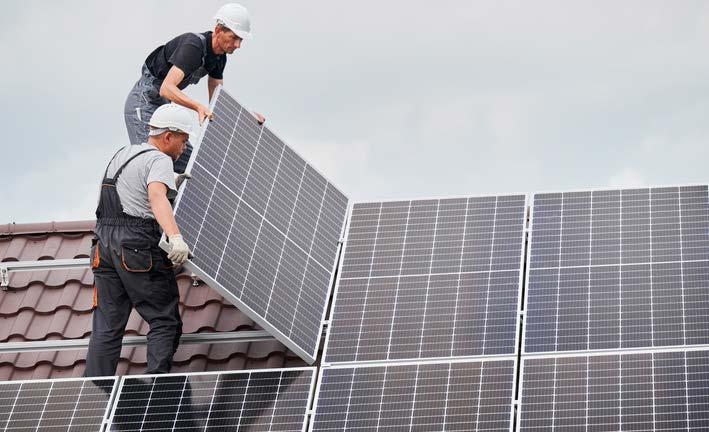

31 DUTCH INDUSTRY
NETHERLANDS
TOP SECTORS IN THE

32
INDUSTRY
CREATIVE
© PRADA SS2024 MENSWEAR SHOW PHOTO BY AGOSTINO OSIO
TOP SECTORS IN THE NETHERLANDS
Built on a rich artistic history including Vermeer, Rembrandt, Mondrian and Escher, the creative industry in the Netherlands is known for its entrepreneurial spirit and out-of-the-box thinking. In fact, the Netherlands generates more creative output than almost any other country in the world.
CREATIVE INDUSTRY
The Creative Industry top sector comprises various disciplines, such as architecture, design, fashion, media and ICT, gaming, and pop music. This top sector plays an important role in prompting innovation in other sectors, and in solving societal challenges in such areas as healthcare, security, and energy.
Ranked in the global top 10 for trade, jobs and brands, the Dutch creative industry fuels innovation in the Netherlands. More than 30 Dutch knowledge institutions offer Creative Arts and Design courses. Highly skilled, multilingual workers come from all over the world to find opportunity in the Netherlands’ creative agencies. Here, creatives thrive thanks to the Dutch quality of life and topranked digital and transport infrastructure. The Netherlands thus offers the ideal test market for creative companies looking to pursue innovation in Europe.
CREATIVE INDUSTRY?
The creative industry is a collective term for all designers, creators and adjacent organizations. For example, fashion design, marketing, social design, photography, events, visual arts, production houses and (pop) venues. Creative professionals often work in and for other sectors. Examples include healthcare, energy, security and construction. What binds creative professionals together is that they all use creativity as a means to create value.
Creative launchpad of Europe
The Netherlands is a global hub for media and broadcasting, housing many of the industry’s biggest players. In particular, Amsterdam and Hilversum are hotbeds for media and entertainment companies, including NEP Group, Netflix, Discovery and Disney. On top of that, the Dutch have a knack for reaching audiences.
Creativity and sustainability are woven into the Dutch fashion and apparel sectors. Companies like Tommy Hilfiger, Asics, and Patagonia are drawn to this unique combination and have established European headquarters in the Netherlands. In Amsterdam, Denim City is pioneering the future of the jeans industry. Providing access to most European countries by road transport, the Netherlands is a strong logistics
33 DUTCH INDUSTRY
CREATIVE INDUSTRY
base for fashion and apparel companies, including Crocs, Michael Kors and Decathlon. World-class institutions like Design Academy Eindhoven, Amsterdam Fashion Institute and Arnhem Academy of Art & Design produce some of the best and brightest talent in the field. From high-quality design, to headquarters and logistics, to sales and marketing, the Netherlands is the place to be for fashion companies.
As a result, the creative industry is growing faster than the rest of the Dutch economy. In addition, it makes a significant contribution to employment and the growth of new companies in the Netherlands. The sector pursues innovation in other sectors and helps to find solutions to social challenges. To keep the sector top of the bill, state of the art knowledge is essential. Thus, the Dutch creative industry also holds a top position in the international arena.

CLICKNL
CLICKNL – is the TKI of the Top Sector Creative Industry, and formulates what knowledge and methods are required to achieve a resilient and relevant creative sector. In addition, it drives the agenda of the creative sector to make an important contribution to the mission driven innovation policy and the missions from other top sectors.
Knowledge
Together with creative professionals and researchers, CLICKNL draws up the agenda for the creative industry named KIA Resilience. This describes how the creative industry contributes to (social) challenges and what knowledge the creative professional needs to be able to do this. With this agenda they influence and steer subsidy schemes, programs and projects. They also look at the application and development of key methodologies/KEM: methods that help to tackle issues. They inspire and encourage the use of previously acquired knowledge in practice, by sharing inspiring content (including cases and news) with both online and physically (events).
Collaboration
CLICKNL builds programs and projects around (social) challenges in which the creative industry plays an important role.
Creativity challenges
The endless streams of technological developments impact the way people interact, live and work together. Creative professionals flourish in these conditions: being in the business of connecting, enticing and mobilizing people by providing different insights and portraying panoramic views, often out of more than sheer occupational interest. From a cultural and societal perspective, but also with regard to economic value, creative professionals in broad partnerships develop solutions that bring support for change. The sector is thriving, also internationally. To maintain this position and to be able to face the challenges now and in the future, creative professionals are investing in new knowledge, methods and techniques supported by an agenda which offers the vision and ambition for that crucial knowledge base.
Knowledge and Innovation agenda
Society is the creative professional’s playing field. Due to the major transitions that are currently happening in society, the way in which the professional works and collaborates is changing. The role of the creative professional has become more fluid than before. At the same time, more is expected of the rationale behind developed interventions, and the complexity of issues and solutions is increasing. To support the creative professional in this, partnership between the creative industry and knowledge institutes is crucial.
34
TOP SECTORS IN THE NETHERLANDS

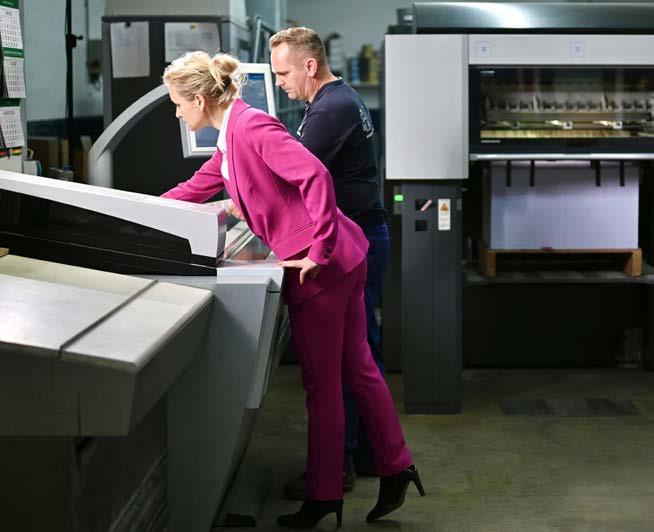


35 DUTCH INDUSTRY
© COUNTRYSIDE | PHOTOGRAPH BY LAURIAN GHINITOIU COURTESY
CREATIVE INDUSTRY
Creative industry and Key enabling methodologies (KEM’s)
It is widely recognized in the approach and discussions surrounding the mission-driven innovation policy that all Top Sectors are pursuing, that a multidisciplinary approach is required. Investments must not be made only in technology, but also in social and cultural aspects. The approach to this complex problem, working multidisciplinary and the themes of the missions fit the creative industry well.
Affordable healthcare, conservation of resources and nature, reduced greenhouse gas emissions, affordable and sustainable energy. These are just a small sample of the many social challenges we face today. Innovative solutions are needed to take targeted action. But how do we develop these solutions and ensure the right societal impact? That’s where key methodologies, or KEMs, are needed. KEMs (Key Enabling Methodologies) are methods, strategies, tools and practices that give you tools to realize innovations. KEMs are relevant to anyone working on a complex, societal puzzle: business, education/knowledge institutions, thinkers, makers, policy makers, consultants, clients, nonprofit organizations and civic initiatives.
For this reason, CLICKNL, in close cooperation with the creative industry and knowledge community, has drawn up its research agenda for the KEMs. This agenda was created, on the one hand, to improve our knowledge about KEMs and stimulate their development.

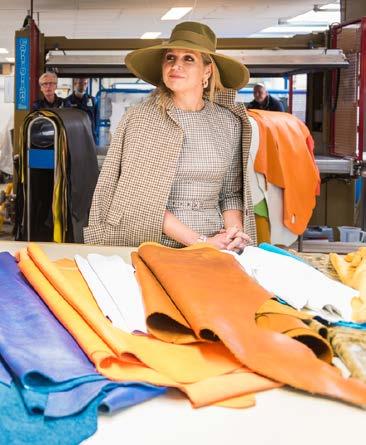

36
© MUSEO EGIZIO | PHOTOGRAPH BY OMA

37 DUTCH INDUSTRY
IN THE NETHERLANDS
TOP SECTORS

38 ENERGY
The Dutch energy sector enjoys a strong global position. This success is founded on a typically Dutch quality: the willingness to share knowledge within tight-knit alliances of business, research, NGOs, and government. This has made the sector a front-runner in public-private research and open innovation partnerships and it is exemplary for how it approaches complex energy issues.
ENERGY
Energy Innovation NL is a public-private partnership for energy innovation financially supported by the Ministry of Economic Affairs and Climate. Energy Innovation NL encourages new initiatives that accelerate the transition to a sustainable energy system. In this way new activities are being created while strengthening the Dutch international competitive position. Energy Innovation NL also contributes to the specific missions needed for the energy transition, which have been formulated by the Dutch government.
Drive towards a climate neutral energy system
Our fossil fuel-based energy system is making way for a renewable and more decentralized energy supply. Acceleration of this energy transition contributes to a
sustainable economic growth and a healthy society which includes economic and social justice and a clean environment. It is through the power of Dutch energy innovations that we can transition to an affordable, reliable and sustainable energy system. The Netherlands has made substantial strides in the areas of renewable energy and energy efficiency, attaining a leading position in offshore wind, deployment of solar panels, and development of sustainable heating solutions for buildings. The energy sector contributes substantially to Dutch national revenue, exports and employment, both directly and indirectly.
Close collaboration is key
Cooperation is especially important when it comes to developing and rolling out technological, social and institutional
innovations. From boosting energy efficiency to enabling energy transition, while also building a circular economy, ‘cleantech’ companies will have a decisive impact on the future of our planet. In the Netherlands, we are proud to have a large and sophisticated technology sector, with hundreds of companies focusing on sustainable solutions in many key areas: from renewable energy production to biobased technologies and energy-efficient process technology. If anything characterizes their portfolio of clean technologies as ‘typically Dutch’, it is probably that many of them bear the stamp of close collaboration.
Strong in fundamental research
The Netherlands has a strong backbone of internationally renowned research groups, both at universities and independent
39 DUTCH INDUSTRY
TOP SECTORS IN THE NETHERLANDS
ENERGY
knowledge institutes. These have, for decades, been conducting groundbreaking research in such diverse areas as Solar-PV technology and biobased materials. Knowledge has been built up, in some cases facilitated by the the Dutch Research Council (NWO), by several university groups as well as by the Netherlands Organization for Applied Scientific Research, (TNO) which together comprise one of Europe’s largest energy research organizations. Research in the field of energy technology in the Netherlands is held in high regard. For university research this is apparent from the high score on the citation index on which the Netherlands ranks fourth after Switzerland, Denmark and Singapore. Energy Innovation NL facilitates close collaboration between these research groups, NWO and TNO and government agencies and the private sector.
Driving energy innovations
Within this top sector, four ‘Top Consortia for Knowledge and Innovation’ (TKIs) work with governments, the business community, knowledge institutes, partnerships, NGOs and regions. They focus on the entire innovation chain: from fundamental energy research via applied research to demonstration and exploitation:
TKI Offshore Energy: Offshore energy is an essential component for a successful energy transition in the Netherlands. This TKI stimulates and facilitates offshore innovations through research, development and demonstration on three themes: cost reduction
and optimization, integration into the energy system and integration into the environment. The aim of this is to enable offshore wind energy to make a major contribution to the energy transition in the Netherlands and beyond, and to strengthen the competitive position of the relevant companies in the international export market.
EXAMPLE: NEW STANDARDS IN THE WIND TURBINE INDUSTRY
The Haliade-X prototype in the Port of Rotterdam has set several new standards in the field of sustainable wind energy. This wind turbine is 248 meters and has blades of 107 meters. It produces the largest energy yield ever from a single wind turbine. Annually, the Haliade-X can generate 46.3 GWh of electricity: as a consequence, CO2 emissions are reduced by 28.1 kilotons.
TKI Urban Energy: This TKI stimulates the development of innovations for a sustainable, reliable and affordable energy system in the built environment. It supports partnerships with small businesses, larger companies, research institutes, universities, potential customers and other stakeholders active in the energy innovation sector. Over 450 innovation projects have been started in the last few years, on topics ranging from solar power technology, reduction in energy consumption, sustainable heating and cooling systems, and smart IT solutions.
EXAMPLE: ENERGY-EFFICIENT AND CLIMATE-FRIENDLY AIR CONDITIONING
The air conditioning ICECUBE comes without harmful refrigerants. It is made of recycled plastic and is competitive with its traditional counterparts. Because it uses ‘dew point cooling’ it uses 80% less energy. The operating costs remain low because time-consuming registration and expensive control of harmful refrigerants are not required.
TKI Hydrogen: Hydrogen, Green gases, CCUS (Carbon Capture, Utilization and Storage) and Geo-energy, the last focusing on the use of the sub-surface for the energy transition, are the main focus areas of this TKI. In doing so, it builds on the traditionally strong position of the gas sector in the Netherlands, by helping knowledge institutions and companies to develop, demonstrate and apply sustainable and innovative technologies. These also include the optimal use of existing knowledge, expertise and assets such as pipelines, locations and gas storage. New Gas has more than 400 cooperation partners such as Green Gas Netherlands, the CATO CCS consortium, the GEO Energy consortium and the Dutch Hydrogen Platform.
TKI Energy and Industry: Dutch industry is responsible for approximately 40% of the greenhouse gas emissions in our country. This demands that the efficiency of the energy use in this sector is increased and the
40



41 DUTCH INDUSTRY
NETHERLANDS
TOP SECTORS IN THE
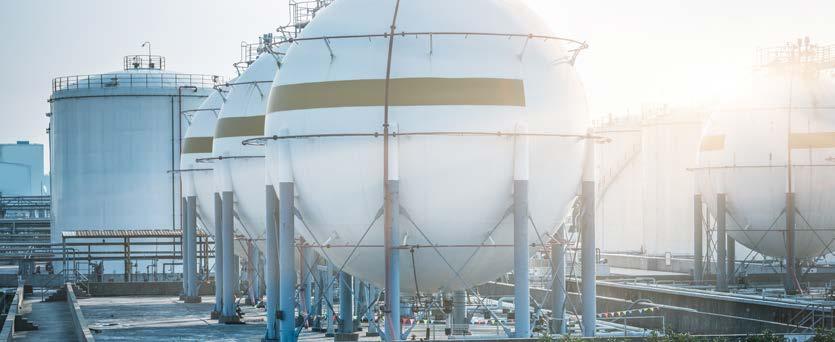
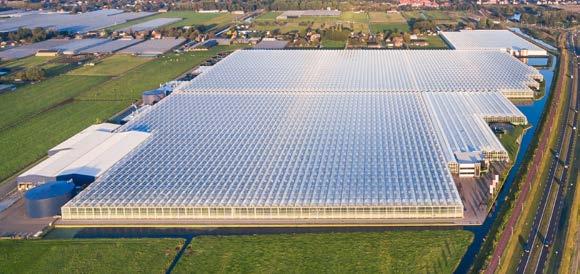



42
ENERGY
sources for the required energy are shifted to sustainable ones. The aim of this TKI is to realize a sustainable and inclusive industry that operates within the space of climate and environment. With about a hundred projects in their portfolio, the TKI sees that the Dutch process industry is gradually becoming a cradle for innovation and its application.
EXAMPLE: REDUCING ENERGY COSTS AND CO2 EMISSIONS IN THE DUTCH PROCESS INDUSTRY
Dow Benelux B.V. developed the steam recompressor, which considerably reduces CO2 emissions. The recompressor can sometimes reuse energy produced from steam up to five times, for example in the main process of cracking molecules, thus enabling production of more new chemical compounds.
The Intersecting Themes
The tremendous challenges associated with the global energy transition require new innovations and new ways of working. Often these are not sector-specific but rather touch on essential insights and challenges across multiple sectors. Therefore Energy Innovation NL works on several intersecting themes:
System integration: System integration in the context of the energy transition means
the coordinated integration of chains of different energy carriers and end-use sectors into one sustainable, reliable, affordable, and safe energy system, with broad societal support. An energy system encompasses the entire energy value chain, including everything necessary to bring energy from generation to consumption. This integrated energy system operates at different spatial and temporal scales, from local to Northwestern European scale and from seconds to several decades.
Socially Responsible Innovation in Energy:
The aim of the programme is to stimulate other innovation programmes to work in a more integrated, co-creative manner on innovations that contribute to a more sustainable society. Several interests are weighed up to discover where possibilities arise for multiple-value solutions. For example, these might include wind parks, built and operated in such a way that underwater ecosystems are restored and biodiversity flourishes, leading to a healthier fish population.
Human Capital Agenda:
Tens of thousands of additional workers are needed to achieve climate goals. Energy Innovation NL is making efforts to pass on knowledge and organizing capacity through skills building. Due to the energy transition, education and the business community will have to cooperate even more closely on regional levels to achieve this, in what are termed
‘Learning Communities’. This approach will ensure that future staff is trained in the right way and shortages in personnel will not hamper the implementation of the energy transition.
Digitalization: This programme aims to utilize the potential of digitization towards achieving a sustainable energy system. Digital developments create new possibilities and change the way people live and work. In addition to sustainable sources and changing energy networks, the energy transition also entails a changing society, in which digitization enables us to deal with energy in a whole new way. Digitization provides a compass for the desired energy solutions of the future.
Financing Desk: Finding the right finance is essential for successfully developing the energy innovations. This is seen by entrepreneurs from Energy Innovation NL as the main challenge for valorizing such innovation. To prevent innovation from failing prematurely and/or valuable time being lost, the Financing Desk offers help to SME entrepreneurs who are struggling with a financing issue.
43 DUTCH INDUSTRY
TOP SECTORS IN THE NETHERLANDS

44 HIGH TECH SYSTEMS & MATERIALS
From satellites the size of a milk bottle to micro-chips processing megabits of information, innovations play a key role in our fast-moving high-tech world. Dutch innovations are intelligent, accurate and efficient. They are utilised worldwide in medical equipment, semi-conductor manufacture, cars, logistics systems, aeroplanes, satellites and energy systems. By creating the right framework and conditions, the Netherlands supports innovation at all levels, be it big or small; or even tiny.
HIGH TECH SYSTEMS AND MATERIALS
Today, the Netherlands continues to pioneer new technology to help solve major challenges. Holland High Tech (HHT), the Top Sector High Tech Systems and Materials, unites industry, academia and government to play a crucial role the urgent transitions that are necessary: the energy transition, the development of a circular economy and the development of digitalisation including smart industry and key enabling technologies.
The ‘ecosystem’ of Holland High Tech comprises 100,000 enterprises where more than 500,000 professionals work. Multinationals, SMEs, start-ups as well as scale-ups. This industry creates 166 billion euros in production value, and 70 billion euros in export. Annually, it invests 6.1 billion euros in R&D, of which over 500 million euros is in collaborative programmes with academia
and government, both within and outside the Netherlands. More than half of all private R&D in the Netherlands is invested by hightech companies.
This ecosystem develops key enabling technologies (KETs) for solutions to the grand societal challenges of our time, by realising products and services that make these solutions economically feasible. Key enabling technologies are omnipresent in consumer and business applications ranging from telecommunication, the internet and energy supply through to medical instrumentation, automobiles, airplanes and satellites. Holland High Tech is the largest top sector by some distance in terms of production, added value, exports, and employment.
Success in our top sector critically depends on the availability of qualified personnel. Knowledge workers in technology continue to be scarce. Education and training in applied and application- oriented science are essential, as is access to the international labour market. The industry and research organisations operate in a global value chain. HHT actively collaborates with international innovation attachés to enlarge the global Dutch network.
The urgent transitions
With fifteen innovation roadmaps and a coordinating role in the Knowledge and Innovation Agendas (KIA’s) Key Enabling Technologies and the Agenda Security, Holland High Tech targets the urgent transitions with a focus on economic and societal impact. In a
45 DUTCH INDUSTRY
TOP SECTORS IN THE NETHERLANDS
HIGH TECH SYSTEMS & MATERIALS
continuously changing landscape of financing support for research and innovation, Holland High Tech strives for ways to add value to both the sector and current transitions. This framework provides the connection between the bottom-up programming of the HTSM technology roadmap teams and the top-down programming in the Dutch mission-driven top sector and Innovation Policy.
• Circular economy
The Netherlands wants a completely circular economy by 2050. Holland High Tech recognizes that the circular economy is becoming an ever more important topic for the high-tech manufacturing industry. We are devoted to this theme, because we are convinced that the high-tech sector must provide an essential contribution to achieve the objectives of a circular economy as well as develop the inventions that make it possible.
• Energy transition
The energy transition is an important theme in the mission-driven innovation policy. The Netherlands wants to be completely climate-neutral by 2050. Before 2030, the target is to achieve a 55% reduction in CO2 emissions compared with 1990. We will achieve this through making the electricity system and built environment more sustainable and through realising a climate-neutral and competitive industry, emission-free mobility and climate-neutral agriculture.
EXAMPLE: BREAKTHROUGH IN QUBIT TECHNOLOGY
Engineers from Intel and scientists from QuTech have delivered the first qubit made in the very same industrial manufacturing facilities that mass-produce conventional computer chips. This advancement has been a long-standing goal due to its promise of scalability. The breakthrough is a crucial step towards scaling to the thousands of qubits that are needed for practical quantum computation.
The industrial manufacturing of a single qubit device is now a fact. Parallel efforts are geared towards controlling multiple spin qubits and improving the quality of the qubit control. Combined, these advances will build a solid foundation to realize full-scale quantum computing integrating millions of qubits.
• Digitalization & Smart Industry
Digitalization including smart industry are changing global economies and societies at breakneck speed. New digital technologies act as a catalyst for the development of the circular economy, the energy transition as well as worldwide (cyber)securtity and quality of living. We stimulate new digital technologies and innovations, examples include quantum computing and laser satellite communication.
EXAMPLE: EARLY WARNING SCAN FOR BREAST CANCER USING 3-D TECHNOLOGY
Breast cancer is the world’s most prevalent cancer. The lives of many women could be saved if screening could be done more cheaply, less invasively and could better detect malignant cells earlier on. A collaboration between 3-D photographer Tom Sanders, the Jheronimus Academy of Data Science in Den Bosch, Holland High Tech and medical equipment supplier Demcon, have started to develop the Early Warning Scan using 3-D technology which measures changes in the movement of breast tissue.

46
TOP SECTORS IN THE NETHERLANDS
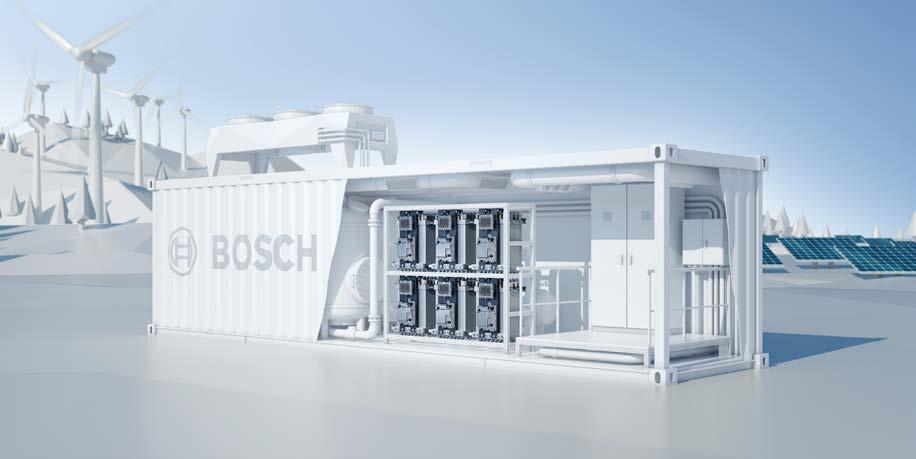
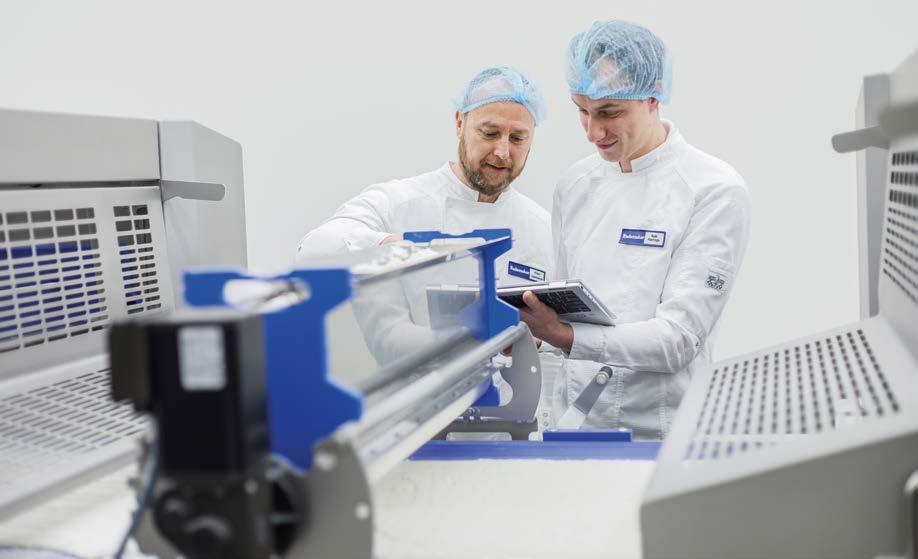
• Key enabling technologies
The Dutch high-tech sector develops solutions for societal challenges, based on key enabling technologies, through realising products and services that are economically viable and where the Netherlands play a key role in the international field. Examples are integrated photonics, Quantum technologies, Imaging technologies, Mechatronics and opto-mechatronics, Artificial Intelligence, Data science, Energy materials, Micro-electronics and Cybersecurity.
ELECTRIC FUEL CELL / HYDROGEN
The Netherlands wants to achieve zero-emission mobility for people and goods by 2050. This calls for decisions to be taken now on implementing smart and sustainable systems in the near future. The Netherlands is among the leaders in the standardisation and rollout of smart charging infrastructure and renewable energy storage. After introducing EV in 2010, the country has one of the densest charging networks in the world with hundreds of fast-charging stations and tens of thousands of regular charging stations. By 2030, an estimated annual average of 400,000 electric vehicles will take to Dutch roads.
47 DUTCH INDUSTRY

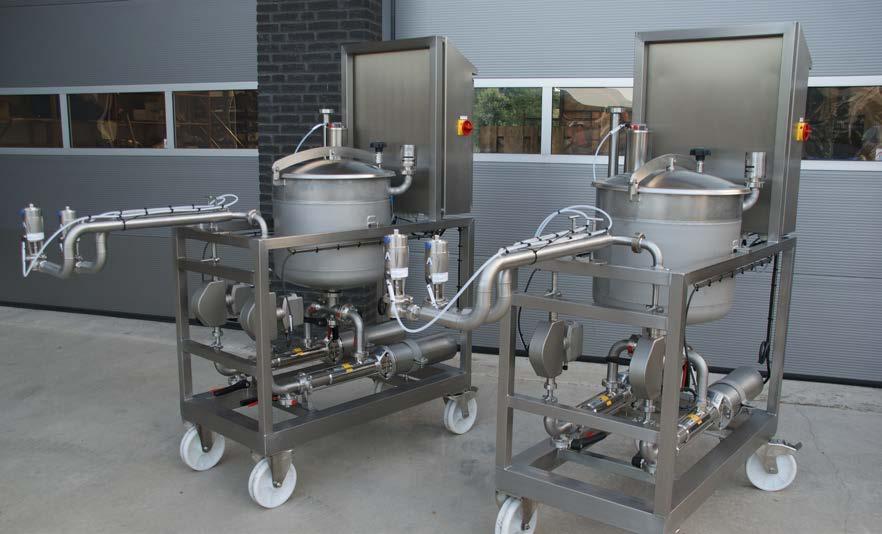
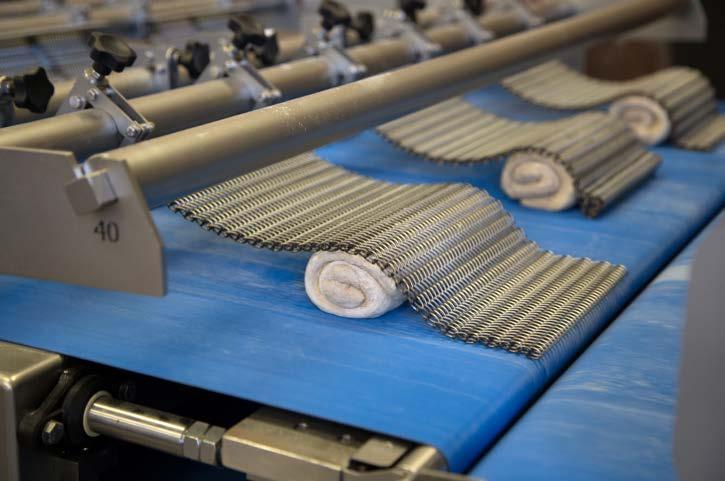

48 HIGH TECH SYSTEMS & MATERIALS
A NEW APPROACH TO COMPONENT DESIGN AND MANUFACTURING
Independently of the energy source, the weight of a transportation system always has negative effects on system efficiency and eventually on the environment. Many of the components of transportation systems are single material products and are often overdesigned to meet a wide range of possible applications and conditions. Conventional manufacturing methods (casting, forging and machining from solid blocks) cannot produce locally tailored properties and are thus inefficient and wasteful.
Additive manufacturing (AM) has already revolutionized the way we approach product design and manufacturing. The next paradigm shift is in Multi-Material AM, which allows for simultaneous printing of different materials with functional properties, thus enabling component design with “pre-programmed” site-specific properties. Combining light weight with optimal local properties is the holy grail of the transport sector. Reducing a car’s weight by 100 kg triggers a reduction in CO2 emissions of 7.6 g/km. For the Netherlands alone, this would create a reduction of 830.000t of CO2 per year!
TOP SECTORS IN THE NETHERLANDS
These urgent transitions are enabled ‘bottom-up’ by the HHT technology roadmaps. Each roadmap is managed by a dedicated team of experts from enterprises, institutes and universities, with roadmaps largely overlapping with the key enabling technologies (KETs) defined by the European Commission. All technologies in the top sector are intimately connected with information and communications technology (ICT). KETs are knowledge intensive and associated with high R&D intensity, rapid innovation cycles, high capital expenditure and high-skilled employment. They are multidisciplinary, cutting across many areas, and assisting leaders in other fields to capitalise on their research effort.
Building bridges
HHT actively partners with government ministries and regional public organisations to realise long-term alignment of scientific research, technological innovation, and societal challenges. Value is added by building top-down bridges with the bottomup HHT roadmaps. Cross-over collaboration with other top sectors is increasingly important for enhanced partnership, with explicit involvement of ICT.
As HHT competes in a global market, participation in joint European R&D is a priority for both science and industry. Results gained from European projects leverage the top sector’s national contribution.
Technology transfer and go-to-market Process innovation and digitisation are essential in the deployment of new manufacturing technologies. Smart Industry Fieldlabs, of which there are over thirty in the Netherlands and in which companies can test new solutions, have created a basis or joint experimentation and learning. Government policy and instruments are put in place to support SMEs through smart manufacturing assessment and individual stimulation. Market introduction of products and services that directly serve innovation in societal challenges does not come automatically. Public procurement, as in Small Business Innovation Research (SBIR), can bridge the gap between R&D results and the creation of economic value, especially for SMEs. Successful implementation requires systemic improvement, as well as processes for structural alignment with the involved ministries and funders in the Netherlands as well as worldwide.
49 DUTCH INDUSTRY
HORTICULTURE & STARTING MATERIALS

50
The Dutch Horticulture & Starting Materials sector is among the best in the world today in all fields, whether this concerns entrepreneurship, a capacity for innovation, the level of knowledge or craftsmanship. The corporate community, research institutes and the government join forces to ensure that this top sector remains among the highest-ranking in the world.
HORTICULTURE & STARTING MATERIALS
The economic opportunities and prospects for Horticulture & Starting Materials are excellent. They are powered by global societal challenges such as population growth and ageing, climate change, economic and social inequality, and urbanisation. Horticulture & Starting Materials offers solutions that contribute to food security, safety and quality as well as health, the sensible use of raw materials and the protection of our environment and biodiversity.
About the sector
The business activities of the Top Sector Horticulture & Starting Materials are varied. Horticulture covers greenhouse construction, horticulture production, logistics and collections, such as at auctions and trade,
in order to supply to consumers via the retail sector. Starting materials range from breeding to supplying young plants, for both agricultural and greenhouse crops.
Dutch horticulture enjoys an excellent national and international position due to technological innovations and strong business know-how. This economically healthy sector is growing year on year in terms of production, adding value, exports, job creation and R&D expenditure. Companies in the horticultural chain are investing almost 1 billion euros annually in research & development, 5 percent of the entire R&D expenditure in the Netherlands. Approximately 75% of this R&D expenditure in the horticultural chain is realised by companies active in seed breeding, plant propagation, horticultural technology and the wholesale of horticultural products.
The Dutch golden triangle
The Dutch horticulture & starting materials sector integrates a network of economic clusters and regions where various horticultural chains, services and knowledge institutions work together. Their goal is to foster continuous innovation, such as in robotics and plant monitoring, plant safety or nutritional value. The Netherlands is home to universities and institutes that are best in their field, such as Wageningen University & Research in food and agriculture and TU Delft, and TNO in high-tech solutions. They cooperate in public-private partnerships with the six regional Greenports and world-leading seed, supply and tech-companies. This way we can develop super-efficient greenhouses that make the best of limited water and resources.
51 DUTCH INDUSTRY
TOP SECTORS IN THE NETHERLANDS
HORTICULTURE & STARTING MATERIALS
The sector is characterized by five branches. Vegetables and fruits: Dutch vegetable production is focused strongly on export, especially to EU markets. Including reexport, the Netherlands has been the largest exporter of vegetables in the world for three consecutive years.
Flower bulbs and trees/shrubs: the Dutch bulb sector has a leading position in the world market. Approximately 60% of production and more than 90% of trade is realized via the Netherlands.
Plant breeding and propagation: this subsector includes the development of breeding material, propagation material, cultivation, and the trade of seeds and young plants. Cut flowers and plants: the Netherlands, with 60% of the world trade passing through Dutch companies, is the international commercial centre for flowers and plants.
Royal FloraHolland is the largest auction in the world, with an annual turnover of 5,6 billion euros.
Greenhouse builders and suppliers: this subsector includes greenhouse builders and suppliers of heating and electro techniques, lighting, automation, screening techniques, logistics and internal transport, energy techniques and climate techniques.
The branch is not only expected to produce top products, but also to make the most economic and thus sustainable use of energy, water and fertilizers. It does this with great success. In the past twenty years the use of fossil fuel per produced unit has been halved as has CO2 emission. Thanks
to clever clustering of companies in the regional Greenports and by cogeneration (combining heat and power), fossil fuel is used extremely efficiently. With the introduction and spread of geothermal energy, climate-neutral production comes within reach. In greenhouses, plant pests and diseases are fought, almost without exception, with natural enemies. Outside greenhouses, biological suppression of plant pests and diseases has become common practice.
Missions for the top sector
The mission-driven top sectors and Innovation Policy sets out the Netherlands’ goals and missions for a number of major societal themes. The Top Sector Horticulture & Starting Materials focuses on the development of knowledge, ranging from fundamental strategic to applied research, and on the valorisation of knowledge. This is based on four missions:
Circular agriculture: by 2030, the agricultural and horticultural sectors will be using substantially fewer raw materials and consumables. As much value as possible is extracted from all residual flows and finished products.
Climate-neutral agriculture and food production: by 2050, the sector will operate in a climateneutral manner. The emission of greenhouse gases is compensated for by additional sequestration of CO2 in the soil and in nature. The sector will no longer be using fossil raw materials and will be a supplier of renewable energy.
Climate-proof rural and urban areas: by 2050, both rural and urban areas in the Netherlands will have become more climate-proof and water-robust



52
TOP SECTORS IN THE NETHERLANDS

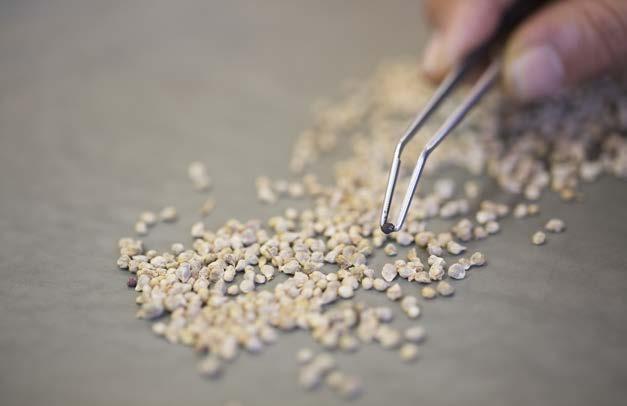

RESILIENT PLANTS
In order to keep providing the global population with a sufficient amount of safe and healthy food, both now and in the future, it is important to develop new plant varieties that are more resistant to pests and diseases and changing climate conditions. Radboud University Nijmegen and Wageningen University & Research are jointly conducting research with breeding companies into the development of tomato plants that are capable of producing tomatoes at high temperatures.
THE AUTONOMOUS GREENHOUSE
Greenhouse horticulture plays an important role in the supply of fresh and healthy products. Autonomous greenhouses focus on the digitalisation of horticultural production, from providing decision-support systems for growers to the fully automated control of production systems for seeds, young plants to ready- to-use products. This state-of-the-art greenhouse can also contribute to the production of fresh food using fewer resources (water, energy). Dutch greenhouse horticulture plays a key pioneering role in these applications.
TREES AS SERVICE PROVIDERS
Trees and plants are instrumental in the solution of climate problems. They contribute to heat reduction, air purification and water management – not only on a global scale but also at municipal level. Wageningen University & Research was commissioned by Stichting De Groene Stad, among others, to identify which species of trees and plants excel in the provision of the above services. Tree nurseries are already offering these products as ‘green as a service’
53 DUTCH INDUSTRY
HORTICULTURE & STARTING MATERIALS
Valued, healthy and safe food: by 2030, the sector will produce healthy, safe and sustainable food. The food production system will be robust and green products will make a valuable contribution to its environment.
These four missions are supported by crosscutting topics such as Artificial Intelligence, robotisation and seed technology.
Working together on joint challenges
Many challenges faced by the Top Sector Horticulture and Starting Materials have a connection with other top sectors. Knowing that the most fertile breeding ground for innovation is at the interface between different top sectors, Horticulture & Starting Materials is seeking cooperation with other top sectors in crossover projects. The Top Sectors Horticulture & Starting Materials, Agri & Food and Water & Maritime have drawn up a joint agenda in which they join forces to invest in the development of knowledge and innovation. This will enable the top sectors to make a major contribution to solving societal issues, both in the Netherlands and abroad.
Addressing the major societal challenges, as formulated at national and European level, among other things, requires a joint approach to different sciences and technologies. This is why the top sector strongly focuses on cooperation with other sectors, combining knowledge and insights to create new innovation solutions. Moreover, cross-overs are important for the broader application of innovations. Knowledge that has been developed within a certain environment can thus also be valued in other (sectoral) environments.

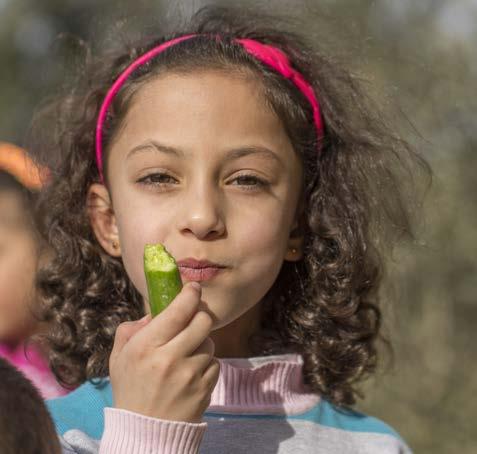
54




55 DUTCH INDUSTRY
IN THE NETHERLANDS
TOP SECTORS

56 ICT
The Netherlands is one of the world’s foremost digital economies. Many households have a PC, a tablet and a smartphone as well, and the physical and mobile networks are both highly developed. Almost every single company in the Netherlands works online, and the national Internet servers are among the most secure in the world.
Despite being one of the smallest countries in the world, the Netherlands takes a very strong position in the digital world.
ICT
The importance of ICT to the Dutch economy is increasing all the time. The ICT sector is growing at a lightning pace, and digitalization is a key driver of economic growth. On top of this, digital innovation plays a prominent role in solving important societal issues.
Key Enabling technologies
Top sector ICT contributes to the economy in various ways: through innovation, by utilising international opportunities, by solving the challenges facing society, by increasing human capital, and by investing in scientific research. Many major societal challenges, such as the energy transition, the circular economy and healthcare will require a lot of new technology in the short term.
Key enabling technologies (KETs) are specific technologies considered crucial for economic
growth, competitiveness, and innovation. Seven KETs have been identified within Top Sector ICT:
• Artificial Intelligence
• Data Science, data analytics and data spaces
• Cybersecurity technologies
• Software technologies and computing
• Digital Connectivity Technologies
• Digital Twinning and Immersive technologies
• Neuromorphic technologies
These technologies have in common that they develop themselves at lightning speed and have a wide range of applications. They are the backbone for innovation and growth, driving the development of new products, processes or services. In addition, KETs have a disruptive impact on existing industries and sectors, and there is a long-term impact on the way we live, work, learn and innovate.
Enabling societal challenges
From agriculture and healthcare to education, logistics and science: ICT is vital to every sector of the economy and to society as a whole. Consider the energy transition. Smart networks are being used to optimise supply and demand in the use of energy sources to prevent peak loads. The agricultural sector also uses digital solutions: smart irrigation and precision farming mean much greater efficiency, and so lower costs and less environmental impact. Public health is being impacted by early diagnosis and patientspecific treatments that are made possible with smart algorithms. And autonomous are a key parameter for safety and cybersecurity in the Netherlands and the country’s defences.
57 DUTCH INDUSTRY
NETHERLANDS
TOP SECTORS IN THE
To find proper solutions for these challenges, companies, knowledge institutions and government agencies need to be working more closely together and sharing their understanding of innovative ICT solutions. In all of these challenges, ICT and its Key Enabling Technologies play an essential role.
One of our major challenges is the ambition to transition towards a sustainable society. The Netherlands must be climate neutral by 2050. This requires a huge effort from all parties and ICT key technologies play a crucial role in this. For any programme, important innovations can be realised using those technologies. For example, in modelling, forecasting and optimising energy production, its transportation and cost revenue sharing. Remote control and robotics are also of great value in energy production. ICT also plays a major role in the efficient distribution of locally generated energy. Like smart charging, setting up an automated, safe and connected electric mobility system or digital twin simulation models.
RENEWABLE ELECTRICITY AT SEA
For the short-term, the main focus of the ‘Renewable Electricity at Sea’ innovation programme is on getting smart innovations available for acceleration, acceptance and safety. For the medium term, larger, more radical innovations will be needed for further cost reduction and energy system and environmental fit. This could include increasing the capacity factors of wind farms, new foundation technology and digitisation and robotisation of installation and maintenance. For the longer term, potential breakthroughs are being explored such as off-grid wind farms, airborne wind, offshore solar and ocean energy.
developed. Data also play a major role. The trick is to safely draw lessons from anonymised and encrypted data. Regardless of technology, when sharing data, it is essential to capture ‘informed consent’, with blockchain being a possible solution in the highly fragmented healthcare system. Blockchain can be the connector between data providers and data consumers as it ensures traceability, transparency and trust in the data. Technology and methods such as AI, the Personal Health Train and FAIR combined with well-filled monitoring and data management roles help in this regard.
PERSONAL HEALTH TRAIN
Another major challenge is the future of healthcare as the sustainability of the system is under severe pressure. To cope with the challenges in the coming decades, the system will have to become more sustainable and adaptive, with a greater focus on cooperation, shared responsibility and openness and development. Smart ICT innovations are indispensable in this sector.
In recent years, a powerful ecosystem of public-private partnerships has been built up in the Netherlands. For example, there is a working group on Health & Care at the Netherlands AI Coalition. Furthermore, the Health theme at Commit2Data and the National AI Care course have been
Traditionally, for an analysis, data is first collected and copied to a central location to perform an analysis. With PHT, the analysis goes past the locations where the data is stored. Only the conclusion is included. It is from this operation that the name PHT is derived. The Personal Health Train visits the required data. It is a train that passes by various data stations to analyse information there.
58 ICT


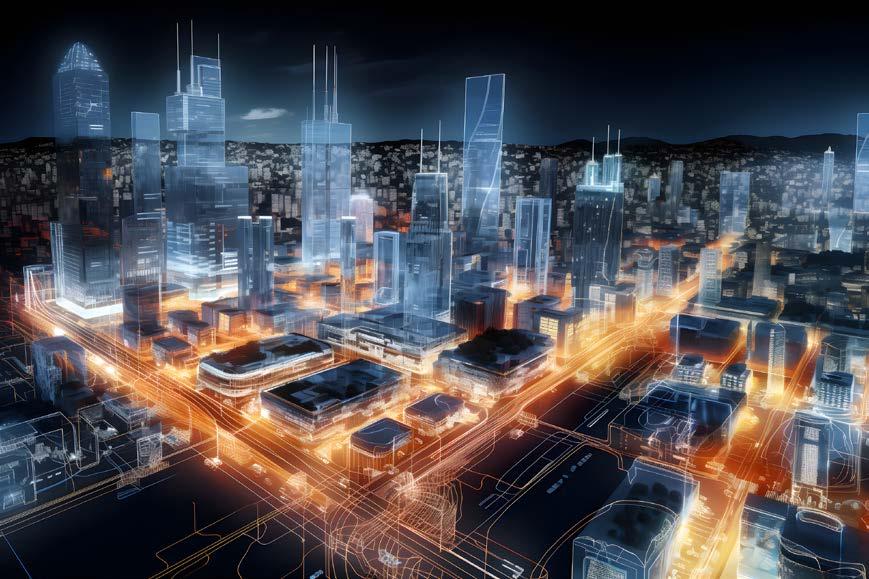

59 DUTCH INDUSTRY
IN THE NETHERLANDS
TOP SECTORS
Coalitions and programmes accelerating impact
The goals of Top sector ICT are to build programmes for public-private partnerships in key enabling technologies, to improve participation in mission-driven programmes and themes and Long-Term Mission-Driven Innovation Programmes, and to boost engagement with the public-private partnership programmes among innovative SMEs. To accelerate the solutions for our main societal challenges, Top sector ICT brings together companies, governments, knowledge and educational institutions in innovation coalitions around key technologies. Numerous challenging ICT issues are worked on within dedicated programmes, such as:
Cybersecurity - Cybercriminals are using ever more advanced methods and technologies to breach and undermine digitalised society. To be able to rely on secure and dependable ICT systems, networks and services now and in the future, organisations will need to take more combined and more effective action. That is why cybersecurity is one of the key enabling technologies of Top Sector ICT. The dcypher platform is a place for exchanging knowledge, and for facilitating cross-sectoral cybersecurity partnerships.
Artificial Intelligence – AI is a powerful tool in efforts to overcome serious economic and societal issues. AI applications are already being used for a range of different purposes: giving more accurate medical diagnosis and healthcare,



60
ICT
TOP SECTORS IN THE NETHERLANDS

for example, and saving energy, reducing the use of pesticides, providing personalised education, fighting crime effectively, but also reducing the cost of maintaining roads, railways, and bridges, building lasting customer relations, and developing self-steering robots, cars and drones. The Netherlands AI Coalition is dedicated to accelerating the pace of AI development in the Netherlands and bringing together separate AI initiatives.
Decentralized technologies - Fake news, data breaches, stagnating flows of goods: more and more, digital systems are becoming critical systems. These complex systems need to be reliable but also flexible, verifiable and universally accessible. Decentralized technologies such as blockchain offer solutions for these challenges and that is why many
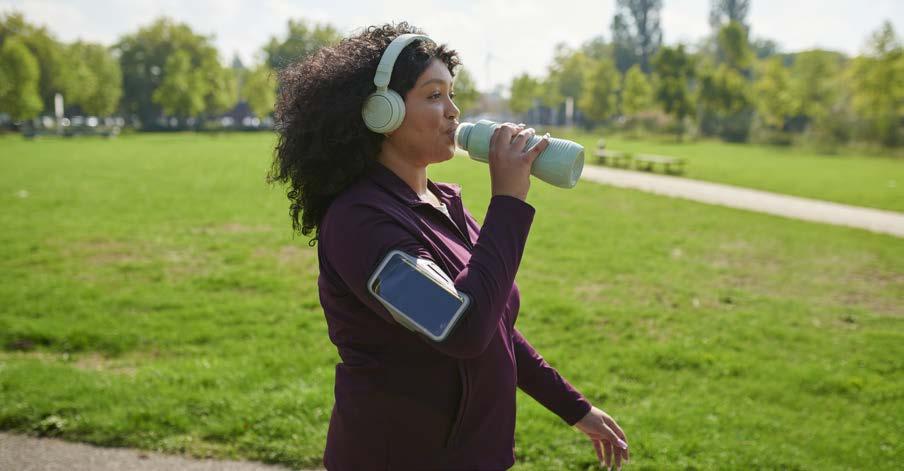
sectors of the economy already use blockchain to help with their innovations. Innovations that are needed to boost economic growth and to overcome a range of important societal challenges such as the energy transition, healthcare problems and climate change.
Supporting activities
• International - Top sector ICT identifies international opportunities for ICT research and innovation from key technology programmes and activities and organises cooperation with priority countries.
• Innovative SME - cooperation between government, industry and knowledge institutions is essential. The SME ICT Innovation Working Group aims to increase SME involvement in public-private cooperation.
• The Human Capital Agenda ICT - The rapidly increasing shortage of digital and ICT skilled workers is a big threat to the economy. The Human Capital addresses this challenge which has become one of the priorities for the Top sector ICT.
KIA Digitalisation
The Knowledge and Innovation Agenda (KIA) Digitalisation provides a strategic agenda for the activities described above. Both with regard to knowledge and innovation, as well as valorisation, internationalisation and human capital development. Top sector ICT coordinates this agenda, on behalf of the other top sectors.
61 DUTCH INDUSTRY
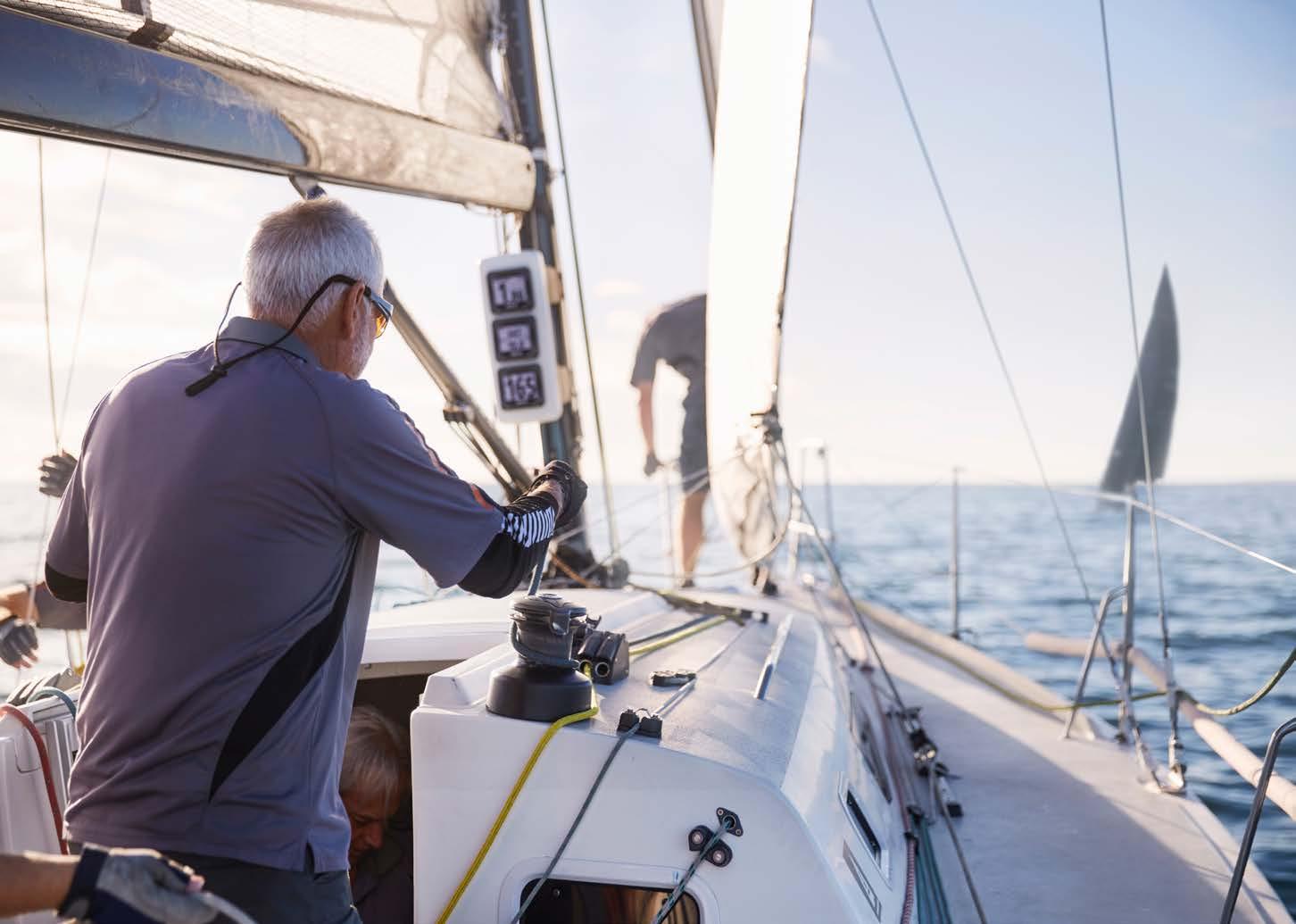
62 LIFE SCIENCES & HEALTH
Companies in the Life Sciences & Health (LSH) sector find a welcoming home in the Netherlands, a country renowned for its connected communities, strategic location, opportunities for public-private partnerships, investments for growth, leading knowledge and innovation institutions, and the presence of key regulatory bodies such as the European Medicines Agency. Ranked in First Place in the EU in KPMG’s Growth Promise Indicator (2019), the Netherlands is brimming with Life Sciences & Health business potential in the fields of biopharma, medical and eHealth technology.
LIFE SCIENCES & HEALTH
Top Sector Life Sciences & Health (LSH: Health-Holland) stimulates activity and innovation in the field of Health & Care for the benefit of Dutch economic and social earning capacity. Health & Care is one of the major societal themes within the government’s Mission-driven Top Sectors and Innovation Policy that is coordinated by the Ministry of Economic Affairs and Climate Policy. This approach comes from economist Mariana Mazzucato, who argued that the formulation of a mission provides nationwide focus and direction for social, scientific, and business innovation and transformation processes. Therefore, Top Sector LSH coordinates the activities of a nationwide public-private coalition to achieve the Health & Care missions formulated by the Ministry of Health, Welfare and Sport as described in the Dutch Knowledge and Innovation Agenda 2024-2027.
Health & Care missions
The common focus of the coalition partners is formed by six Health & Care missions. The overarching central mission is as follows:
“By 2040, people in the Netherlands will live at least five years longer in good health, while the health inequalities between the lowest and highest socioeconomic groups will have decreased by 30%.”
Five specific missions contribute to achieving this central mission. These are:
• Through changes in lifestyle and living environment
• By providing care in the living environment
• By facilitating and encouraging people with chronic diseases and lifelong disabilities to participate in society
• By improving the quality of life of people with dementia
• By better protecting society as a whole from socially disruptive health threats.
Top Sector LSH and the many public and private stakeholders in this nationwide Health & Care coalition foresee substantial economic revenues and growth from all the activities as well as the innovative concepts, products and services that will help accomplish the missions and, through them, the societal impact of this policy.
To accomplish the missions, the coalition builds on the strengths of the Dutch Life Sciences & Health sector. These include a broad scope of top-notch disciplines, from pharmaceuticals to medtech, healthcare infrastructure to vaccination research, and eHealth to data-analysis. Top Sector
63 DUTCH INDUSTRY
IN THE NETHERLANDS
TOP SECTORS
LSH also initiates, stimulates and finances multidisciplinary public-private partnerships (PPPs) to valorize essential innovations. By attracting financing, sharing best practices and using the univocal Health~Holland sector communication, the Top Sector, in companionship with all coalition-partners, boosts a productive infrastructure in which companies, whether from start-ups or scaleups, evolve successfully into global players.
Innovation for transformation
As stated in the Knowledge and Innovation Agenda, the Health & Care coalition aims to contribute to Health & Care missions through technological innovation and valorization, which requires interdisciplinary cooperation. Companies in the LSH sector work on innovative concepts, products and services for prevention, care and cure. In the latter (care and cure) increasing customization is made possible, thanks to simultaneous breakthroughs in biology, automation and Artificial Intelligence (AI). Customization is highly essential, as the best intervention for one person is not always optimal for another. What is already increasingly responsive to these individual differences is the latest generation of biotechnology innovations, such as from diagnostics and prognostics (with or without biomarkers), to vaccines, drugs and advanced therapies.
‘Customized’ and ‘Personalized’ interventions are increasingly becoming the norm. These
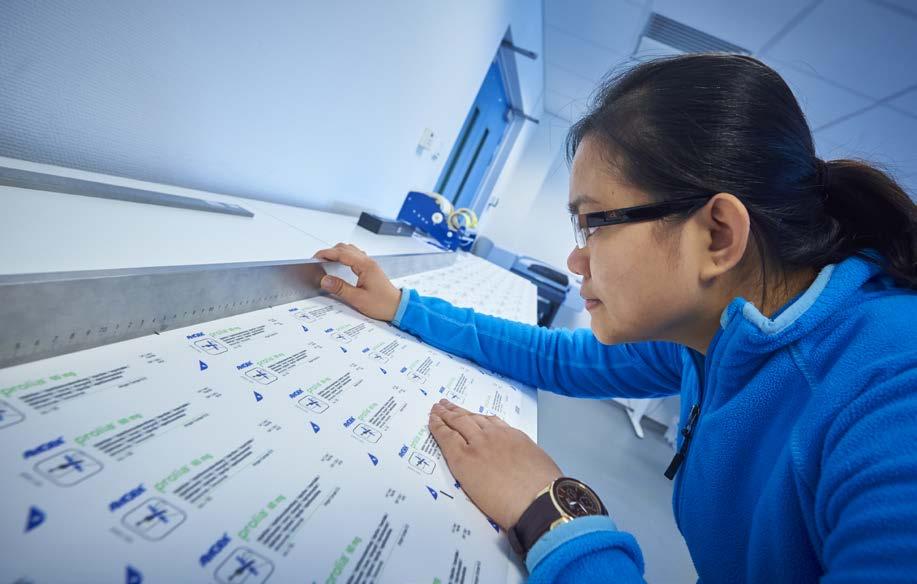


64
LIFE SCIENCES & HEALTH


are preferably preventive, but if this is not possible then as early as possible in the disease process. Moreover, Top Sector LSH and the Health & Care coalition stimulate and facilitate this transformation towards health and tailored prevention, care and cure, while additional research and development of knowledge and innovation must ultimately lead to optimal utilization in the daily practice of overall prevention, care and cure.
In doing so, Top Sector LSH and the Health & Care coalition pay explicit attention to core elements of innovation such as benefits, manpower, availability, affordability, usability, sustainability, quality, suitability, and safety. For example, in the coming period, more innovative vaccines and other preventive medical innovations and personalized therapies will be developed, as well as diagnostics, prognostics and smart measurement and intervention methods, which will target both individuals and their environment.
A society in which individuals participate and feel that they matter, to themselves and to others, is a transformation also highly encouraged. This is particularly a challenge for society as a whole and for the cooperation of the public sector and the healthcare sector. Social innovation and key methodologies such as Vision & Imagination, Behaviour & Empowerment, Experimental Environments, and Value Creation & Scaling, have essential roles in supporting this transformation.
The coalition develops technological solutions that match social innovation and the needs of its users. The challenge is to use technological innovation to move from point solutions to coherent and intertwined concepts, products and services (assemble, integrate and validate). This also requires smart combinations of key enabling technologies and methodologies to ultimately find, validate and ultimately market practical solutions.
Investing in innovation
From inventing the microscope in the 17th Century to pioneering curative solutions for oncology, the Dutch have a proven record of ground-breaking developments in life sciences. At present, more than 3,000 Life Science & Health research and development companies are active within the Netherlands with an economic impact of approximately €7 billion. The Dutch LSH sector received an additional boost with the relocation of the European Medicines Agency (EMA) to the Netherlands in 2019. Furthermore, with the National Growth Fund the Dutch government made a reservation of €20 billion for the period 2021-2025 for project investments in fields which have the highest potential for structural and durable economic growth. This directly benefits the sector with funding for strategic public-private programs such as RegMed XB, Health-RI, Biotech Booster, Pharma NL and Oncode-PACT.
65 DUTCH INDUSTRY
TOP SECTORS IN THE NETHERLANDS
In addition to these important programs, the Ministry of Health, Welfare and Sport has launched several national programs for speeding up the urgently needed preventive, care and cure-related transformation, supporting these important policies with a total investment of over €7 billion. These investments open up the Dutch health and care market for companies to implement their validated ‘future-aware’ technological innovations that aid both citizens and prevention/care professionals to help the people in the Netherlands to accomplish the aforementioned central Health & Care mission.
Implementation and ambitions
The combination of a vision, knowledge, innovative and creative capacity and the availability of resources in a public-private partnership proves to be a strong foundation for innovation. In these durable missionoriented collaborations, citizens, researchers, government and entrepreneurs (what is termed the “quadruple helix”) join forces for the health and care of the future. By means of a Public/ Private Partnership (PPP) Allowance, the Top Sector provides a financial instrument to help these consortia to realize their innovative ideas.
As a result of familiarity with the regulations of the PPP Allowance, its financial potential has enabled the growth of the Top Sector LSH to increase greatly: from €4M in 2013 to almost €78M in 2023. In recent years more than 800 Public-Private R&D projects and more than 40
national Strategic Public-Private Partnerships (PPPs) have been set up for fundamental, experimental and industrial LSH-research and innovation.
Public Private Partnerships
Examples of such PPPs in the sector includes those that work on the prevention and treatment of lung disease (P4O2), cardiovascular diseases (Dutch Cardiovascular Alliance), dementia (ABOARD), cancer (Oncode Institute), and diabetes, arthrosis, eye disease and kidney failure in the DutchFlemish Regenerative Medicine Crossing Borders (RegMed XB) program. Together with other top sectors, PPPs are researching and developing new medications, tackling the growing problem of antimicrobial resistance, examining the need for new medical technologies and ICT programs in healthcare, exploring artificial intelligence and decision support, connectivity and a national personalized medicine and health research infrastructure (Health-RI).
For the valorization, adoption and implementation of innovations, end-users (such as healthcare foundations, patients, current and future healthcare professionals, and entrepreneurs) have been closely involved in the choices to be made. These include exploring and clarifying which prevention, cure and care innovations endusers consider important, whether at home, in schools, in offices and in healthcare facilities.
VALORIZATION SUPPORT PROGRAMS
The valorization efforts are supported by a myriad of programs such as the Venture Challenge and the Biotech Booster.
• The Venture Challenge invites organizations to submit competitive proposals that seek to support entrepreneurship and accelerate the growth of technology-based companies in their community, region, or combination of regions. These are aligned with high-growth industrial clusters.
• The Biotech Booster is a national program to support commercialization of biotechnology findings in The Netherlands. The program offers mentorship, financial support and networking support to guide founders from the ideas stage to developing an investable and commercial proposition.
Besides these programs, the Ministry of Health, Welfare and Sport launched a wave of healthcare transformation programs in 2023 that further fosters the attractivity and nationwide use of innovations of companies.
66
LIFE SCIENCES & HEALTH
New initiatives
In addition to further developing existing PPPs, the Top Sector LSH and the Health & Care coalition have the ambition to support the development of new PPPs. These will be assessed for their relevance to societal challenges, their added value to the current ecosystem of PPPs, as well as their scientific excellence and economic potential. The assessment will also include their technology transfer plans for implementation and valorization. Additionally, within this framework, Top Sector LSH recently invested in the setting-up of new partnerships for mental and neurological (brain) disorders, the development of a healthy living environment and a healthier and more equitable life course for the next generations by offering newborns a promising start.
‘Excellent and accessible nationwide infrastructure of knowledge, a long-standing tradition of public private partnerships and a multidisciplinary approach with a strong focus on the end user, make the Dutch LSH sector distinctive on a global scale.’ Len de Jong, SME Member Top Team LSH.


67 DUTCH INDUSTRY
IN THE NETHERLANDS
TOP SECTORS

68 LOGISTICS
TOP SECTORS IN THE NETHERLANDS
Logistics covers all the activities that are needed for planning, implementing and managing flows of goods and information, from raw material to end product. As well as the added value and the employment related to the logistics sector itself, it also has an enabling function for all other sectors (including the top sectors), by facilitating international trade. With just 0.25% of the world population and 1% of global production, the Netherlands facilitates 3.7% of world trade. Its high-quality logistics function is an important aspect of the attractive business climate in the country.
LOGISTICS
There are many parties that work together in the Top Sector Logistics, including shippers, logistics service providers, transport companies, knowledge institutes, and government bodies. The activities of these parties make a solid contribution to the powerful international position of the Netherlands.
Towards competitive, sustainable, and safe mobility
The Top Sector Logistics has a role to play in many social challenges for healthcare, agriculture, water, and food and the energy transition. This role is reflected in the action agenda of the Top Sector Logistics, which also focuses on, for example, agricultural logistics, sustainability in logistics and freight transport and care logistics.
The overall ambition for the Top Sector Logistics is logistics and freight transport to be competitive, sustainable, and safe by 2050. In the context of its mission-driven innovation policy, the Ministry of Infrastructure and Water Management has asked the top sector to draw up an innovation agenda that focuses on “Future-proof Mobility Systems” and to develop this in a triplehelix context. The Top Sector Logistics has developed a programmatic approach: the Multi-year Mission-driven Innovation Program Sustainable Mobility, with a focus on sustainability, resilience and resistant.
This program is aimed at the ambition for 2050: competitive and emission-free logistics in the Netherlands. With this, the Top Sector Logistics is building on the results of recent years. More emphasis is placed on scaling up and implementing existing techniques and
innovations in the short term while on the long term the focus is on research into new technologies and innovations.
Activities are developed along four application areas: cities and spatial planning, multimodal freight transport, supply chains, and mobile equipment and construction. Cities are grappling with a significant challenge in seamlessly integrating logistics into spatial planning during redevelopment. The need for action perspectives arises to enhance the sustainability of city logistics. Cities and Spatial Planning focus on researching ways to make logistics in urban areas more sustainable, emphasizing themes such as logistics services and circularity. To adapt programming based on crucial developments, obtaining insight into data on logistics activities, methods of collection, and models for decision-making
69 DUTCH INDUSTRY
LOGISTICS
is crucial. Additionally, understanding the logistical characteristics of raw material flows in urban areas and organizing their collection and reuse at an urban level are key considerations. The primary challenge in achieving sustainability and resilience in Multimodal Freight Transport currently rests on the dominance of road transport. It is essential to assess the degree of modal shift from road to water, rail, and tube. The focus of Multimodal Freight Transport is on researching the sustainable and resilient organization of freight transport within an integrated logistics system, aiming to contribute to potential emission reduction. To effectively guide programming in Multimodal Freight Transport, visibility is sought on the “Effective use of the multimodal freight transport system” along specific corridors and the reduction of waiting times at critical nodes, aligning with the goal of alleviating congestion and enhancing livability within the multimodal freight transport system.
EXAMPLE: SUSTAINABLE INLAND SHIPPING
The research project ‘PAving THe way towards ZeroEmission and RObust inland shipping’ (PATH2ZERO) investigates the requirements for transitioning to zero-emission practices within the inland shipping chain, involving stakeholders such as ship operators, shippers, and financing institutions. It aims to create a virtual representation (digital twin) of the inland shipping system to assess the efficiency of emission-free strategies. This initiative provides all stakeholders in the inland shipping chain with actionable perspectives for developing sustainable business models.
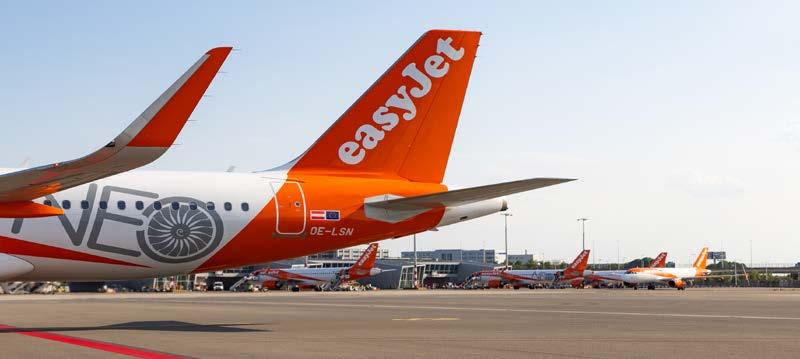
Within Supply Chains Top Sector Logistics prioritize researching resilient and sustainable supply chains in the face of limited space and resources, emphasizing circularity and digitalization. They aim to guide programming within Supply Chains by focusing on:
• Exploring new methods and models to enhance resilience in specific chains, including supply chain resilience, scenario planning, and stress testing.
• Investigating the role of the circular economy in fostering sustainability and resilience in chains and networks, with a potential to create innovative business models in the logistics sector.

70
EXAMPLE: PAPERLESS TRANSPORT
While digital business is the future, the transition to paperless operations has proven to be a significant change process, encountering unexpected difficulties and unforeseen obstacles. Established patterns, habits, and interpretations of laws are replaced by a digital process that may be challenging for many users to grasp. This explains why paperless road transport is still relatively uncommon across Europe. The project Digital Shipment Data in goods transport, with a primary emphasis on road transport, has provided valuable insights into the fundamental aspects of the process and the interplay of laws for both regulatory and commercial purposes.

TOP SECTORS IN THE NETHERLANDS
Construction Logistics is actively engaged in reducing nitrogen emissions in the construction sector. The eNOX program, designed to measure and reduce nitrogen, is being expanded for broader accessibility. The committee has also developed faster and more accurate methods to predict nitrogen emissions, aiming to streamline permit issuance through monitoring and enforcement considerations.
With a primary focus on researching emission reduction in construction, the committee emphasizes smart and sustainable construction logistics, including the establishment of emission-free construction sites. To adapt programming within Construction Logistics to significant developments, efforts are made to gain visibility into:
• Structural shifts towards more modular design and construction concepts, as well as on-site assembly activities in construction, and the ways in which logistics system improvements contribute to these changes.
• The role of circularity and the availability of data on material flows in construction during the transition to circular construction chains, potentially resulting in new management models in the logistics sector.
EXAMPLE: SELF AND FASTER
A tool to improve the “self and faster” prediction of emissions, specifically focusing on nitrogen emissions, utilizes data from companies, such as specifications, planning, and cost estimates, allowing them to independently calculate nitrogen emissions. The Top Sector Logistics is dedicated to developing a practical method for calculating and assigning emissions, building upon the carbon footprinting approach. The proof-ofconcept tool, designed for infrastructure projects based on cost estimates, calculates nitrogen and ammonia emissions essential for environmental permits. Users can import their own building cost classifications and obtain emission estimates. The tool is flexible, accommodating changes in the calculation method without requiring new functionalities. Results are visualized in real-time data at project, yearly, and activity levels, with the option to add new mobile machinery types.
71 DUTCH INDUSTRY
LOGISTICS
Characteristics of the branch
The logistics sector covers a wide spectrum of activities comprising the main ports and distribution centres, as well as the transport, financial and information services that enable the flow of goods. In each of these, Dutch companies play a leading role. Dutch main ports Schiphol (air cargo), Rotterdam and Amsterdam (maritime freight) are the largest in Europe and are serviced by companies specialising in storage, transhipment, warehousing and distribution.
Mainports
With transfers in excess of 320 million tonnes, Rotterdam harbour is Europe’s largest sea terminal. Rotterdam is set to grow strongly in the future, specifically in the field of containers and, with the world’s largest land gain project, Maasvlakte 2, will substantially increase the capacity of its harbour facilities in the near future. Amsterdam’s Schiphol Airport, with an annual transfer of over 1.5 million tonnes, is the third largest in Europe for cargo and Europe’s fourth-largest civil aviation hub. In addition to Schiphol, the Netherlands has 16 regional airports. The Netherlands is unique when it comes to interconnectivity. Rotterdam harbour, other harbours such as Amsterdam, and Schiphol airport are closely interconnected logistically. Under the ‘Smart Cargo Hub for Europe’ initiative, Schiphol, the Port of Amsterdam and the private sector aim to turn Amsterdam into the fastest and most reliable multimodal hub for Europe. Additionally, the Netherlands
is the country of choice for European Distribution Centres (EDCs): 57% of all American and Asian EDCs on the European continent are located in the Netherlands.
Road transport
The Netherlands is also the leading road transport nation in Europe and the largest inland shipper. The Dutch road haulage industry has a market share of about 22 per cent in international cargo transport within Europe. The road transport sector is highly internationally oriented and more than half the added-value created in the country’s logistics branch is related to road haulage. Also, the Netherlands has over 12,000 professional haulage firms among which are several large enterprises that account for well over half the total transport volume. From the Port of Rotterdam, all major industrial and economic centres in Western Europe can be reached in less than 24 hours.
Rail transport
Sizable investments have been made in high quality railway connections. During the past ten years the volume of goods transported by rail has doubled. The Dutch rail cargo market is open to competition and is currently served by a number of providers. Transport by rail is increasingly recognised as a viable alternative to road haulage, particularly for time-critical products such as food and flowers. The Betuwe-route, a dedicated double-track freight railway, enables fast transport of containers and bulk goods from Rotterdam to the rest of Europe.
Inland river transport
For inland shipping the Netherlands is strategically situated on the Rhine Delta. This provides good connections with the large European hinterland all the way to the Black Sea. This makes the Dutch inland shipping fleet the most important carrier of goods on the inland waterways of Europe.
Pipelines
A Dutch pipeline network connects the petrochemical industries at port of Rotterdam with industries in Zeeland, Amsterdam, Antwerp and Limburg, making it effectively one of the three largest clusters of chemical industries in the world, next to Houston and Singapore.

72




73 DUTCH INDUSTRY
IN THE NETHERLANDS
TOP SECTORS

74 WATER & MARITIME
TOP SECTORS IN THE NETHERLANDS
Addressing the escalating challenges surrounding water resources is the primary mission of the Top Sector Water & Maritime, which strives to elevate prosperity through innovative solutions. The on-going progression of urbanization, coupled with global population growth and climate shifts, has propelled the worldwide water dilemma.
WATER AND MARITIME
The Netherlands, with its rich history intertwined with water, excels in pioneering sustainable solutions within the Water, Delta, and Maritime technology domains. The Dutch people’s deep-rooted connection with water showcases a history where confronting water challenges has been a unifying force.
Delta technology
The World Economic Forum (WEF) identifies water crises as the main threat with the highest impact on the global economy. Additionally, the failure to adapt to climate change ranks prominently among the top ten threats, both in terms of frequency and impact. Currently, half of the world’s population resides in deltas, coastal, and river areas, a figure projected to surge to 70% by 2050. While deltas hold great potential, they
also represent fragile ecosystems susceptible to various challenges.
Delta technology is a critical player in addressing these challenges. One key facet is ensuring ‘water safety’– essentially, how to safeguard against flooding. Water safety is an enduring challenge for the Netherlands, given its low-lying topography. Another pivotal challenge involves transitioning delta cities toward a sustainable future, encompassing aspects such as food production, energy usage, and IT applications. Finding sustainable solutions for these areas is imperative, both at a local and global scale.
The synergy of nature and technology has been proven instrumental in enhancing the resilience of populations against natural disasters. While traditional techniques like dikes and sluices remain functional, the
EXAMPLE: THE SAND MOTOR
The Sand Motor, situated along the Zuid-Holland coast, is an excellent example of world class Dutch hydraulic engineering. Crafted in the form of an elevated hook, this ingenious structure harnesses the forces of wind, waves, and currents to ensure a continual supply of sand along the coast, bolstering its safety and resilience. As part of ongoing initiatives, a notable project is underway to explore the applicability of the sand-motor principle beyond Dutch shores. Also in the United Kingdom British coastal erosion poses challenges spanning centuries. Inspired by success of the Sand Motor, the British deployed a sand plate to impede further erosion and thus danger to two coastal villages and an oil refinery. The goal is to buy crucial time and, optimistically, pave the way for further development of a counterpart akin to the Dutch Sand Motor in the United Kingdom.
75 DUTCH INDUSTRY
WATER & MARITIME
Netherlands has also embraced innovative approaches such the ‘Sand Motor’ project. This project serves as a remarkable illustration of nature-based solutions and eco-engineering, where the nature collaborates with humanmade interventions to mitigate risks and enhance safety.
Maritime technology
The Netherlands proudly stands as the maritime hub of Europe, boasting one of the world’s most robust and comprehensive maritime clusters. Its maritime industry is characterized by versatility, featuring a diverse fleet of sea-going vessels, the largest inland shipping fleet in Europe, and the world’s most substantial port capacity. Positioned as a leader in offshore services and sophisticated maritime systems, the Netherlands sets the stage for innovation. Dutch maritime technology focuses on four pivotal themes: ‘zero emission shipping,’ ‘digital and autonomous shipping,’ ‘safety and security,’ and ‘blue growth.’
The aim to minimize the environmental impact of maritime shipping is underscored by the climate strategy adopted in 2018 at the UN International Maritime Organization (IMO). Keeping in mind that 90 percent of global goods is being transported over water, the Netherlands recognizes the pivotal role it plays. In 2023, the Dutch government allocated the Dutch Growth Fund to the
Maritime Master Plan, a visionary initiative aiming to realize 40 cutting-edge zeroemission ships by 2030. Green technology and innovative shipbuilding practices align with the commitment to fostering healthy seas, clean air, and a sustainable living environment.
Rapid advancements in autonomous technology present new opportunities to enhance the efficiency, safety, and sustainability of shipping. Fostering such opportunities helps mitigating the risks associated with human errors. Propelled by the vision for autonomously sailing vessels, the Dutch embark on two ambitious demonstration projects, featuring a seagoing vessel exceeding 100 meters and an inland vessel. These initiatives exemplify a concerted effort to drive research, development, and implementation toward highly automated sailing, cultivating a market demand for the future of maritime transportation.
Ensuring the safety of shipping is imperative for the well-being of individuals on board, including passengers and crew, as well as for the preservation of the environment –guarding against the leakage of hazardous substances and preventing the overboard release of cargo such as containers. In-depth research conducted subsequent to notable maritime incidents, such as the 2019 MS Zoe disaster off the coast of the Netherlands and the 2021 MS Ever Given obstruction in the Suez Canal, has furnished Dutch knowledge
institutions like MARIN with invaluable new insights into ship behavior, weather predictions, and optimal shipping routes.
The concept of Blue Growth embodies the pursuit of sustainable economic expansion at sea and potentially within inland waterways. While all activities at sea contribute to economic growth, Blue Growth specifically emphasizes the development of new sustainable ventures in marine environments. Examples encompass renewable energy extraction and storage, aquafarming/ mariculture, conservation of marine life, and eco-tourism. Given that over 70 percent of our planet’s surface is covered by water, the Netherlands, nestled in a river delta, maintains an intrinsic connection to the sea. Dutch initiatives continue to navigate and thrive on the world’s seas, embodying a legacy of maritime ingenuity and global engagement.
Water technology
The Dutch water technology sector is at the forefront of producing top-quality drinking water and industrial water while minimizing impact on the environment. Dutch experts excel in the purification and recycling of wastewater, showcasing their expertise globally. With projections indicating a 40% shortfall in global freshwater supply by 2030 (WEF, 2023), the water technology sector emerges as a crucial player with substantial
76
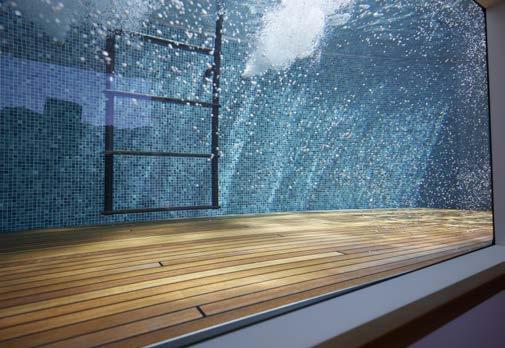



77 DUTCH INDUSTRY
IN THE NETHERLANDS
TOP SECTORS
export potential. Dutch experts actively pursue efficiency enhancements throughout the value chain, resulting not only in cost savings but also in energy conservation and a reduction in CO2 emissions. The emphasis on cycle closure facilitates a more circular economy, distinguishing itself through the reuse of three critical resources: energy, raw materials, and water.
Water is a fundamental human need. Consequently, the Water Technology sector becomes a focal point where research and innovation significantly contribute to societal well-being. The ultimate aspiration is to design cities based on their environmental impact, enabling residents to optimize efficiency in the consumption of water, energy, and food.
A truly sustainable city, in this vision, thrives on water and waste recycling, minimizes
EXAMPLE: RAW MATERIALS FROM WASTE WATER
Water boards, research institutes and industry are working on a variety of methods to recover raw materials from wastewater. The production of kaumera, a gumlike substance, extracted from wastewater sludge was started in 2019. Kaumera can be used as a coating for seeds and fertilizer granules and as a glue and binding agent. This innovation reduces sludge waste by 20-35%, lowers CO2 emissions and brings energy savings of 30-80%.

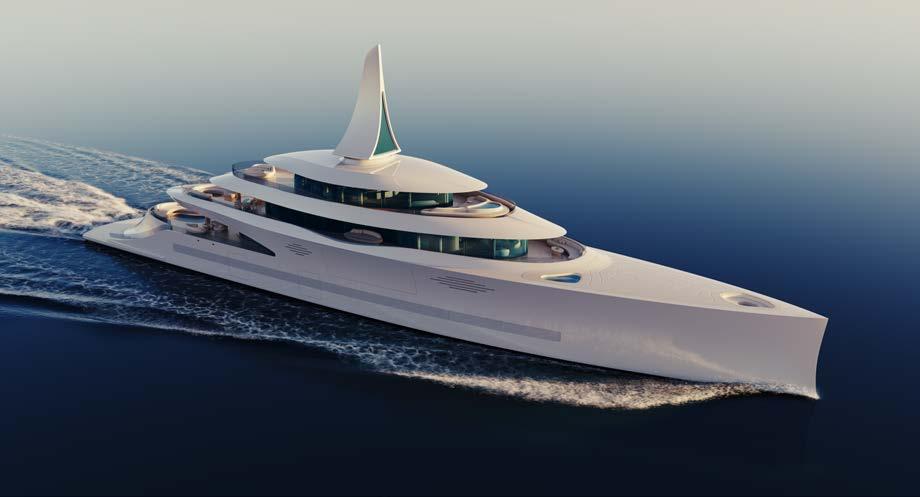
78
WATER & MARITIME
reliance on the environment for food supplies, and harnesses renewable energy sources. By achieving climate neutrality and resilience, a sustainable city actively mitigates its impact on climate change.
To fulfill its role, the Water Technology sector is committed to solving societal challenges. It actively responds to emerging market opportunities and sector-specific challenges, forging strong connections between essential knowledge and market dynamics. Through this dedication, the sector contributes significantly to a sustainable and resilient future.
Knowledge and Innovation Agenda 2024-2027
The Netherlands grapples with significant challenges in agriculture, water, and food sectors, prompting the government to collaboratively formulate a forward-thinking response. In a joint effort with experts, including those from Top Sector Water & Maritime, the Dutch Government has crafted a Knowledge and Innovation Agenda (KIA). Encompassing a span from 2024 to 2027, the KIA outlines six pivotal missions:
• Nature-based solutions for a resilient environment
• Sustainable farming and food production
• Building vital rural areas in a climateresilient landscape
• Accelerating food production that is healthy, nutritious, and safe to consume
TOP SECTORS IN THE NETHERLANDS
• Safe and sustainable utilization of inland waters and the North Sea
• Constructing the best protected and most livable delta in the world.
Building upon the foundations laid by the preceding KIA 2020-2023, the new KIA 2024-2027 integrates principles of sustainable water use, safe food production, climate-neutral and circular practices, highquality plant starting materials, and smart technology. This continuity underscores a commitment to a holistic approach in addressing complex challenges.
The close collaboration between the government and relevant Top Sectors ensures a cohesive and integrated implementation of these missions. The addition of new themes such as biodiversity, climate adaptation, water quality, sustainable North Sea practices, and circular use of raw materials further amplifies the scope and depth of the Agenda.
By fostering collaborative efforts and investing in knowledge and innovation, KIA 2024-2027 emerges as a potent tool for addressing societal issues, not just within the Netherlands but on a global scale. It serves as a beacon for the Netherlands to maintain its standing as a global hub for ingenious solutions to future challenges in the water and maritime sector. Through proactive strategies and partnerships KIA 2024-2027 strives to contribute significantly to a sustainable and resilient future.
EXAMPLE: WATER-SAVING POTATOES
The potato, a seemingly unassuming staple, converts water and nutrients into high-quality food. In the face of rise global food demand, potatoes play a crucial role that is anticipated to persist. However, the cultivation of potatoes face the escalating drought conditions. Inadequate hydration poses a direct threat to both the yield and quality of potatoes, prompting the need for innovative solutions.
Enter the Water-Saving Potatoes project — a collaborative effort between breeding companies and knowledge institutes. The primary objective is to delve into the genetics governing drought tolerance in potatoes. Through meticulous growth experiments, researchers have identified the mechanisms leading to reduced yields in dry conditions. The ensuing phase involves harnessing cutting-edge genetic technologies to craft tools empowering potato breeders in the independent selection of drought-tolerant varieties within their breeding programs.
These advanced genetic tools mark a significant leap forward, paving the way for the development of new potato varieties poised to enhance future food security substantially. By understanding the intricacies of drought tolerance at the genetic level and applying state-of-the-art technologies, the WaterSaving Potatoes project exemplifies a proactive approach in fortifying global agriculture against the challenges of water scarcity, ultimately contributing to a more resilient and secure food future.
79 DUTCH INDUSTRY
THE ENGINE OF DUTCH INDUSTRY
What makes Dutch businesses so attractive at the global level?
Is it their innovative nature and focus on continuity that makes them reliable and able to deliver high-quality products and services? Is it how they value their knowledge base and expand it year after year by building their own R&D activities? Is it the way they successfully form partnerships with research institutes and government bodies? It is a combination of these and other factors which are firmly anchored in Dutch culture and are crucial to success.
Prime Minister of the Netherlands, Mark Rutte about the success of Dutch businesses:
“As prime minister it’s my privilege to have regular contact with the ‘engine’ of Dutch industry. I visit companies and speak with entrepreneurs, and together we go on foreign trade missions. Time and again
I’m struck by their innovative and creative mindset and their focus on cooperation, continuity and sustainability. It’s an approach that goes back decades in the Netherlands.
This book showcases Dutch entrepreneurs, their companies and how they have developed over the past decades and centuries. It also describes the way they continue to operate at the forefront of the global market today, each in their own sector or niche.
This book offers a wide-angle perspective of Dutch industry. The individuals featured talk about the competition abroad, about innovation and about the challenges they encounter in their day-to-day business.
I am confident this book will give you a clearer picture of how Dutch companies operate and work towards a better, more sustainable world, as well as a better understanding of the engine behind our unique and thriving industry.”

WWW.DUTCHINDUSTRY.ORG

“The cure for disease can be found inside each and every one of us.”
82 LIFE SCIENCES & HEALTH
Amgen discovers, develops, manufactures, and delivers innovative medicines to fight the world’s toughest diseases. As a pioneer that helped launch the biotechnology industry more than forty years ago, Amgen remains on the cutting-edge of innovation, leveraging tools such as artificial intelligence, generative biology and human data to accelerate the discovery and development of new medicines. Every year, Amgen medicines reach millions of seriously ill patients around the world.
Harnessing the best of biology and technology to serve seriously ill patients
Amgen harnesses the best of biology and technology to make people’s lives easier, fuller, and longer. Their product portfolio is focused on serious, hard-to-treat illnesses such as cancer, cardiovascular disease, osteoporosis, and asthma, as well as inflammatory and rare diseases.
Amgen was established in Thousand Oaks, California, on April 8, 1980, by venture capitalist William K. (Bill) Bowes and his associates. In 1989 Amgen established its European headquarters in Switzerland. Over the next several years, Amgen would quickly establish offices across Europe, including a key operations and supply chain centre in Breda, the Netherlands.
Today Amgen is one of the world’s leading independent biotech companies with a global workforce of more than 25,000 people in around 100 countries. In Breda, Amgen
medicines assembled, labeled, provided with patient information leaflets, packaged and distributed throughout Europe and to a growing number of countries in other parts of the world. The Dutch sales organization is also located in Breda. It is responsible for the availability of medicines and clinical trials in the Netherlands.
Fighting the world’s toughest diseases
Amgen has a decades-long track record of reliable, sustainable and responsible operation, serving seriously ill patients with innovative medicines, including biologics, which are complex medicines made using living cells. In each decade, the company has stayed on the cutting edge of medical discovery, reliably inventing powerful therapies to help combat the world’s toughest diseases. Its high-quality

“We’re using biotechnology to make people’s lives easier, fuller, and longer.”- Carolina Correa – General Manager Amgen Netherlands
DUTCH INDUSTRY 83 Amgen
BIOTECH REVOLUTION
The discovery, development and manufacturing of biologics has transformed modern medicine and patient care with entirely new types of human therapeutics, and Amgen has been at the forefront of this revolution. The three points that underline this frontrunning role are:
• The company was founded in 1980 as Applied Molecular Genetics; later shortened to Amgen. It sought to apply recently discovered recombinant DNA technology to treat and cure diseases.
• Understanding the fundamental biological mechanisms of disease to develop biologic medicines to target and modify underlying causes of disease is the defining feature of Amgen’s discovery research effort and a major contributor to the development of the company’s broad pipeline.
• Amgen’s “biology first” approach permits its scientists to first explore the complex molecular pathways of disease before determining what type of medicine, or modality, is most likely to deliver optimal efficacy and safety.
medicines are focused primarily on patients with conditions for which few or no treatment options exist in the following fields and its 2023 acquisition of Horizon Therapeutics expanded its pipeline and portfolio to serve patients living with rare diseases.
Oncology and haematology: for example, particular types of cancer involving tumour formation, such as breast cancer, colorectal cancer, prostate cancer and skin cancer; haematological types of cancer (cancers of particular blood cells) such as leukaemia; and Immune Mediated Thrombocytopenia (ITP), a disease whereby the immune system destroys the body’s own platelets.
Bone diseases: such as osteoporosis, in postmenopausal women and also in men; and bone complications caused by bone lesions or bone metastases in patients with advanced cancer.
Cardiovascular diseases: elevated LDL cholesterol (the bad cholesterol) in patients with a very high risk of cardiovascular diseases, for whom currently available drugs have not yet succeeded in sufficiently lowering the LDL cholesterol level.
Inflammatory diseases: for example, rheumatic diseases such as rheumatoid arthritis; and skin diseases such as psoriasis.
Pushing the boundaries of biology
Amgen is a pioneer in the science of using living cells to make biologic medicines. The company has helped invent the processes and tools that built the global biotech industry, turning it into a leading source of therapies for patients.
Amgen uses cutting-edge science and technology to examine the biology of disease, creating therapies that are more precise and personalized.
Understanding the fundamental biological mechanisms is a defining feature of the company and a major contributor to the development of Amgen’s deep and broad pipeline of potential new medicines. Amgen’s “biology first” approach permits its scientists to first explore the complex molecular pathways of disease before determining what type of medicine, or modality, is most likely to deliver optimal efficacy and safety. With the advances in human genetics, Amgen continues to shed new light on the molecular roots of disease.
Amgen aims to deliver innovation in areas where society mostly needs it, such as for cardiovascular diseases, which are responsible for one of every three deaths globally.
“We examine the biology of disease to create therapies that are more precise and personalized.” - Carolina Correa – General Manager Amgen Netherlands
Innovation is also at the core of deCODE genetics, an Amgen subsidiary and a global leader in human genetics. deCODE researchers study the impact of human diversity on disease, improving drug discovery and development.
84


DECODING DISEASE
When the human genome was first fully sequenced, it was hailed as an overwhelming success. Since that time researchers have learned an enormous amount from the information contained in the diversity of the 3 billion base pairs that make up our genome.
Since its founding in 1996, deCODE genetics has contributed a tremendous amount to the research community’s understanding of human genetic variation. At the time deCODE joined Amgen in 2012, large-scale genome sequencing was taking off. The idea of studying the human genome, to better understand the biochemical pathways involved in disease, provided a much better model than the then current standard of studying these pathways in mice.
Follow the data
Looking at the entire genome using Whole Genome Sequencing (WGS) allows researchers to search for
changes in any part of the genome in a completely bias-free way. This means the researchers follow the data, rather than making a hypothesis that could narrow the focus to only certain areas of interest in the genome.
In this way, researchers look for common variations in the DNA’s letters across the genome. They then use these data to find associations between types of DNA, diseases or other traits. Over the past decade these studies have helped deCODE identify thousands of sequence variants that are associated with a whole host of traits, including BMI, height, and conditions such as cardiovascular, neurodegenerative and inflammatory diseases.
Amgen will be building artificial intelligence (AI) models trained to analyze one of the world’s largest human datasets on an NVIDIA DGX SuperPOD, a
full-stack data center platform, that will be installed at deCODE. The system will be named Freyja in honor of the powerful, life-giving Norse goddess associated with the ability to predict the future.
Freyja will be used to build a human diversity atlas for drug target and disease-specific biomarker discovery, providing vital diagnostics for monitoring disease. The system will also help develop AI-driven precision medicine models, potentially enabling individualized therapies for patients with serious diseases.
In the clinical trial space, Amgen has developed a data-driven machine learning model, ATOMIC, that is accelerating clinical trial enrollment to help bring medicines to patients more quickly.
85 DUTCH INDUSTRY
Amgen
Biotech pioneers
From the very start of the company, Amgen has had a strong focus on experimentation and discovery. There are many examples that demonstrate the culture of experimentation, which has always been present within the company. In the company’s early stage, Amgen scientists attempted many things: from creating organisms to extract oil from shale, making speciality chemicals, and cloning luciferase (the light source for fireflies), to creating a process for producing indigo dye in E. coli; an achievement that garnered the prestigious cover of Science magazine. The final direction for the company would be tackling human disease.
In the early 1980s, after working tirelessly for two years, a team led by a young researcher from Taiwan named Fu-Kuen Lin made a discovery that would launch the company: They found a gene on a single fragment of DNA among 1.5 million fragments of the human genome. This groundbreaking achievement enabled the creation of one of the most successful drugs in biotech history which stimulates erythropoiesis (increasing red blood cell levels) and is used to treat anaemia, commonly associated with chronic kidney failure and cancer chemotherapy.
Later that same decade, a new discovery led to the development of Amgen’s second blockbuster drug that stimulates the growth of white blood cells, making patients less vulnerable to infection, which is often crucial to cancer patients.
These are just a few examples of the discoveries and introductions of the many biotechnology medicines by Amgen scientists that have considerably improved the lives of hundreds of thousands of seriously ill people.
Currently Amgen has more than 30 approved products reaching around 10 million patients globally and a pipeline of ‘first-in-class’ medicines.
“To provide patients more treatment options, we also develop and produce biosimilars. This is a biologic medicine designed to work just like another biologic medicine, known as the reference medicine.”
- Carolina Correa – General Manager Amgen Netherlands
Every patient: every time.
As a worldwide leader in biologics manufacturing, Amgen has a long-standing reputation for reliably delivering high-quality medicines to patients who need them. Significant skill, experience, vigilance and commitment are critical to help ensure the quality of biologic medicines. At Amgen, robust quality control and a reliable supply of medicines for patients are every bit as important as scientific innovation.
Amgen’s manufacturing capabilities ensure that the company can reliably produce and supply these medicines with the goal of reaching every patient, every time. At every stage of the manufacturing process, Amgen utilizes innovative technologies to maximize efficiency, quality, safety, and sustainability.
Commitment to Corporate Responsibility
Amgen’s impact goes beyond bringing vital medicines to patients. The company also has a long history of corporate responsibility and environmental sustainability as seen in the company’s Environmental, Social and Governance (ESG) framework. This is built on four strategic pillars: Healthy People, Healthy Society, Healthy Planet, and A Healthy Amgen.
Healthy people: a focus on removing barriers that limit equitable access to healthcare so that people can live their healthiest lives.
Healthy society: working toward a more just society for employees and the people we serve.
Healthy planet: prioritizing sustainability and aiming to minimize environmental impact to preserve natural resources for generations to come.
A Healthy Amgen: upholding high standards in its operations and continually striving to reflect its values in culture, products and strategy.
86
NLD-NP-0224-80002
COMMITTED TO SCIENCE EDUCATION
“We believe that everyone, everywhere, can participate in science regardless of race, ethnicity, income, gender, geography, sexual orientation or disability.”
The Amgen Foundation is a philanthropic organization dedicated to promoting science education and inspiring the next generation of scientists. The Amgen Foundation facilitates hands-on and virtual learning opportunities through programs such as the Amgen Biotech Experience, Amgen Scholars, and the LabXchange virtual learning platform.



87 DUTCH INDUSTRY
Amgen

“Developing the right vegetable variety for every region and climate zone in the world.“
88 AGRI & FOOD
Seed company Bejo focuses on the development of the right vegetable variety for every region and climate zone in the world. Staying close to nature, Bejo is constantly searching for new and more sustainable farming methods while, at the same time, striving to increase productivity. By doing so, Bejo contributes to food supply for the rapidly growing world population.
Exploring nature never stops
The history of the seed company goes back more than one hundred years. Its assortment of more than 1,000 different varieties, representing about forty crops, enables the company to translate market demands into vegetable varieties that clearly provide added value for the entire food chain. Constant innovation has been the focus and main driver for Bejo’s growth over recent decades so that, today, Bejo is one of the world’s leading companies specialising in the breeding, production, processing, and sale of premium quality vegetable seeds. These activities provide a comprehensive product range suitable for various world-wide markets and climatic zones.
Seeds from Bejo are distributed to more than one hundred countries via a global network of Bejo companies and dedicated dealers, the company is directly employing more than 2,200 people. The company’s focus on optimizing seed production, seed processing, seed enhancement, logistics, and sales is
further improved by its open, accessible, and innovative working culture.
Learning from everyday experience
One of the key success factors for Bejo’s continuous growth is its local involvement. The company’s focus is on long-term relationships with growers, chain partners and other parties within the sector, maintained by Bejo’s representatives, who can exchange views and listen to the customers’ wishes and concerns. In this way the company can provide the best support and advice for real and lasting crop results.
“We learn every day from experience. We want to know what is happening in the field and in the market and we use this practical knowledge to develop new varieties and produce seeds with better characteristics for growers and other chain partners.”
Thanks to its strong ties with local breeders and growers, Bejo has an intimate view and knowledge of what is happening in the field, in the market and at consumer level. This expertise is fully used in the development of new seed varieties, with even better characteristics for all involved in the chain: the breeder and grower, processors, traders and supermarkets and, ultimately, the consumer. The close relationship with growers of fresh produce, industrial processors, traders and supermarket chains, allows Bejo specialists to translate the wishes of the food chain into unique varieties with added value. These close ties also work the other way around. The knowledge gained by the company allows it to support smallholder farmers as well as devoting time and resources to regions and countries that are in the early stages of agricultural development.
And finally, Bejo’s cherished aim of fostering such long relationships, flows back to its
DUTCH INDUSTRY 89
Bejo

GROWN STEP BY STEP TO AN INTERNATIONAL COMPANY
Bejo is a family-owned company that has grown step by step since it started business more than a century ago; initially as a trading company and, later, also as a breeding company. During this time the level of professionalism grew, particularly during the 1960s when hybrid breeding techniques were developed. The latter demanded large investments, the result of which was the merger of the family companies, Beemsterboer and Jong (hence Bejo), in 1978.
Since then, Bejo has introduced new ways of researching the genetics of vegetable seed while evolving into a more internationally orientated company. Business expanded from its base in the Netherlands, initially throughout Europe and North America, followed by Middle and South America, Asia and Africa.
approach to its own employees. Many find a lifelong employment at the company, which contributes to its enduring knowledge base.
“We strongly feel that it is important to make practical agricultural knowledge, technology and high-quality seed accessible to smallholder farmers.”
Creating new varieties
Bejo’s current portfolio comprises about forty types of crops, built around beetroot, carrots, brassica, fruit crops, lettuce and onions. The portfolio is matched to different countries or regions in the world, by the development of many specific varieties, as each region has its own climate, environment, pace of development and level of technology. Seeds are produced for Bejo by expert growers in a number of countries including France, Italy, Australia, New Zealand, the Netherlands and the U.S.A. These seeds are then transported to the Netherlands where each seed lot is subjected to a long postharvest process of, testing seed health, seed germination and seed purity, sorting by size, enhancing and coating. As every country or region has specific needs and, therefore, their own specific seed varieties and treatments, the resultant company portfolio is very large and diverse.
As the company is always looking for new and better varieties, it has always invested heavily in research. In the 1960s these investments were focused on applying modern breeding techniques, but modern research now requires the company to focus at the microlevel: at the seed’s DNA. As the company learns more
about plants, the more it can develop new varieties faster and more accurately than ever. This results in varieties with even better growth characteristics, which are well suited to sustainable farming, an approach that results in crops that meet growers’ needs and vegetables that appeal to consumers.
Organic and conventional
It has been more than twenty-five years since Bejo started the development of an organic seed assortment, for which the seeds are organically produced. In order to develop robust varieties and to create the best seed, breeding for organic requires the company to work from the genetic level of the individual crop. Being both a conventional and organic breeder enables Bejo to develop and use a superb mixture of knowledge and expertise. On the one hand, organic production can create inspiration and new innovative and sustainable ideas that can assist conventional production: on the other, Bejo can build its organic business on the conventional knowledge, experience and infrastructure created by the company during the past century. Bejo believes that its organic breeding will lead to high-yielding varieties with improved resilience, that will not only produce high-quality seeds but also provide new insights for conventional breeding.
“By stepping into the arena of the organic industry, we meet the needs of customers, while the application of lessons learned in organic cultivation will make our conventional process more sustainable.”
90

RESEARCH AND INNOVATION
At Bejo innovation is part of the daily work and it is of vital importance to the seed company. For example, it conducts research into new cultivation methods, pollination optimization and disease and pest control. Additionaly, they explore new innovations in seed cleaning, upgrading and coating, and new methods of sorting seeds by germination capacity and vigour. Also the use of data analysis and robotization are research topics.
At the Bejo research centre more than a hundred employees carry out the supporting research for breeding and seed production and processing, constantly working to improve varieties and develop new seed processing and treatment technologies. New breeding techniques help to achieve progress faster. They increase the company’s understanding of genetics and speed up the development of new varieties.
“Research and innovation enable us to develop new strong varieties that give growers for example greater harvest security and healthier crops, even in less favourable conditions.”

Innovative food concepts
Traditional vegetables are increasingly appreciated as healthy and trendy food. Bejo is always keen to introduce new varieties which are distinctive in terms of taste and colour, while exploring new applications for crops, processing and consumption. This drive for innovation is fueled by the close relationships between the company and growers of fresh produce, as well as its intensive contact with all partners in the chain. Some of the innovative food concepts and brands developed by Bejo include:
• Redi®, a revolutionary purple sprouting broccoli concept for the consumer vegetable market, combining healthy nutrition with exceptional flavour in an original way.
• Purple Power, attractive purple vegetables with a high level of nutrients, giving them important health benefits.
• New, tasty kohlrabi varieties (a vegetable that is very popular in Germany), such as Konan and the purple Konstance, which are very suitable for eating raw.
• Tasti-Lee®: this is a tomato brand that brings significant improvements to health, flavour, and freshness in grocery store tomatoes.
91 DUTCH INDUSTRY
Bejo

BEES AS EMPLOYEES
As an international producer of vegetable seeds, Bejo knows that bees form a crucial link in the seed production process. This is why the company keeps its own bees and is internationally active in bee breeding and research.
To complement the production of better vegetable varieties, the company also works to improve bee colonies. The research focuses on ways to use food and better beekeeping techniques to strengthen the colonies, as well as enhancing the methods of selecting bees with the desired characteristics to start new colonies. Therefore, in addition to the company’s core activity of plant selection and breeding in order to achieve better varieties, it maintains the same goal with bees: breeding bee colonies to seek development of types that perform well and thrive.
“The more we learn about plants, right down to the DNA level, the more we are able to develop new varieties faster and more accurately than ever.”
Bejo’s day to day business focuses on the development of the best and most robust variety for every region and climatic zone in the world, with the objective of generating a high yield and solid revenues for farmers. High yields also contribute to the aim of feeding the world’s fast-growing population. This is particularly true for South America and Africa, where there are many opportunities to raise the yield per hectare by introducing enhanced seed, produced specifically for the region.
Feeding the world
As the world’s population increases and more mouths need to be fed, there is a steadily growing need for good, healthy food. Bejo contributes to meet this need, by using its expertise and by further improving its breeding methods. Apart from creating new varieties for regions in which the company is not yet active, Bejo maintains its focus on the further enhancement of existing vegetable seeds and investment in broadening the range of organic vegetable seeds. Another ambition is to maintain the company’s growth as a sustainable family business, expanding in an organic and ongoing process, shaped by the interaction between growers, dealers, supply chain partners and the company’s own employees.
Bejo feels that it is important to make practical agricultural knowledge, technology, and
high quality seed accessible to smallholder farmers. This is why this seed producing company devotes considerable time and resources to regions and countries that are in the early stages of agricultural development, an aspect of its business to which it has always paid particular attention as it has grown and expanded internationally over the decades. Bejo ensures that, as it develops varieties that are particularly well suited to local climatic conditions, it makes the seeds of these varieties available to smallholder farmers.
Also, the company supports local projects to improve farmers’ entrepreneurial opportunities, including teaching farming skills, improving local distribution of seeds and products, and encouraging cooperation between parties in the chain.
Bejo believes that teaching should be enhanced by developing local education for farmers and growers. An example of this is its support for children in Guatemala with the ‘Fundación Centro Educativo Agrícola’ that offers education in agricultural techniques. The foundation helps to give the children the tools not only to become better growers, but to live better lives and make a positive difference in their communities.
92

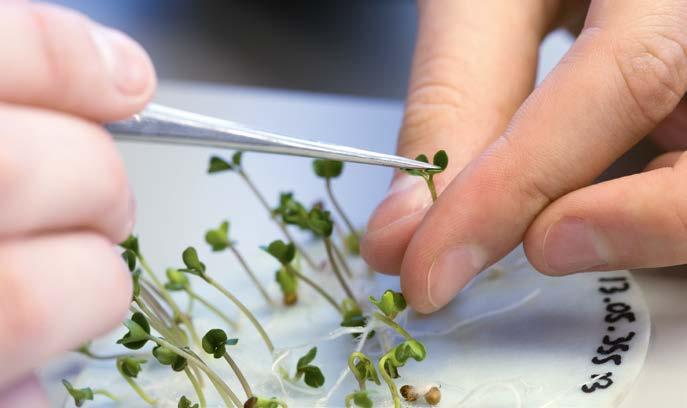


93 DUTCH INDUSTRY
Bejo
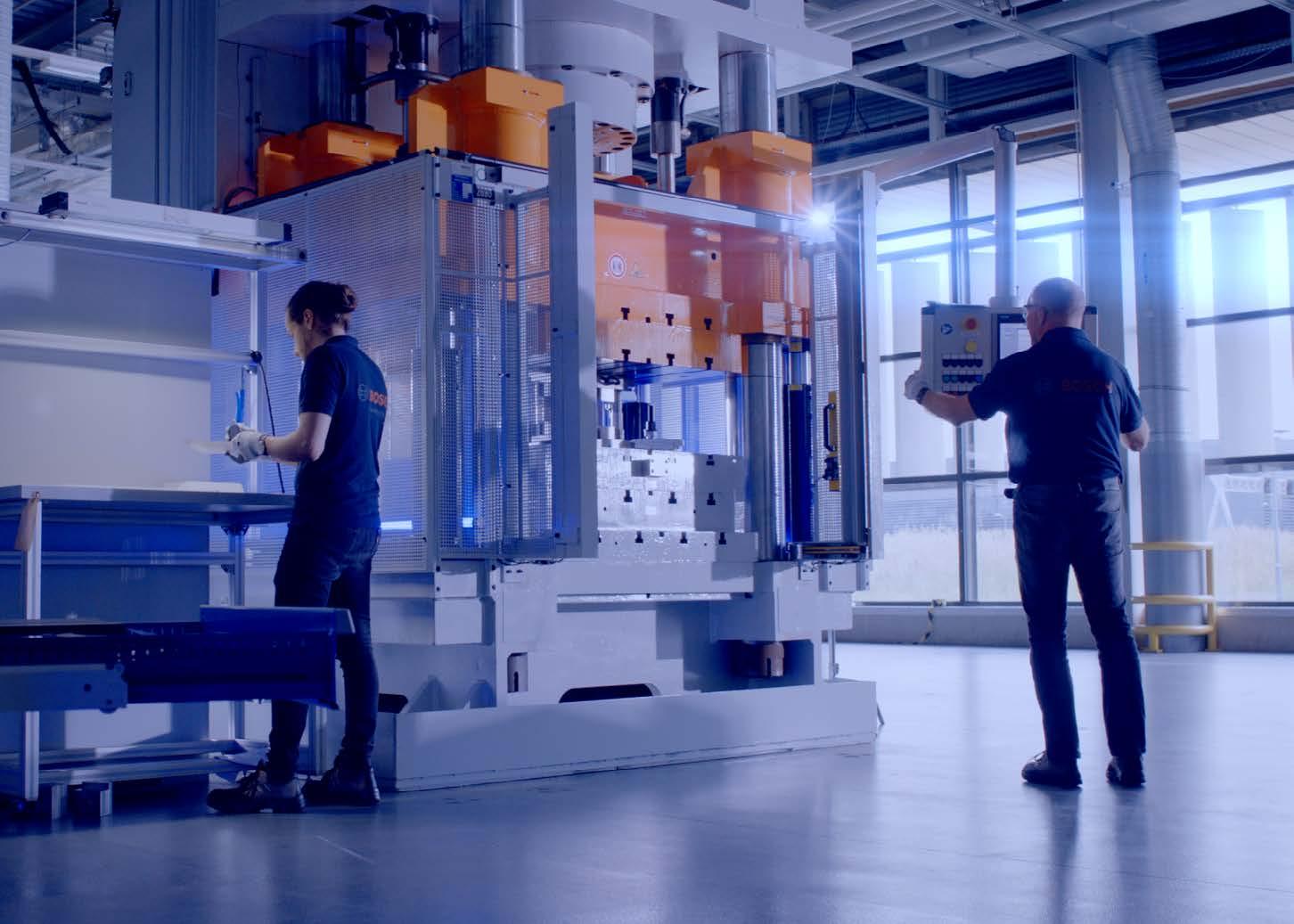
“It all starts with a coil of metal. We cut it, we stretch it, we heat it. Until we get the perfect shape!”
94 HIGH TECH SYSTEMS & MATERIALS
‘Technology should address the problems of our time; it should support humanity, make life easier overall, and make the world a better place’. This is what Bosch believes and this is also why, over the next few years, Bosch will invest significantly in technologies that enable at least some of these ambitions. But a transformation within the current Bosch products and services is also necessary. Building from its skills and knowledge in high-end thin metal products, the Bosch location in Tilburg expanded their product portfolio with technologies that empower a sustainable future.
New inventions for life
Years ago already, long before the accelerated electrification growth in the automotive industry, Bosch started to investigate which high-end thin metal technologies they could potentially develop in the future, based on its strong foundations in high precision technology and material science which have been used in its pushbelt production over the past few decades.
From design to end-product
Bosch has a unique combination of engineering and manufacturing competences on the same location. It enables the high-tech company to develop its products from idea to massproduction within a really short time frame. They are experienced and equipped to blank and form components with a precision up to one thousandth of a millimeter. The company is specialized in dedicated heat treatment to
create the perfect material structure for the right product performance.
Thin metal products for a sustainable future
The company’s specific skills and knowledge to develop and produce high-end metalbased solutions are now used to help address the problems of our time: providing components for sustainable technologies. Durable, efficient and of an astonishing high quality metal products of challenging dimensions and on a very large scale. These are exactly the kind of products and processes that are needed to develop products which enable the energy transition, such as electronic motors, fuel cell technology and hydrogen technology enablers. Bosch expanded their product portfolio with air foil bearings for, amongst others,
turbo applications, lamella stacks for electric motors and plates for fuel cell and hydrogen technology. With their global presence, they can quickly serve customers all over the world. Within just a few years, Bosch has developed new products that contribute to a more sustainable future
• E-stacks are lamella stacks designed for high performance electric motors. They are thin steel sheets coated with an insulating layer stacked together in electrical machines to enable energy conversion. They consist of a stator and rotor, together forming the heart of an electric motor. Bosch developed a new way of lamella stack production that creates opportunities for product and material features that are not achievable through conventional production methods. These features may result in cost benefits, increased power density and reduced power losses.
DUTCH INDUSTRY 95 Bosch

• Air foil bearings allow for low friction and high-speed rotations by generating a pressurized gas film separating the rotating and stationary surfaces. When the shaft spins fast enough, air between the shaft and foil is pressurized, pushing the foil and shaft away from each other to ensure contactless operation. Since air foil bearings use no oil, water, or lubricants, they weigh less and can withstand higher temperatures than other bearings. This makes them highly suitable for applications sensitive to contamination and corrosion such as fuel cell-electric air compressors, blowers, expanders, and heating, ventilation, and air conditioning systems. Bosch’ air foil bearings are designed for standard series production and can be customized. The production processes are flexible so that the bearings can be produced in both low and high volumes while meeting automotive standards, delivering a highly efficient and durable product. This is unique in the world, as air foil bearings are really challenging to mass produce.
• Single sheets, or the finished product bipolar plates, are metal plates which are welded or stacked together in fuel cells or

electrolyzers. In fuel cells, separate plates ensure the distribution of fuel and oxidant in the cells, the separation of the different cells, the collection of the electrical current produced, the drainage of the water from each cell and the humidification of the gases and cooling of the cell. In electrolyzers, individual plates supply water to the anode, transport hydrogen from the cathode, and provide electrical conduction between cells. These plates have very good electrical conductivity, no gas permeability and can withstand harsh acidic environments.
On the edge of what is possible
Bosch’ thin metal technology appears to be very well suited to fit systems that address the problems of our time. With very precise and very high-quality metal components, the high-tech company creates products that help make the world a better place: producing on the very edge of what is deemed possible: amazingly accurate, efficient, extremely thin and at a very large scale.
“It is our curiosity and drive for perfection which lay the foundation for new inventions for life.”

THE CORE OF SUCCCESS: THE CVT PUSHBELT
Bosch maintains a clear market leadership in the field of development and mass production of pushbelts for Continuously Variable Transmission (CVT). This innovative automatic transmission was invented by a Dutchman, Hub van Doorne, who is held by many to be one of the founding fathers of the Dutch automotive industry.
The seemingly simple pushbelt is in fact a piece of high technology: it has to withstand enormous powers during a very long period: outliving the lifespan of a car. It took years to reach the necessary level of quality and endurance with constant small but important improvements in the design and construction. But once ready, the CVT was an immediate and fast-growing success. Mass production commenced in 1985. Since then, the CVT has grown from a niche to a mature mass market product. One in four automatic transmissions worldwide is a CVT, thanks to its popularity in United States, Japan, and China. In 2024, the company expects to release the 100th millionth pushbelt. With hybrid applications in the market, the pushbelt is here to stay for the years to come.
96
E-STACK AIR FOIL BEARINGS

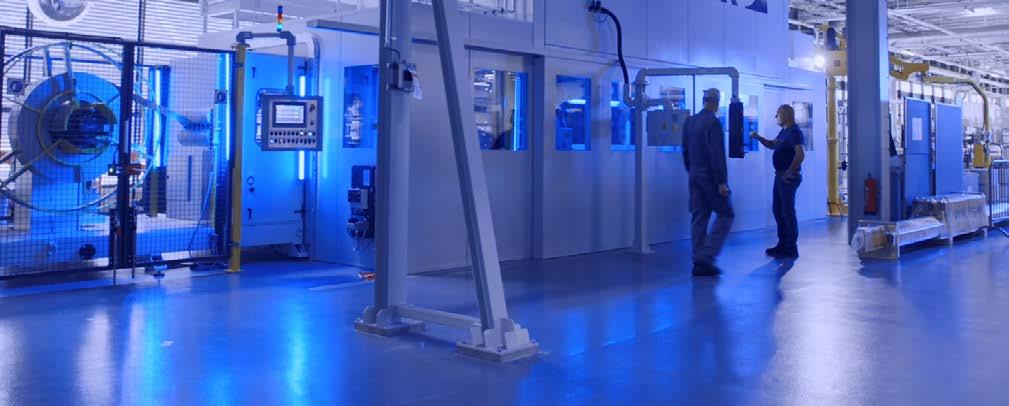



97 DUTCH INDUSTRY
Bosch

“Through our pilot we sparked organizational change and furthered the conversation around circular economies.”
98 ENERGY | HIGH TECH SYSTEMS & MATERIALS
Excess Materials Exchange
Excess Materials Exchange is determined to accelerate the global transition to a circular economy: and to play a part in creating a more viable planet. This can be achieved by showing the financial and ecological value of materials, challenging companies to design and produce their goods in a more efficient and circular manner and by stimulating cross-sectoral exchange of excess materials.
Showing the way from waste to wealth
Our planet has shown to have an enormous resilience. For a long time, it could absorb the piles of waste which humanity produced but, as the human population continued to grow and production capacities continued to expand, this resilience just wasn’t enough. According to the United Nations, extractive industries are together responsible for more than 80% of the loss in biodiversity. At the same time, rates of return on the extraction of primary resources are diminishing. As resources become scarcer and more costly to extract, the environmental impact of resource extraction and processing are becoming more evident.
The Ellen MacArthur Foundation estimates that by discarding our plastic after a single use we effectively waste €80-120 billion in value every year. Furthermore, our annual electronic waste is worth an estimated €55 billion. Added to that, a most disturbing fact
is that we capture back only a meagre 5% of the total potential value of our waste.
“We need to change the way we think about our waste. Our dream is to create a paradigm shift in which we turn waste from something worthless into a valuable resource: from waste to wealth!”
Excess Materials Exchange (EME) aims to enable companies to shift away from using primary resources in favour of secondary resources. The company aims to realize this radical change by demonstrating that materials that are waste to some, can actually have a lot of value for others. EME facilitates what can become a powerful economic model by creating not only the right infrastructure, but also by offering the right tools to effectively use this infrastructure.
A powerful platform
Excess Materials Exchange (EME) is a digital platform that unlocks the maximum potential of a company’s materials, products and waste streams by matching them to their highest value uses. EME’s vision demonstrates that what is better for the company’s profits can also be better for the planet.
“In our experience, on average, material flows increase by 110% in financial value, and the ecological footprint reduces by 60%.”
The Excess Materials Exchange facilitates the transition to a circular economy. Instead of relying mainly on primary resources, as is customary in our current ‘take-make-waste’ model, the company envisions a move to a wasteless economy in which excess materials endlessly loop through value chains.
DUTCH INDUSTRY 99
According to the EME founders, the transition to a circular economy requires the current market participants to overcome a number of challenges: for example by challenging a number of aspects lacking in modern industry. These can include: a lack of transparency on the availability of resources, a lack of organizational awareness, a lack of urgency and of quality control. Consequently, the leads to a failure to adequately scale markets for secondary resources.
“In order to speed up the adoption of circular models, we need to ensure secondary resources are available when they are needed, in the quantities and quality requested, and that their availability can be predicted.”
To overcome all of these challenges, EME has developed its own digital materials exchange platform that functions like a ‘dating platform’. However it also speeds up the process of successful exchanges by providing dedicated tools:
• A digital ‘Resources Passport’ to give materials an identity and to store material, component and product information. The passport gives an insight into such aspects as the composition, origin, toxicity or deconstructability of the material or product.
• A Tracking and Tracing module to connect the Resources Passports with real-life assets and follow them through value chains.
• A Valuation module to quantify the financial value and environmental and societal impact of the resources that are mapped.
• A Matchmaking platform to facilitate and ensure high-value uses of materials.

Holistic approach
However powerful these tools, by themselves they are not enough for companies to transit towards a circular economy. The tools are only effective when they are part of a holistic approach.
EME’s approach includes help with implementation of the tools in an organization. Furthermore, EME helps companies understand how their tools fit within their current legal, accountancy and financial contexts. Moreover, they always use network-type solutions, such as involvement of stakeholders, to optimise for the contextual parameters in which companies operate. They further encourage the development of the larger ecosystem by raising awareness of circular business models and building a network of excessmaterial providers and sellers. Finally, they promote adoption of circular business models by helping clients undertake the required organizational and cultural changes.
The Pilot: exploring the possibilities of EME
Working with ten ambitious Dutch companies, including ProRail, Rijkswaterstaat, Schiphol, Aquaminerals, Heembouw, Sodexo and Tarkett, EME took the first steps in exploring the possibilities of the digital platform. The goal of this pilot was to better understand what was necessary for the optimal functioning of a platform that can exchange excess material flows between industries and sectors. In addition, EME helped clients understand what is necessary to exchange materials on a platform such as theirs.
For each partner they looked at multiple excess material flows and investigated how these excess materials could be reused at their highest value. Eighteen different materials made their way through the platform for which EME calculated various potential financial gains. These included finding high value alternatives and thus savings for resources hitherto subject to waste, such as water usage, CO2 emissions and energy. EME’s findings are then
100
Excess Materials Exchange



FROM WASTE TO WEALTH: EXAMPLES
Two examples from EME’s pilot clearly demonstrate what can be done to waste streams using the holistic approach from the company and the tools provided.
Dutch railway tracks
The steel used in Dutch railway tracks consists of eighteen different elements and is extra strong because of high concentrations of manganese. However, as the tracks have an average lifetime of around forty years, this means that between 200 and 300 km of railway tracks need to be replaced on a yearly basis.
In the current end-of-life scenario, around 90% of all tracks are exported to Asia or Turkey for a scrap price. After arriving on location, they are either reused or recycled through a melting process.
Based on the results of the Resources Passport analysis, EME identified multiple possible matches, to reuse railway tracks in several different ways. These include, for example:
• as construction beams in buildings;
• as a functional support structure in the shifting banks of Amsterdam canals;
• in touristic structures such as bike racks, information panels or wildlife grids.
For all these applications EME found business partners looking for such materials.
Within the proposed circular match, the energy use was reduced by almost 80% compared to the current end-of-life scenario. Also, the financial impact of such a match is significant, as the value of one metre of railway track increases from € 7,90 per metre to € 20 - € 50 per metre when railway tracks are reused for consecutive functional purposes such as construction beams.
Orange peel
The company Sodexo generates 77 tonnes of orange peels daily. Orange peel comprises two different organic components: the orange outer layer known as the flavedo contains fragrances and oils while the white inner layer known as the albedo contains cellulose and fibres. These materials possess a significant value in the production of new goods.
Currently, a waste management company collects the orange peel at end-of-life to produce biogas through anaerobic digestion. Based on the results of the Resources Passport analysis, EME identified multiple possible matches:
• Innovation partner Spaak uses supercritical CO2 gasification to extract limonene, 10-fold citrus oil and pectin from orange peels. The waste stream of this process can be sold as high-quality cattle feed.
• Peel Pioneers uses supercritical H2O gasification to extract 10-fold citrus oil and limonene. The waste stream of this process can be sold as high-quality cattle feed.
• An Italian-based company called Orangefiber extracts cellulose from citrus fruits to create polymers. These polymers can be spun into yarn from which clothing can be produced.
Environmental impact
EME demonstrated that proposed circular matches could realize an instant cost reduction of 50%. Moreover, innovation partner Spaak expects to process the orange for free in the coming years and even expects it could pay Sodexo up to € 20 per tonne in the future. When combined with Spaak’s lower waste management fee, the increase in Total Value is € 164.11 per tonne of orange peel.
101 DUTCH INDUSTRY
documented in the corresponding resource passports. Additionally, together with the law firm Stibbe, accountancy firm EY and the bank ABN AMRO, EME explored the legal, accountancy and financial framework in which the industries operate to establish formal frameworks for measuring the social and environmental impact of the Excess Materials Exchange.
Pilot outcomes
The pilot confirmed the need for a holistic approach to overcome the challenges described above. Such an approach requires an identity for resources, the ability to track and trace materials, methods for quantifying the financial value of excess materials, as well as tools to quantify the environmental and societal impact for reusing them. The company has also confirmed that its current legal framework provides room for crosssectoral exchange of excess materials.
The eighteen materials mapped by the EME weighed 70,000 tonnes (equal to the weight of seven Eiffel towers). When matched in the holistic model these account for the following potential impact reductions:
• A CO2 emissions reduction of 123 kilotonnes, which equals the emission of all citizens of Amsterdam (862,987) driving from Amsterdam to Milan;
• An energy saving of 2,883 TJ, equal to the energy consumption of the public lights in Paris for at least five years;
• A water reduction of 2.1 million m3 equal to the content of 860 Olympic-size swimming pools;
• €54 million in environmental cost reduction and €64 in financial value creation. The potential savings on waste treatment cost add up to €5.4m annually.
Not just words: Act!
It is evident that the shift to a circular economy is not only necessary to save our planet, but also that this shift will result in overall benefits of trillions of Euros every year. Instead of hiding behind big macro trends and developments though, Excess Materials Exchange acts by engaging single companies to show them how they can be a part of this and make money at the same time.
To move ahead, EME is already busy implementing the next steps to speed up the shift:
• by implementing the matches they created and update clients’ operations to accommodate these excess materials;
• by further developing their tools and digitising them on the marketplace;
• by training their matchmaking algorithm;
• by adding more companies to the platform and helping them reduce their environmental impact and transition to a circular business model.
Excess Materials Exchange has created a powerful platform to speed up the shift to the circular economy and use it as a lever to create a more equitable and sustainable world.
102
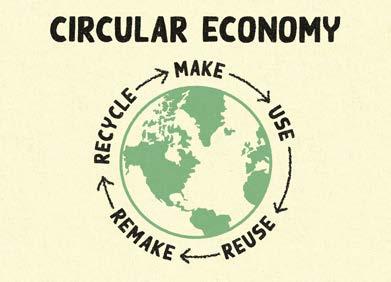



103 DUTCH INDUSTRY Excess Materials Exchange

“With every kWh we sell, we avoid fossil fuels being burned and greenhouse gasses ending up in the atmosphere.”
104
ENERGY
Climate change is among the biggest challenges that humanity has ever faced, and its consequences are devastating. Fastned addresses one of its root causes by building a network of fast charging stations for electric vehicles (EVs) across Europe and by doing so, the company creates the kind of freedom that drivers of electric vehicles are looking for.
Creating freedom for electric drivers
Fastned is securing its important role in cleaner mobility as the company enables EV users to drive millions of electric kilometers, without burning fossil fuel. In a country like the Netherlands, where 19 percent of all greenhouse gas emissions in 2022 was caused by mobility, this makes a big difference. And the momentum is here: the transition to electric mobility is quickly gaining pace. According to the European Council, 30 million electric vehicles will be driving on EU streets by 2030. However, as more people switch to electric vehicles, the demand for charging infrastructure will continue to increase.
Fastned has been developing fast charging infrastructure for electric vehicles across Europe since 2012. By the end of 2023, Fastned, which was founded in Amsterdam, had built more than 280 fast charging stations in the Netherlands, Germany, United Kingdom, Belgium, France, Switzerland and
Denmark. It plans to open its first stations in Italy in 2024. The company specializes in developing and operating fast charging stations where drivers can charge their electric vehicle with up to 300 km of range in 15 minutes before continuing their journey.
ELECTRICITY FROM RENEWABLE SOURCES
Fastned only provides electricity from renewable sources such as the sun and the wind. In 2022, despite complexities due to the energy crisis, the EU generated more solar energy than ever, exceeding energy from fossil gas.

“We wanted to start as soon as possible, and as fast as possible because we knew that the transition to electric cars was inevitable.” - Michiel Langezaal, CEO
DUTCH INDUSTRY 105
Fastned
Pioneers
Fastned founders Bart Lubbers and Michiel Langezaal realized that electrical vehicles would never amount to much without the exhilarating sense of freedom that regular cars could offer. They decided to explore their shared insights. Freedom for EV drivers became the main guiding principle that laid the foundation for their company.
Bart and Michiel agreed that the transition to electric mobility would only take off when charging became hassle-free and available wherever needed. As they firmly believed in the future of electric cars, they also recognized the significant value of investing early in futureproof charging stations at convenient locations.
By acting on this conviction and starting their company, the two Fastned founders have been leading developments in the EV charging market from the start. And, back then, not many people shared their conviction. In fact, people didn’t want to invest in charging infrastructure until the number of electric cars on the road would be much larger. This early start helped Fastned to become a leading player in the EV charging market.
Growing importance of fast charging
Fastned’s goal is to realize a European network of one thousand fast charging stations on prime locations in 2030, where all electric vehicles can charge with renewable energy from the sun and wind. This will help electric drivers move freely across Europe.
In the early days, most EV drivers charged mainly at home, and many still do. However, the number of EV drivers is rapidly rising and is projected to be ten to twenty times larger by 2030 compared to 2020. As the number of electric cars increases, the majority of EV drivers (especially in cities) will not have their own driveway. They will need public infrastructure to recharge their batteries. A lot of public charging is what’s called slow charging: low power charge points on streets or parking lots. It takes many hours to charge at a slow charge point, therefore a lot of infrastructure and additional parking space would be needed for charging when more EVs hit the roads. But public space is limited. Therefore, there will be a growing need for fast charging stations such as those built by Fastned. Fast charging a car only takes on average 20-25 minutes (and will take even less in the near future), and therefore less space is needed. A Fastned station with 8 charge points currently already caters for around 60.000 charging sessions per year, and this number keeps growing with increasing demand without needing more space.
As a result, the need for fast charging is accelerating at a faster pace than the charging market as a whole. Besides that, the car industry’s rapid development in producing batteries that are bigger and faster to charge makes fast charging more attractive every year. Fastned adapts to this growing demand, by building scalable stations and by equipping them with the latest technology fast chargers.
“We believe in the construction of large, scalable fast charging stations where hundreds of vehicles can charge each day.”
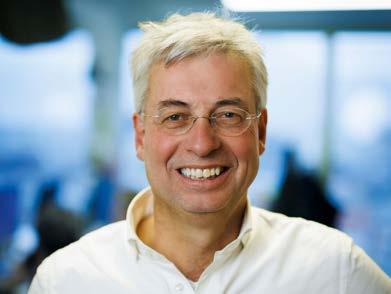
“From the very beginning, we went all-in to get the best locations. It is the only way!” - Bart Lubbers, co-founder
Location, location, location!
Fastned’s founders realized from the start that they needed to approach their business as a retailer. Much therefore depends on suitable location and convenience. So, they asked themselves: where should our fastcharging stations be located? They understood that the stations should be along roads with high traffic numbers, where the number of passing EVs would also be high.
With this in mind, Fastned started operating its first stations at highway service areas. The company secured rights at service areas where they could build large, scalable charging stations. Their design not only aims at creating the best environment to charge, it also makes sure they are clearly visible. Their typical yellow solar canopies and the strong visual branding are crucial in this. They are a beacon to EV drivers but also show all other drivers that charging is available, making the switch to electric driving easier.
106
International rollout
Good locations for fast charging are mostly found along motorways, busy roads connecting these motorways or arterial roads near cities. These locations are often owned by (local) governments. Fastned advises governments across Europe to grant charging concessions through competitive tenders. This has proven to be the best way to speed up the rollout of high-quality charging infrastructure. Obviously, Fastned participates in many of these tenders and has a track record of winning 20% of them.
There is a lot of room for further growth, as Fastned estimates that there will be around a hundred thousand fast charging stations in Europe in two decades from now. Around ten thousand will be at premium, so-called A+, locations. Besides that, Fastned increasingly works with private landowners, who look for fast charging infrastructure to be built on their property. They choose Fastned because of their award-winning charging concept and healthy business model.
This combined approach of securing publicly and privately owned locations is Fastned’s strategy to a European network of one thousand stations on prime locations by 2030.
Focus on the customer and a strong technology backbone
Fastned has a customer-first approach and internalized key capabilities. It now has more than ten years of in-house experience

with location design, software development, maintenance, customer support, construction management and network operations. The company is continuously strengthening its technology backbone. A special Data and Insights team tracks all operational data, to improve service and to unlock new opportunities
The focus on the customer, the fastest chargers with over 99% ‘uptime’ and the efficient ‘drivethrough’ concept have brought the company international success: among EV drivers, Fastned is known as one of the most customercentric and reliable fast charging networks in Europe. This is illustrated by their consistent top ratings in Google and charging awards from EV drivers in the Netherlands, France and the UK.
“We want people in all European countries to know us and know what we stand for.”
Exponential growth
Fastned grows exponentially in multiple ways. A strong indicator of their growth is the number of charging sessions it handles. It took around six years before Fastned reached its first million charging sessions. In the third quarter of 2023, it handled one million sessions in just three months.
The Fastned team is also rapidly growing: by the end of 2023, the team has grown to more than two hundred talented people across six offices. This diverse group of people, with more than 30 different nationalities share the same purpose: they work every day to help accelerate the transition to electric mobility.
“Fastned is best positioned in the most attractive segment of EV charging.”
107 DUTCH INDUSTRY
Fastned
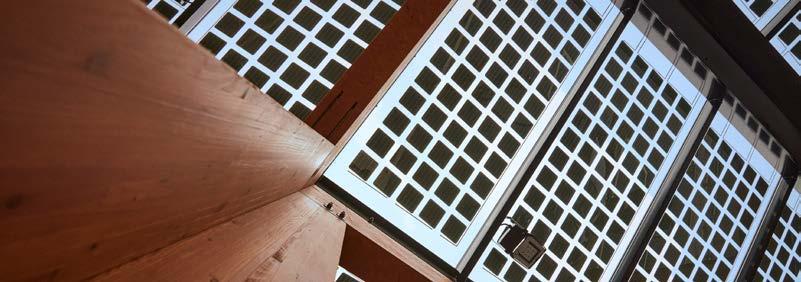
THE BEST CHARGING EXPERIENCE
According to Fastned, a high-quality charging experience is fundamental to giving EV drivers a true sense of freedom on the road. The company is continuously trying to improve this experience.
“From locating a Fastned station using the Fastned App, to charging and easy payment, and everything in between, we strive to give our customers a ‘first time right’ charging experience: every single time.”
Some of the key elements of the highly valued Fastned charging experience are:
• High quality and continuously improved services: to accelerate the transition to electric mobility, Fastned wants fast charging to be a more convenient, intuitive and fun experience than refueling at a petrol station. Therefore, they constantly invest in the customer experience: for example, by adding more and faster chargers, by offering easy payment possibilities and by maintaining an industry-leading uptime and reliability.
• A high-quality app: the Fastned App is an essential tool in the company’s customer-centric strategy. It creates a strong link between the EV driver and Fastned. Through the app, they make charging
accessible for all, by providing relevant information such as station locations, route plannings, number of chargers available at a station, and even the number of chargers that are in use at any given moment. It also shares specific information about EV models, such as charge curves, to help drivers get the best charging experience with their cars. Finally, customers can pay for their charging sessions seamlessly via the app.
• Transparency and fair pricing: Fastned is very transparent about the origin of electricity. For this, the company uses the EU’s Guarantee of Origin (GoO) system to ensure that for every kWh of electricity they sell, one kWh of renewable energy has been produced. This is done on a country-by-country basis, for example buying German GoOs for all kWhs sold in Germany, to stimulate local renewable production. Price changes are quickly communicated to all customers through different platforms and channels: the mobile app, website and at charging stations.
Together, these elements make up one of the best charging concepts in the market. This helps to win concession tenders and individual partnerships with private landowners that increasingly see the importance of a great charging concept.
THE FASTNED BRAND
The Fastned brand is focused on establishing a unique and fresh position in the fast charging market and conveying what makes it distinct and exciting. It aims to create extraordinary moments of connection at every Fastned touch point (not just the charging experience). An approach they’ve coined as being “Extra Electric.”
The brand’s identity is heavily inspired by its stations and the canopy roof, which influence its overall visual language and infuse its most iconic brand asset into all materials. The canopy roof, in particular, comes to life in a number of brand elements such as the logo, graphic design elements, photography, and illustrations. This is further accentuated by the prominent use of their distinctive yellow color. This consistent branding extends beyond the physical, maintaining a cohesive identity in the digital realm as well.
108



109 DUTCH INDUSTRY Fastned
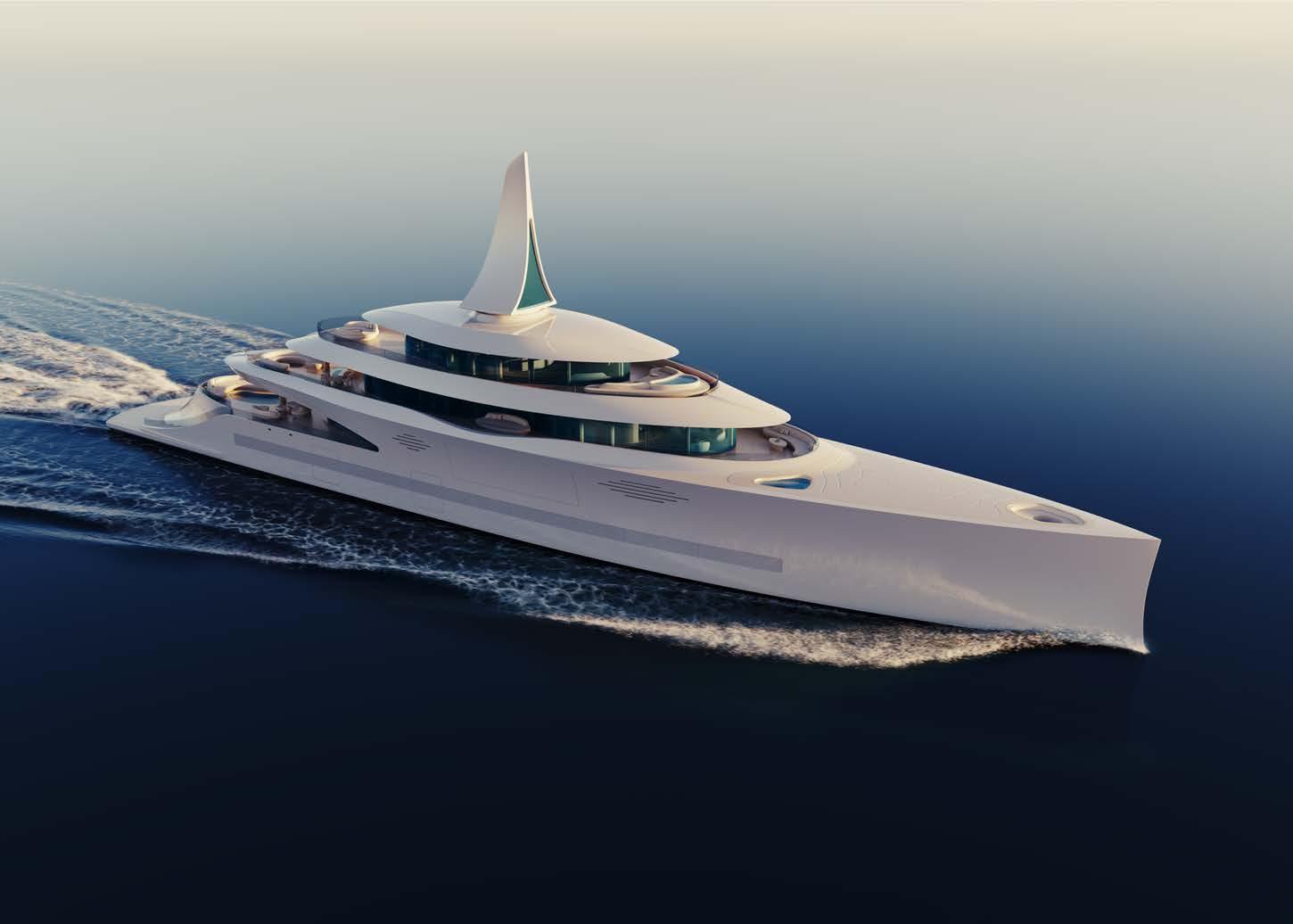
“Feadship Concept design Dunes – inspired by nature – embraces sustainability.”
110 WATER & MARITIME
The superyacht industry appears to be a perfect breeding ground to trial, test and perfect new sustainable solutions. Thanks to extraordinarily influential clients who have the resources to drive sustainability, and the many skilled craftsmen, engineers and architects who are not afraid of pushing the boundaries, Feadship not only builds the most exclusive ships in the world, but also accelerates sustainability.
Building superyachts can change the world
What exactly defines Feadship? It is difficult to describe the intangible, but essential, ingredients which together make the group of companies and the ships they build. But it is very clear that, while the product might seem very material and the processes involved rather technical, it is people who play a center role. From the shipyard to the open seas, a Feadship is all about people.
This starts with the people building the ships: each individual craftsman is aware that what he or she does directly affect a client and their Feadship. It is the people’s pride and commitment that extend to everything you see on a Feadship and, to the many things that you do not see.
On average a Feadship craftsman has twenty years of experience and worked on forty yachts. The need for a sharp eye and handson craftsmanship is instilled in the workforce
from the moment they start their long career with Feadship. It is a company wisdom that Feadship designers have the head of an engineer and the heart of an artist.
As such, Feadship appeals to the passionate, the persistent and the demanding. The ones who understand that experience counts, knowledge is everything and heritage doesn’t just happen overnight. All of this also goes for Feadship clients. They recognize themselves in what Feadship does. They know a fellow perfectionist when they meet one: a shared vision, the same dream... Feadship owners and Feadship builders: Deep down they’re the same.
“The best materials for building a Feadship are incredible people.”
Bespoke
Each Feadship is defined by its superb craftsmanship and sets the standard in every aspect of design, engineering, and construction. These bespoke motor yachts are created in partnership with owners who are prepared to invest in a wonderful building experience and reap the rewards for many years to come in terms of both pleasure and re-sale value.
For Feadship starting a new project means to start with a blank page. This entails designing a bespoke superyacht that is entirely individual and unlike any other in the world. It becomes clear that for Feadship clients, ‘custom’ should never be confused with ‘customising’ – which actually involves tweaking an existing platform or concept. Feadship works with clients to create a oneoff luxury motoryacht that exclusively and uniquely reflects their character and use.
DUTCH INDUSTRY 111
Feadship
SHIPBUILDING SINCE 1849
Feadship is short for the First Export Association of Dutch Shipbuilders. The group was founded in 1949 when six yards and De Voogt Naval Architects agreed to pitch their highquality products on the American market under the Feadship name.
Today there are three parties in Feadship: Two of the original yards –Royal Van Lent Shipyard (1849) and Koninklijke De Vries Scheepsbouw (1906) – and De Voogt Naval Architects (1913). Both yards have been granted royal status by the Dutch royal family in recent years. Each member of Feadship has a distinctive history and its own inhouse disciplines and craftsmen.
An average of three to four Feadships join the global Feadship fleet each year. All of them are expressions of individualism: Pure custom creations birthed on behalf of – and in partnership with – the world’s most discerning thinkers.
Every Feadship is entirely individual and none of them look the same. All of them are clear expressions of individualism. But Feadships also have something in common. They have an inherent quality that you feel when you step onboard, and which ensures the vessel holds her value. They are the product of a perfect craftsmanship that has been passed down the generations. Its traditional values are upheld in every discipline as the yards draw on an unrivalled heritage dating back to the nineteenth century.
“We don’t build yachts. We take a blank page and an open mind and turn dreams into wood and steel. We don’t build yachts. We leave that to the others.”
Making the impossible
At Feadship everybody is busy with innovation. Not just the designers, but also the shipyards, the project managers and the engineers. They all are dedicated to safeguarding the quality, safety and extraordinary comfort for which Feadship is so renowned.
Feadship has a long tradition of presenting designs to drive research and design discussion with deep dives into the likely
expectations of the next generation of Feadship owners based on client feedback, long brainstorming sessions, and in-depth technology research.
Feadship fundamentally believes that the future has to be different. Traditional luxury standards such as quality, craftsmanship and rarity with a price premium, while important, are just part of the package. Today, sustainability and corporate social responsibility are just as much part of the shipyard’s overall brand.
“Building a Feadship is great fun and many owners become very involved in the process. This is one of the reasons why we have so many repeat customers. It’s what we call the Feadship experience. And why we can say with confidence that ‘There are yachts and there are Feadships’.”
Reducing the environmental footprint
Feadship, alongside developing shipbuilding technology, has spent considerable sums on their own facilities so that the environmental footprint of both yacht and shipyard are considered as one. There is a fine line as to whether a shipyard should develop future technology or whether a client should challenge them to do so. Feadship has made a commitment that the industry needs to match: to deliver Net Zero by 2030. Part of this is building yachts capable of using alternative fuels – even a combination of fuels. Hydrogen, biofuels and methanol are some of those possibilities. Feadships
112

DUNES – A SUPERYACHT INSPIRED BY NATURE
The 2023 Monaco Yacht Show featured the debut of Feadship’s latest breath-taking concept design that showcases how intelligent exterior design can significantly reduce a superyacht’s energy needs, and at the same time capture wind and solar energy almost invisibly. The flowing design lines reflect the concept’s namesake… Dunes. It’s what can’t be seen, however, that sets this concept at the forefront of sustainability.
The Dunes concept takes a big leap toward Feadship’s goal of Net-Zero superyachts. Numerous factors, from large overhangs that shade windows and reduce cooling requirements, to next generation storage batteries, to eliminating teak decks, to a new direction in fuel cell technology and even a radical propulsor are ‘stacked’ to produce a yacht calculated to eliminate up to 95% of negative environmental impact factors, as ranked on the YETI index, compared to a yacht
designed to minimum mandatory environmental regulations.
Feadship is making a huge sustainability leap at the beginning of the process by shifting to “low impact” steel hull and aluminium/wood superstructure. These metals can be produced with 50-70% less CO2 emissions, and wood is a CO2-negative material.
Dunes also features a breakthrough, high efficiency electric propulsion system, developed by ABB called Dynafin™ and onboard electrical power will be generated from equally revolutionary solid oxide fuel cells that use green methanol as a reaction agent.
Unlike many futuristic renderings, Feadship concept designs are buildable. An owner could begin design discussions tomorrow.

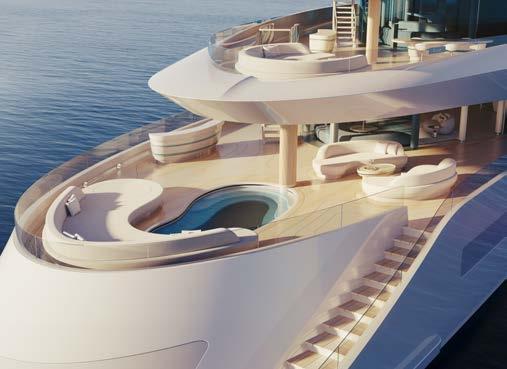
113 DUTCH INDUSTRY
Feadship
WORKING TOGETHER TO SAVE OUR OCEANS
Water Revolution Foundation was established on stage at The Superyacht Forum in 2018. It was an important moment for the industry; finally there was an organization ready to take the lead and drive sustainability.
From its beginning, the foundation was a collaborative effort. It was initiated by a small group of superyacht industry leaders (like Feadship) who share the belief that they must change course in order to better look after our planet and guarantee the future of our industry.
Through collaboration and innovation, the partners of the foundation show the way towards neutralizing its ecological footprint and preserving the world’s precious oceans. As such, they are a frontrunner in encouraging all parties involved in the construction and use of large yachts to take responsibility for their impact on the environment.
Together, they take a constructive and collaborative approach that is aligned with the international scientific and institutional agenda. By providing the superyacht industry with tools, knowledge and best practices, Water Revolution Foundation is the central platform facilitating the shift towards the neutralization of their ecological footprint and conservation of our precious oceans.

roadmap to zero mentions this as “Fuel Flexibility”. Tier III regulations have made the industry progress with cleaner fuels, including biodiesel that is not even fossil based. Feadship is already living up to their road map with their recent launches like Obsidian.
Clients, designers and shipyards have to work together to refocus the concept of the private yacht. For example, to integrate electric, hydrogen, synthetic, solar and wind.
Keeping the Oceans clean
Sustainability is a focal point within Feadship, as it is integrated within the yards, the design process, the final product and their own behaviour. The company feels responsible for keeping the oceans clean as experience of sailing on a superyacht goes hand in hand with preserving nature and water quality.
Feadship turns this feeling of responsibility into action by introducing groundbreaking sustainable technologies and designs on a regular basis, but its green ambitions go beyond its own walls. As is demonstrated
by the company’s active role as one of the co-founders of Water Revolution Foundation to accelerate sustainability in the superyacht industry.
Pursuit of perfection
Since its foundation, every new Feadship has been the best the company ever built, all boats in their fleet setting a new standard in terms of craftsmanship, design, engineering and construction. This relentless pursuit of perfection is likely to continue well into the future.
Thanks to Feadship’s extraordinarily influential clients who have the resources to drive sustainability, and the many skilled craftsmen, engineers and architects who are not afraid of pushing the boundaries, Feadship can not only make new perfect Feadships, but also realize new sustainable solutions.
“A dream that goes from the mind to the page, from the page to the workshop, from the workshop to the dock and from the dock to the ocean, can go anywhere.”
114




115 DUTCH INDUSTRY Feadship

“Any Flowfirm employee understands both our own customers and the customers of our customers.”
116
HIGH TECH SYSTEMS & MATERIALS
Health and nutrition play an essential role in our society. Therefore, production companies in the food and pharmaceutical industry, where safety and hygiene are of vital importance, are also major players. Flowfirm offers optimal process solutions with innovative projects for these industries and at the same time makes a positive impact on the environment.
Making food and pharma more sustainable
Flowfirm positions itself in the food and pharmaceutical markets as a single fixed partner with all the relevant experience as a mechanical system integrator. Thanks to many years of practical experience, up-to-date knowledge and broad services, Flowfirm can offer integrated turnkey solutions geared to the technical issues that arise in these sectors.
Being a specialized “mechanical system integrator”, the company designs, prefabricates, builds, instals and maintains process installations with a relatively young and talented staff of 170 members, who operate mainly on site. But, wherever located, all Flowfirm employees are bound by a passion for technology and a commitment to progress and development, as part of a solution-oriented, ‘can-do’ work philosophy.
Based on their state-of-the-art expertise, futureorientated solutions and positive, can-do work
mentality, they seek to build confidence, earn respect and achieve a 100% satisfaction rating. It is their firm belief that working this way is a solid basis for long-lasting relationships.
From concept to completion
Flowfirm covers the whole planning and production field, comprising consulting, engineering, design, project management and delivery, as well as installation right through to commissioning. This remains true whether the client is seeking an adaptation of a production plant or a completely new production line.
From concept to completion, Flowfirm can add value in every step of the process:
• In the initial phase, Flowfirm’s experts support clients in process technology and engineering, based on their extensive knowledge and experience in this area.

“We make a positive impact on the environment with innovative projects that, among other things, contribute to water savings, energy optimization and heat recovery.” - Edwin de Wilt, Managing Director
DUTCH INDUSTRY 117
Flowfirm
• In the development phase, they help to create SMART goals and perform the technical and financial stages, which leads to a clear demonstration of feasibility.
• In the application phase, they help to create the technical and commercial specifications on the basis of which suppliers can be invited to provide quotations. These quotations can be used for the investment approval process.
• In the implementation phase of the project, they can deliver the complete process line or modification, installation and commissioning. During this phase they can also execute a range of services such as project management and validation processes.
While, at each stage, Flowfirm offers interesting solutions, the highest value added for clients is in the integrated approach, which finds an optimum for the process as a whole. The important basis of such integration stems from the development and implementation of new technologies or improvements. It takes into account the six measurable variables that define the overall production performance: Safety, Quality, Efficiency, Capacity, Sustainability and Maintenance. All of these variables are related. The trick is to align them and, by so doing, achieve the optimal result. With its registered Optimum PRO6® method, Flowfirm ensures that clients are constantly aware of all the facets so that they can consciously make the necessary strategic decisions.
Finding the optimum
The different processes in production enterprises in the food and pharma sectors are increasingly interconnected: from the storage of ingredients to the packing of the finished product. To prevent each new optimalisation causing complications elsewhere in the production process, Flowfirm applies an integrated strategy to achieve optimal results.
From the analyses of a client’s wishes and requirements, up to service and maintenance of the completed production line, Flowfirm considers the highest norms, challenges and aspirations at six process dimensions. By bringing these together in one integral solution, this enables the client to boost production performances and improve its business return.
The six dimensions comprise:
• Safety: installations need to meet the latest safety standards.
• Product quality: the quality of a production process determines the quality of the final product. This includes reviewing the hygienic design of the processing line and testing the quality and integrity of the product at all stages of the process.
• Efficiency: by analysing the production line performance in relation to potential capacity, Flowfirm is able to determine possible room for improvement. The result is increased production with the same technical resources.
• Production capacity: Flowfirm researches process and technological improvements to increase production volumes without negatively impacting on quality. The ultimate
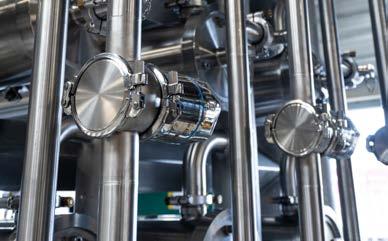
goals here are to achieve ‘first time right’ production, lower costs and greater profit.
• Sustainability: the quest for more sustainability can often save a lot of money. Therefore this emphasises the design of lean processes with as little waste as possible. Examples of this include production waste management, reducing the use of water, energy and chemicals as well as lowering CO2 emissions. Together with the client, Flowfirm also seek opportunities to reuse process heat and find profitable solutions that have a positive impact on quality and capacity.
• Maintenance: a strategic approach to maintenance is an effective way to improve profitability. Flowfirm reviews the total cost of ownership and the total lifecycle benefits of a client’s capital goods.
By aligning these six measurable Process Fundamentals during development and implementation, Flowfirm achieves the optimal process.
“We gladly like to advise and to solve a customer’s question, but we also like to perform the necessary pre- and/or detail engineering, up to supplying the complete solution. This is exactly what clients also like: complete and integrated solutions.”
118

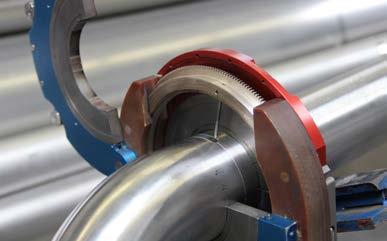

Design and build
Flowfirm Process Solutions is responsible for the design: This division takes care of the consulting, engineering, design, commissioning and project management for building and installing or modifying process systems. It therefore serves as the company’s front office and is key to a successful cooperation.
Flowfirm Process Installations specialises in delivery, fitting and project management during the installation, service and maintenance of complete production lines. This includes both standard solutions as well as those designed specifically for the production process.
As Flowfirm’s clients appreciate the single access and integrated approach, the company has integrated these two, previously separate, divisions to now operates as one entity.
“We consider real time information about planning and progress crucial.”
PLANT STOPS: ‘OPEN HEART SURGERY’ IN FACTORIES
In most cases, Flowfirm’s customers are in production ‘24/7’. This means that any modification, maintenance activity and implementation work need to be carried out in pre-planned time slots, termed ‘plant stops’.
The plant stops are so vital to a client’s operation, that they are approached in a similar way as open-heart surgery operations in a hospital. Mistakes are no option in these kinds of operations and the careful planning and communication in advance are an absolute prerequisite to successfully perform a halt in production. Due to their many years of experience in carrying out plant stops, Flowfirm can call itself a specialist in this type of procedure.
Starcker: quick access to technology for food and pharma
Having quick and easy access to the right technological knowledge is especially important in the food and pharmaceutical industries, where safety and hygiene are essential. This is why in 2021, Flowfirm, together with its electrical and automation partner, Van Doren Engineers, decided to start a joint company; ‘Starcker’.
With this new joint company, production companies in the food and pharmaceutical industries have a single point of contact for all of their technically high-quality total solutions.
“With the establishment of Starcker, we are combining our specialisms and bringing together the best of both worlds. This way we can be of even greater added value to organizations.”
Flowfirm and Van Doren Engineers work together within Starcker as one party to provide integrated, multidisciplinary and sustainable solutions to issues in the food and pharmaceutical industries. At Starcker the client can find all necessary expertise under one roof: from process engineering,
119 DUTCH INDUSTRY Flowfirm
mechanical engineering and electrical engineering to electrical software and hardware engineering, project management, production ICT (information and communications technology), service and maintenance.
“Both Flowfirm and Van Doren Engineers employ people with a big heart for technology. That makes us a perfect match. The themes of health and nutrition are also more topical than ever. With Starcker we can make ourselves extra strong for a sustainable future.”
Towards a more sustainable food and pharmaceutical industry
The food and pharmaceutical industries are particularly energy-intensive. This is why manufacturers are looking for alternative energy supplies and more efficient processing: improvements that can also save them money.
Flowfirm offers such solutions for food and pharmaceutical companies with innovative projects that among other things contribute to water savings, energy optimization and heat recovery. In this way, Flowfirm makes a positive impact on the environment and contributes to making these industries more sustainable in the future.

THE STARCKER FACTORY: A SCHOOL AND WORKPLACE FOR STUDENTS AND PROFESSIONALS
The world is highly in need of technological employees. Companies are looking for all kinds of engineers and technological employees in many areas.
Being in the labour market for these increasingly difficult to find employees, Flowfirm, together with its partner Van Doren Engineers, decided not to wait until suitable candidates came on the market. Therefore, together, they started their own school and factory; a place where students can learn, practice and develop relevant skills. The Starcker factory is in fact a lemonade production plant which was specially built for both students, and other professionals, to learn and develop experimentally in a real factory.
The ultimate goal of the Starcker Factory is to bridge the gap between theory and practice in process engineering. This lemonade factory contains impressive process technical installations and inspiring ‘knowledge rooms’. Here, knowledge is
immediately put into practice and there is plenty of room to experiment.
Technologies, products and production lines are developing rapidly. To ensure that Flowfirm’s students and employees stay completely up to date, the Starcker Factory encourages them to learn about the latest technical trends, based both on knowledge and through using the most modern materials. In this way, Flowfirm finds and trains talents for a job in process technology in an accessible and effective manner.
The Starcker Factory has quickly become THE place for students, mechanics and technical employers.
“We increase craftsmanship in process technology in a practical way. We do this with internships at different levels, and with work-learning programs for mechanics and lateral entrants (people entering from different sectors).”
120



FLOWFIRM
Using the Starcker Factory capabilities, Flowfirm was able to help Coca-Cola Europacific Partners make a transition from gas powered installations in the Dutch plant to a production process based on renewable energy.
The case was built along three lines:
• Electrification of the process: Finding a way to replace the old gas fired boilers by electric boilers for the complete industrial energy supply. This included the monitoring of energy flows via the fibre optic network and central software control to find possible optimizations.
• Use of residual heat: Moving away from low temperature cooling water
compressors with unusable residual heat towards new and efficient heat pump technology (from ~50°C to 90°C).
• Concurrency: Finding a solution for the differences between energy supply and demand at different times by installing stratification tanks that can absorb these differences without unnecessary energy consumption.
The case was presented to Coca-Cola Europacific Partners and after a tender process the soft drinks manufacturer asked Flowfirm to carry out the complete installation. The new production process will save 4000 tonnes of CO2 per year and is expected to be fully operational in 2024.
121 DUTCH INDUSTRY
Flowfirm
IN DONGEN MORE SUSTAINABLE
MAKES COCA-COLA FACTORY

“Royal Kaak is actively working on the development of bakery lines that produce bread without emissions.”
122 HIGH TECH SYSTEMS & MATERIALS | AGRI & FOOD
While the market for bread and other baked products offers plenty of opportunities, market players still have to be innovative to survive. In these demanding times with their many global challenges, Royal Kaak plays a leading role by providing innovative solutions for bakeries
Food without footprint
Natural, healthy and fresh food products that are sustainably produced are increasingly demanded by consumers, bringing it to the cusp of major developments in the bakery industry. This trend is driven by the global challenges such as human health and climate change.
A healthy and sustainable alternative
Bread and wholegrain in particular is considered a healthy alternative and has a relatively low CO2 footprint versus other food products. The WWF has included wholegrain bread in their recently presented vision for a healthy diet within planetary boundaries. But we all need to accept our own responsibility, and so does the bakery industry. Royal Kaak is taking its responsibility and is actively working on the development of bakery lines that produce bread without emissions. As such, the company has defined its vision for the future as ‘Food without Footprint’.
SUSTAINABLE DEVELOPMENT GOALS
The Food without Footprint vision reflects several of the UN Sustainable Development Goals (SDGs), such as:
SDG 7. Affordable, clean energy
SDG 9. Industry, innovation and infrastructure
SDG 12. Responsible consumption and production
SDG 13. Climate action
And of course, ultimately, SDG number 2. Zero Hunger.






Sustainability challenges of bakeries
On the journey towards Food without Footprint, Kaak’s customers, the industrial bakeries, face several challenges such as:
• Reducing their energy consumption and transitioning to clean energy
• Eliminating food waste
• Reducing their water consumption
• Circularity of packaging materials
• Using more locally grown ingredients, with less impact on the planet
The first 3 of these sustainability challenges are the main priorities for Royal Kaak to support its customers with on the journey towards Food without Footprint.
DUTCH INDUSTRY 123 Kaak

Reducing energy consumption
The largest part of CO2 emissions associated with the production of bread happen at farm level and are linked to fertilizer use. However, bakeries also account for a large quantity of CO2 emissions which are mainly linked to the use of fossil energy, such as the gas consumption of ovens.
Royal Kaak supports its customers in reducing their energy consumption and in their transition towards renewable energy sources. The company has vast experience, extensive knowledge and a large amount of benchmark data on how to run its equipment with energy efficiency. This is all put to the customer’s benefit in Kaak’s consulting projects where bakeries’ energy consumption is brought down without compromising baking quality.
However, in Kaak’s own in-house operations, energy consumption is also being optimized.
To support the bakery’s journey towards renewable energy, Royal Kaak has developed several innovations including hybrid ovens that can run on ‘green’ electricity in addition to gas, a new proofer that is more energy efficient than traditional models, and lighter bakeware that requires less energy to be heated.
Royal Kaak has also invested much research into renewable energy and storage. It is experimenting with solar heat to be used directly in an industrial oven and thus able to bake bread using the sun. The company has also built up a lot of knowledge in energy storage, as renewable energy will not always be available 24/7. Therefore, energy buffering capacity will be increasingly important.
Eliminating food waste
Bread is one of the largest categories of wasted foods globally, making food waste a major sustainability challenge for bakeries. Every day in the Netherlands alone, an equivalent of 700,000 produced loaves of bread is not consumed by humans. About half of this waste takes place at consumer level, with the other half wasted throughout the value chain. This becomes not only a loss of the precious nutrients, but also the wasted bread will have created significant and unnecessary CO2 emissions throughout the different stages of its production.
There is no one single solution to the food waste challenge, and Kaak cannot influence all aspects. For example, part of the solution is better alignment of supply and demand, but there will also have to be a change in consumer behaviour. Kaak wants to take an active role in combatting this challenge and is a partner of the Dutch Association Against Food Waste which seeks to co-develop workable solutions. The company is already supporting its customers with minimizing their waste via its IoT (Internet of Things) platform, iBakeCare, to enable process optimizations, as well as by recycling rejected dough and bread products. The latter involves transporting part of the dough or rejected bread back to the start of the line, where it is reworked and added to a new batch of dough. This ensures the dough is consistent and of the right quality and that no ingredients are wasted. Fermenting stale bread into biogas is another interesting option that is explored, but the priority is to retain the nutrients for human consumption as much as possible.
124


Reducing use of water
The third, but perhaps not yet the most urgent issue for bakeries, is water consumption. Water is an important ingredient for bread and access to good quality water is essential for baking. Due to climate change, ‘water stress’ will become an increasingly important topic in the future. Changes in the amount of rainfall, plus higher temperatures, make access to quality water more difficult and will make water more expensive. Therefore, bakeries will have to become aware of their water consumption, and use it more consciously. Royal Kaak helps its customers with reducing their water consumption in the bakery process, such as during cleaning. For example, the company is working on various innovative solutions and developments to clean bakeware without water, by using brushes and air.
From silo to truck
Kaak has had knowledge and experience in the field of bakery technology and equipment since 1846, ranging from stand-
alone machines to an integrated approach for complex and automated bakery lines.
Every day, Kaak uses the expertise it has built up over the years to ensure that its clients’ expectations are met and exceeded. This experience, which is literally ‘from silo to truck’ means there are solutions for every step, and any challenge, involved with baking. This wide range comprises:
Silos and dosing
It all starts with the appropriate raw materials. This is why Kaak’s silos and dosage systems give a bakery control over the ingredients and the automated mixing process. With smart bakery solutions, recipes, stocks and raw material consumption, it can all be exchanged automatically. This means that a bakery no longer needs to enter anything manually. In addition, good raw material traceability is guaranteed. Kaak offers a solution in what is termed ‘pre-dough’ i.e. prior fermented dough. This has advantages, because as soon as the producer uses pre-dough, fewer additives are needed. The basic raw materials are already available and they are known to be good. Another advantage of pre-dough is that
pre-mixing is no longer needed. The mix of ingredients for the bread can be determined independently. The pre-dough forms the basis; the rest is up to the bakery.
Mixing and Dough make-up
Ingredients can easily be dosed from the silos into the MDD mixer (Mechanical Dough Developer). The dough make-up can be done with a classic system of dough divider, rounder, proofer, moulder, or with a sheeting line (a production line of multiple and integrated pieces of machinery). The right technology is available for manufacturers, depending on their products and required capacity. Kaak’s lines can handle many different types of dough, with large amounts of liquid ingredients or with additives such as fruit and seeds. Whichever dough make-up is selected, high accuracy, great flexibility in products and process and ease of maintenance and cleaning are always guaranteed.
Proofing
The next step is the final proofing, for which Kaak has several machines available. A baker can choose to do the final proofing on a flat
125 DUTCH INDUSTRY
Kaak


Accelerating on an existing journey
surface or in baskets. In the first case, the ‘peel board line’ or ‘belt proofer’ are good concept choices. If baskets are preferred, the shape of the bread will determine the choice of concept. Kaak offers various baskets.
Decorating
A baker scores the dough products with a knife before they go into the oven. This is done not only to ensure that the product can be opened in a controlled manner during baking, but also to put his or her own signature on the product. A good or bad cut can make or break the bread. These operations have now been automated because of the ever-increasing demand for a huge variety of freestanding bread in all sizes, shapes and flavours with their own ‘signature’. Kaak’s cutting robots always make the perfect cut in the dough.
Baking
Baking or pre-baking is carried out on an oven belt or on a stone. Kaak’s ovens offer plenty of choice. All the various baking technologies are available in-house and can help clients to make the right choice for their products. This line concept can be complemented, for
example by a cyclothermic oven (a specialist oven used in bakeries) or a thermal oil oven, both also available in an electric version.
Pan handling
After baking, the line transports the pans to the depanner, where the products are removed. Since Kaak produces and coats the pans and straps for this line in-house, they can guarantee a perfect release. In a toast line, an automatic delidder is placed in the production line between the oven and the depanner.
Cooling and Freezing
Baked products can be cooled down in Kaak’s spiral cooling system, using a multi-step or multi-deck cooler. The empty pans return through the strap cooling tunnel to the starting location to be re-filled with new dough.
Crate handling
Cooled products are transported through the production line to the packing department where handling equipment plays a key role. This ensures that the right product is placed in the right crate for distribution to the right shop.
‘Food without Footprint’ is a new phrase, but not a new philosophy for Kaak. It has given guidance to the main strategic choices that the company has made in the past ten years. For example, eight years ago, the company started using 3D metal printing to produce parts for its machines, which reduces material waste significantly compared to traditional metal processing techniques. Also, the company developed the IoT platform iBakeCare to remotely monitor performance of Kaak bakery lines, and, using those insights, to optimize processes, reduce energy and minimize waste. Another choice has been the development of Digital Twins, which Kaak uses to test performance of new lines digitally before installation to save installation time and associated travel movements. Lastly, during the Covid-19 pandemic, the company mastered the capability to do various installation activities remotely and is integrating these activities in its approach today.
By making this mindset explicit as the company’s vision, Kaak wants to accelerate and take a leading role on the industry’s journey towards Food without Footprint. Royal Kaak wants to ensure that future generations, while dealing with these challenges, can also fully enjoy a nice slice of natural, healthy and fresh bread.
126




127 DUTCH INDUSTRY
Kaak

“With endolysins we have developed a real game-changing technology.”
128 LIFE SCIENCES & HEALTH
A century ago infectious diseases were the number one cause of death. With the discovery of penicillin in 1928, it seemed bacterial infections were a thing of the past. But through the excessive use of antibiotics, resistance emerged and spread rapidly. Now, the World Health Organization is ringing alarm bells, as we are threatened by a post-antibiotic era, in which common infections and minor injuries can once again kill. The Micreos Group has taken a leading position with its completely new approach to fighting bacteria, that of targeting specific bacteria while leaving intact those essential for our wellbeing.
Entering the post-antibiotic era
The Dutch biotechnology company Micreos (Micreos Group), founded by Mark Offerhaus in 2005, develops targeted antibacterial products based on phage- and endolysin-technology, as a sustainable replacement for antibiotics.
Phages are the most abundant microorganisms on our planet, present in high numbers on our skin and in our gut, environment, food and water. In nature, phages use bacteria in order to multiply, killing the bacterial host in the process. Every two days, via this process, approximately half of all bacteria is kept in check by phages. During millions of years of evolution many different bacterial species have evolved, with which phages have co-evolved, leading to the development of different phages for each bacterial species. Micreos has developed its technology based on this targeted killing mechanism. This includes the use of natural phages and phage-enzymes called endolysins, which cut the cell wall of
the target bacteria thus killing these in the process.
Micreos’s technology is applicable in many areas, including human health, animal health, food safety, and agriculture. To align with market requirements, Micreos has established three separate business units which operate as independent companies: Pharma, Food Safety and Cosmetics. The company’s targeted antibacterial products circumvent many of the disadvantages of conventional antibiotics and are considered a sustainable alternative to antibiotics.
Scientific approach
Micreos believes in solid scientific foundations for the delivery of real solutions. For this reason, the company collaborates with many universities, institutes and
customers, examples of which include the Swiss Federal Technology Institute ETH Zurich, Erasmus Medical Center Rotterdam, Harvard Medical School/Brigham Hospital and the Stanford Cancer Institute. Micreos’s deep rooted research has led to many innovations in targeted antibacterial technology, which enable it to easily convert its technology into products. The company’s subsidiaries run their own R&D centres and production facilities in The Netherlands and Switzerland.
Good or bad?
It is a common misconception that all bacteria are bad for people, when in fact quite the opposite is true. Most of them are beneficial and protect humans and it is evident that the human microbiome, comprising billions of beneficial bacteria, is necessary for our health. However there are of course many
DUTCH INDUSTRY 129 Micreos
bad bacteria, which can cause irritation or infection, or are implicated in the development of diseases such as cancer.
A century ago, infectious diseases were the leading cause of death. The first antibiotics became commercially available after the Second World War and for the first time in history bacterial infections could be effectively treated. The use of antibiotics rapidly increased, but this caused two major problems. Firstly, antibiotics do not distinguish between good and bad bacteria, so they also effect the former. As beneficial bacteria are an important part of our body, and an essential part of the human immune system, the effect can be counter-productive, as is the case for example with inflammatory bowel disease, eczema, and many other inflammatory conditions. Scientists believe that our changed lifestyle, with excessive use of detergents, preservatives and antibiotics, has resulted in an enormous increase of inflammatory diseases, now affecting millions of people.
Secondly, the use of antibiotics can lead to side effects and resistance. As antibiotics are broadly used, often inappropriately, the emergence of antibiotic-resistant ‘superbugs’ has become a global concern, a threat that is rising as no new antibiotic has been introduced to the market in the past twentyfive years.
“Nature has developed answers to many modern day challenges, technology helps us benefit.” - Mark Offerhaus, Founder Micreos
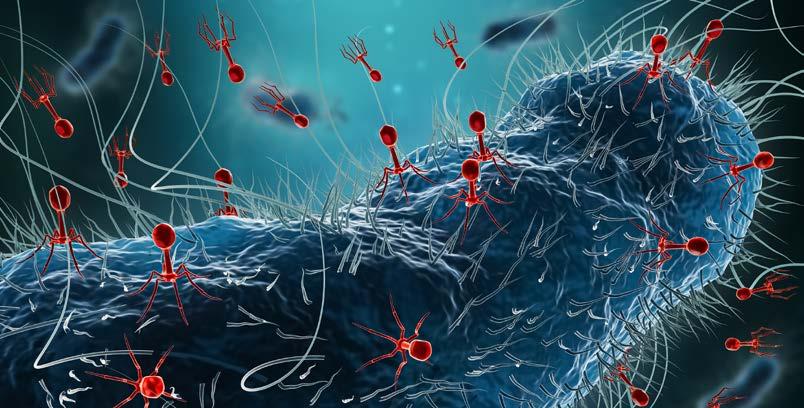
A new approach
In 2005 Micreos set out to develop a new antibacterial technology that could compensate for these two disadvantages. Based on its long-term collaboration with the Swiss Federal Technology Institute, ETH, in Zurich, Micreos has developed a technology that is viewed as a real game-changer. The central role in this technology is played by endolysins, enzymes that destroy the wall of only the targeted bacterial species, killing it in the process.
With endolysin it is possible for the first time to kill only the unwanted bacteria, including antibiotic resistant strains, while leaving the beneficial bacteria intact, and without inducing additional resistance. This unlocks a completely new approach to dealing with the bacteria around us, one that enables daily use as long as needed while preserving the important biodiversity on the human skin and in the human gut.
CHARACTERISTICS OF ENDOLYSINS
• Highly specific, enabling killing of only targeted bacterial genus (e.g. Staphylococci) or species (e.g. Staphylococcus aureus)
• Active against antibiotic-resistant strains
• Suitable for daily suppression therapy and prophylaxis
• Emergence of resistance not expected
• Synergistic with other agents
• Effective against biofilms
• Can be adapted to specific needs
• Non-toxic, with no build-up in the environment
130
Micreos products
Based on its technology, Micreos has developed a range of targeted antibacterial products for human health and food safety. The company’s PhageGuard food safety products are used by food processing companies in many countries to prevent dangerous food pathogens like Salmonella, E. coli and Listeria.
Human Health
In 2013, the company introduced a first series of endolysin based products, under the Gladskin brand, for people with chronic skin conditions such as eczema, inflammatory acne and rosacea. The endolysin Staphefekt SA.100, the world’s first endolysin registered for human use, is the active ingredient in these Gladskin products. It kills only the Staphylococcus aureus (S. aureus) bacteria, including the feared MRSA-variant, often referred to as the ‘hospitalacquired infection’. People with skin barrier defects due to chronic skin conditions are prone to infections and the majority of all skin and soft-tissue infections are caused by S. aureus. Gladskin products are available in a cream or gel format and have already had a life changing impact for hundreds of thousands of people. As antibiotics have side effects, are non-selective (also targeting the good bacteria) and induce resistance, they are not suitable for long-term use, for example for chronic conditions. In contrast, Gladskin products are targeted and induce no resistance, making them suitable for a daily suppression therapy and prophylaxis. Gladskin has the same positive effects on acne, eczema, and rosacea, making it the perfect ‘first choice’ maintenance treatment for these chronic inflammatory skin diseases.
From consumer product to pharmaceutical product
The strategy of Micreos Human Health has been to focus first on reaching the consumer market with prescription-free products through patient associations, the groups that are often most keen to see meaningful innovation. With hundreds of thousands of people having used and rated the product, Gladskin has proven to meet all the requirements of its consumer group. To accelerate the role out of its technology, the company granted a global license to world leading cosmetics group L’Oréal for use of Micreos’ patented endolysin SA.100 in its cosmetic products. L’Oréal already successfully launched its first SA.100-based consumer product, Eczema Med, under its La Roche Posay brand. This prescription-freeproduct for people suffering from eczema is produced in The Netherlands by Micreos Human Health.
Finally, Micreos established a dedicated pharmaceutical company, Micreos AG, based in Zug, Switzerland. The pharma company is developing several pharmaceutical products that, importantly, can build on the company’s extensive experience in the consumer market, including patient and case-studies, backed up by studies from university medical centres. First targeted indications are atopic dermatitis, CTCL (a type of skin cancer associated with the colonization of S. aureus bacteria) and prosthetic joint infections.
“Endolysins and phage-technology offer unprecedented possibilities in the fight against bacteria.”
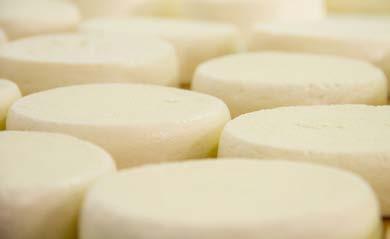
Food Safety: Belief in the power of nature
Micreos firmly believes that nature itself provides the solutions for modern day challenges. PhageGuard is the result of that belief: an effective organic solution for food processing companies to help produce safer food. The PhageGuard products contain natural phages against Salmonella, E. coli and Listeria monocytogenes bacteria, which are particularly dangerous for pregnant women, the elderly and the immunocompromised. They can be used to protect even organic foods, and are easy to apply, via spray, mist or dip. They can also be used directly on food contact surfaces to prevent cross contamination or in the processing environment to address hot spots and biofilms. PhageGuard products are cutting edge food safety tools for cooked meat, poultry, fish, dairy, cheese, fresh produce and more. The phages kill pathogenic bacteria without impacting taste, colour, texture or odour of the final product.
“Our PhageGuard brand contributes to a better world: safer products, healthier animals and happier consumers.”
131 DUTCH INDUSTRY
Micreos
Entering a new era
Considering the huge potential of Micreos’s technology, it is arguable that the company can lead the way to a world-wide postantibiotic era with new, targeted and highly effective drugs for humans and animals. This is an ambitious road and, in order to be successful, the company has outlined a threefold strategy. Firstly, Micreos is extending its range of products based on its endolysins against Staphylococcal bacteria, including MRSA. Secondly, Micreos is developing a range of new products targeting other antibiotic-resistant bacterial species, including Gram-negative bacteria. Finally, to deliver its technology to the world as fast as possible, the company is expanding its partnerships with commercial partners.
Thanks to this strategy, that can be both broad and deep, many people can effectively be freed from diseases ranging from skin conditions that hamper daily quality of life, to food poisoning and all the way up to deadly bloodstream infections.
“Our products have a game-changing impact; we are standing on the threshold of a new future with a thoroughly changed relation with bacteria and their effects on humans, food and the environment.”
THE SECRET LIES IN… NATURE!
Micreos’s proprietary technology is based partly on principles and mechanisms derived from nature and which are used by the natural enemy of bacteria; phages. Phages kill roughly half of all bacteria on the planet every two days when they use bacteria as a host to reproduce. They “co-evolved” with bacteria over hundreds of millions of years and, as different bacterial species evolved over time, so did their respective phages. In order for new phages to be ‘released’ from their bacterial host cells, certain enzymes called ‘endolysins’ are assembled, which effectively cut the bacterial cell wall from the inside, killing the bacterial cell in the process. As this step is essential for the reproductive cycle of phages, this has been perfected over a period of time by targeting the essential parts of the bacterial cell wall, which do not mutate, making the development of resistance far less likely than with antibiotics.
Phages and endolysins are bacteriaspecific, but in addition they are very specific within bacterial species/genus boundaries. Thus they can be used for targeted control of undesired bacteria and will not affect commensals on the skin or in human gastrointestinal tract. Neither will they affect ‘good’ bacteria in foods and the environment.
PHAGES: FACTS AND FIGURES
• The term bacteriophage is commonly used in its shortened form, “phage”.
• Phages are the most abundant microorganisms on earth and are naturally present in our water and many of our foods.
• On fresh and processed food products, often more than 100 million viable phages per gram are present.
• Phages and phage-enzymes are harmless to humans, animals and plants. They are present in high numbers on our skin, in our gut and in our environment and help preserve our bacterial balance.
• Phages are the natural enemy of bacteria, and therefore are logical agents for the control of bacterial pathogens, such as S. aureus (including MRSA), Pseudomonas, Listeria, Salmonella, E. coli and Campylobacter.
• Phages (and endolysins) are bacteriaspecific, but in addition they are very specific within bacterial species / genus boundaries. Thus they can be used for targeted control of undesired bacteria and will not affect commensals on the skin or in our gastrointestinal tract. Neither will they affect ‘good’ bacteria in foods (e.g. starter cultures) and the environment.
• Phages are usually between 20 and 200 nanometres (nm) in size. A phage is approximately 100 times smaller than a typical bacterium.
• Phages are generally composed entirely of proteins and nucleic acids and their eventual breakdown products consist exclusively of amino acids and nucleic acids. Therefore they do not leave an ecological footprint.
132


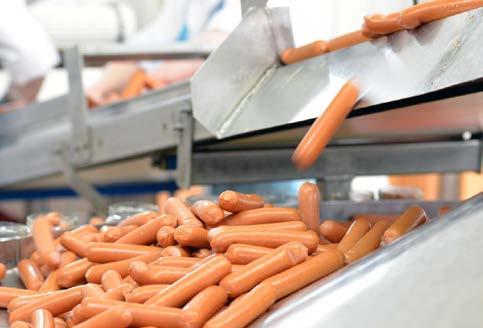

133 DUTCH INDUSTRY Micreos

“The world is ready for a structural and sustainable solution by not using trees for paper.”
134
INDUSTRY
CREATIVE
Today, the plastic sector is not only responsible for the well-known ‘plastic soup’ but also accounts for almost 5% of all global greenhouse gas emissions. Under current policies, global plastic production will likely triple by the year 2100. With its offering of 100% compostable bags made from bioplastics and its ‘tree-free’ paper bags, Natural Bag proves that there are sustainable alternatives for the plastic industry and paper industry.
Making all carrier bags sustainable
Over the past decade an increasing number of scientists, policy makers and knowledge institutes have stated that a circular, bio-based plastic industry with emissions-free electricity, could play a significant role in finding solutions for some major global problems.
In December 2022, researchers from Utrecht University, the Netherlands Environmental Assessment Agency (PBL), the Netherlands Association for Sustainable Energy (NVDE) and the Netherlands Organization for Applied Scientific Research (TNO) together published an article in the authoritative journal Nature, claiming that ‘circular bioplastics’ (i.e. using plastic more efficiently by keeping it usable for as long as possible before recovering it to make further new products) could offer a real solution for climate crisis and growing resource consumption.
Naturally beautiful!
A few years earlier, in 2016, the Dutch government introduced a new law against the free distribution of ‘single use’ plastic bags. This law, and the passionate wish by Elwyn van Schreven and Ingrid Rooyers to do something about the plastic problem in the world, led to the start of their company ‘Natural Bag’. Their mission is straightforward: to make all carrier bags sustainable. Ingrid and Elwyn started the production of bags made from bioplastics. These bags are totally compostable and biodegradable, certified according to the European standard EN 13432. Also, these sustainable bags have the same strengths that made plastic bags so popular: they look exactly like a traditional carrier bag, and they are as strong and sturdy with the same capacity, tensile strength and high-quality printing options. The big difference is the environmentally friendly degradation of the waste and CO2 neutral impact of the biomass used.

DUTCH INDUSTRY 135 Natural Bag
“It is our dream that in the future all plastic bags will be replaced by compostable bags and that, for paper bags, you no longer need to cut down forests.”
These compostable bags have become popular among companies and organizations that value the environment and at the same time do not want to give up any brand experience or on quality. The bags from Natural Bag are an environmentally friendly and sustainable advertising medium. The bags are very easy to implement in a sustainable business policy, practical in use, and make an immediate positive contribution towards lowering an organization’s ecological footprint. “Really low hanging fruit” so to say.
BIOLOGIC PLASTICS ARE FOR REAL!
There are many benefits of bioplastics: by making use of biomass (corn starch for example) it is possible to save fossil fuels, reduce CO2 emissions and contribute to the realization of a circular economy.
Bioplastics are used in the packaging, food services, agriculture and horticulture, medicine, consumer electronics and the automotive industries. Control of plastic waste can be largely solved by using compostable and biodegradable materials. The remains can be used in the agricultural and horticultural sector.
Tree-free paper bags
In addition to its bioplastic bags, Natural Bag has offered sustainable paper bags since 2017. To produce these the company does not use paper from the mono-forests of the traditional paper industry, but instead uses a special paper for which no trees have been cut down. This way, the company prevents deforestation and protects biodiversity.
This special paper is called ‘PaperWise’ and offers the same high quality as traditional A-grade paper but is made from agricultural waste material such as leaves and stems that remain after food products such as rice, wheat, corn, and sugar cane are harvested. This method generates some extra income for farmers, smog is prevented as the agri-waste is not burned, not forgetting that the waste itself is a valuable resource.
Natural Bag cleverly optimizes the use of scarce resources by using agri-residues, which otherwise have no value as waste. Additionally, the company saves on CO2 emissions to produce this unique paper and protect forests without compromising on the end product’s quality. The result is a truly durable high-quality paper and paper board with an ecological impact that is 47% lower than FSC paper made from wood fibres and 29% lower than recycled paper. The tree-free paper is food safe EC-1935 and compostable EN 13432 certified.
“The world is ready for a structural and sustainable solution by not using trees for paper. It is a giant step forward compared to the old-fashioned paper bag.”
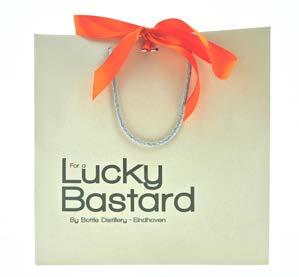
Protecting biodiversity with high qualitative offerings
It has always been a dream for Ingrid and Elwyn to contribute to a cleaner, more sustainable world. And this dream has come true. Today their company caters to organizations and businesses in a low-threshold, cost-effective and practical manner.
Increasing numbers of retailers, wholesalers, event organizers, hospitals, NGOs, universities and other organizations choose their sustainable bags and, in this way to become, ‘part of the solution instead of pollution’.
“We help companies with their desire to be more sustainable in their practices, by providing environmentally friendly alternatives to the polluting ‘old fashioned’ fossil plastic and our tree-free paper bags.”
In the future Natural Bag will add new sustainable products to their portfolio, the first of which will be a sustainable Tree-Free Box. This can be used for the fast-growing e-commerce markets. All such products fit the company’s mission to make all bags and boxes sustainable.
136

PLEASE, NO TREES!
Paper in its current form originated in China. Well into the 19th century, paper production generally was relatively small and local in nature. However, as a result of industrialization and the invention of board paper, the production of paper increased dramatically, creating a demand for the primary raw material of paper: cellulose that can be obtained from trees.
This way of making paper takes a lot of energy, water and chemicals and results in multiple emissions to air and water, including nitrogen oxides, sulphur oxides, carbon dioxide, carbon monoxide, formaldehyde and particulate matter.
Also, deforestation and consequential loss of biodiversity and erosion is a serious global problem. By replanting trees the world tries to mitigate some of the harmful effects of using trees for paper, but the process of making paper as a whole should and could be done better: a lot better in fact.






137 DUTCH INDUSTRY Natural Bag

“We don’t emphasize our work, but about the challenges that we see around us and that we like to address.”
138 CREATIVE INDUSTRY
APOLLOLAAN 171 Photograph by Ossip van Duivenbode
Not many architectural firms in the world come even close to the innovative and bold designs that the Office for Metropolitan Architecture, or ‘OMA’, is known for. As a leading international architectural firm with offices across the globe, OMA practices architecture, cultural analysis, and urbanism in a revolutionary and contemporary way.
More than just architecture
OMA has created some of the most creative and innovative buildings that can be seen today. Countries all over the world with architectural ambitions are drawn to OMA’s reputation. Numerous project proposals are sent to the firm that seek striking, groundbreaking designs for museums, theatres, libraries, schools, offices, residential projects, or buildings for other functions.
The firm’s reputation stems from iconic projects that are well known across the world, including the Axel Springer Campus in Berlin, the Western Australia (WA) Museum Boola Bardip, in Perth, the CCTV Headquarters in Beijing, the New Museum in New York and the Qatar National Library.
The firm is based in Rotterdam, The Netherlands, and maintains offices in New York, Hong Kong and Australia. From these five offices, OMA operates within the traditional
boundaries of architecture and urbanism: but not in a traditional way.
A collaborative approach
In all its projects OMA strives to go beyond standard solutions and is consequently able to redefine typologies. The main objective of any design exercise is to provide the client with new and original concepts which, with practical architecture, often create visionary ambitions. OMA’s strategy to tackle projects is based on thorough research, open collaboration and a cleverly organized structure.
OMA’s design philosophy rejects any rush to architectural form and emphasizes research. By taking adequate time to think with clients before starting to ‘design’, architects can ultimately accelerate the design process and provide buildings of greater quality for a given budget.

“We strongly believe in design as a process, and we approach each condition imposed on a project as an opportunity rather than a constraint. This is how, when addressed skillfully, normally restrictive factors have assisted us to provide innovative architecture while meeting tight budgets and rigorous design and construction schedules.” -
David Gianotten
DUTCH INDUSTRY 139 OMA
DAVID GIANOTTEN | Photograph by Vincent van den Hooge



SUSTAINABLE ARCHITECTURE
OMA’s belief that design is a process also extends to its vision on sustainability in architecture.
One example of this vision is the project Potato Head Studios in Indonesia. The project is not only groundbreaking in its positioning: here, the typical notion of “exclusivity” of the resort typology is abandoned, and the resort is reconsidered as a part of the local community. But also, OMA demonstrates that zero waste and the experience of comfort and enjoyment are not mutually exclusive. Together with local partners, OMA has been experimenting since 2012 with ways to reduce waste going to the landfill through creative hospitality management, cross-
disciplinary collaboration, and engagement with the local community.
Another recent example of this approach to sustainability is OMA’s development of a modular wood system to create schools that can be easily transformed throughout the schools’ lifecycles. With this system, new schools that will be built, can expand, downscale, or vary in configurations to respond to different needs over time. When a school closes, the building can be fully dismantled, and all the components become construction materials again. This is one of the reasons why the system has been selected by the City of Amsterdam as a starting point to build multiple schools in the coming ten years.
During every phase of the design process, OMA leads an extended series of intimate collaborations in the form of brainstorming sessions, presentations and workshops that involve clients, engineers, architects and other crucial participants such as curators, sociologists, and anthropologists, as well as a number of other practical collaborators. Through these events, programmatic and engineering concepts, rather than being an ‘afterthought’, are fully integrated into the formation of the initial design concepts. By means of this collaborative approach, the knowledge of all advisors can be used to come up with an optimal design from which all criteria have been analyzed. OMA prefers a client to be an active member in this process so that the ultimate design is realized in close collaboration with the person or organization commissioning the project.
An organization feeding creativity
In order to produce the kind of groundbreaking work OMA is known for, it has not only gathered a collection of some of the most radical architects in the business, but also organized itself in a way that is quite different from other architectural firms.
In recent years, the company has moved away from a single dominant office in The Netherlands to an organization where four offices work autonomously in their own regional context. As the company grew, OMA attracted new and younger partners, so that, currently there are eight partners covering four different generations.
140
MUSEO EGIZIO | Photography by OMA
Everyone in the firm has direct communications with partners and co-workers and everyone is involved in the creative process. In this way, even young people who have just started at the firm are not hindered in bringing forward their ideas.
Another revolutionary approach to organize and properly feed its own creative organization with fresh and relevant insights, is OMA’s creative ‘mirror’ or ‘reflective’ think tank: ‘AMO’. This conducts research and gathers intelligence that feeds into the firm’s projects.
The studio works independently and enables the architectural practice to search for the actual issues that are often behind a project proposal. For example, AMO will ask ‘Why’ when a client wants a groundbreaking, iconic building. It has the ambition to find answers to questions such as these without actually building anything. The studio is also known for more experimental projects like catwalks for fashion brands such as Prada and Miu Miu.
Today AMO is responsible for about a quarter of OMA’s profit.
“OMA and AMO are like Siamese twins that were recently separated. We divide the entire field of architecture into two parts: one is actual building, mud, and the huge effort of realizing a project; the other is virtual: everything related to concepts and “pure” architectural thinking. The separation enables us to liberate architectural thinking from architectural practice.” - Rem Koolhaas, founder and partner
AMO: OMA’S MIRROR
In 1999, OMA decided to establish its own research, branding and publication studio. Conceived as their own mirror image, the studio was called AMO. From the start AMO has aimed at expanding architectural production towards broader issues around culture, identity and organization.
AMO was the firm’s response to a number of very challenging building commissions, including three stores for Prada at a time when Prada was undergoing a complete rebrand, as well as the headquarters of Universal Studios which, during the design, underwent three takeovers.
For OMA, it was clear that by the time these building commissions would be built they could already be out of date. They therefore required another way of operating architecturally which could keep up with the pace of change in private enterprise.
AMO evolved into the independent operating body they are now, not only providing strategic input for OMA’s projects but also providing scenarios for major global developments that impact these projects.
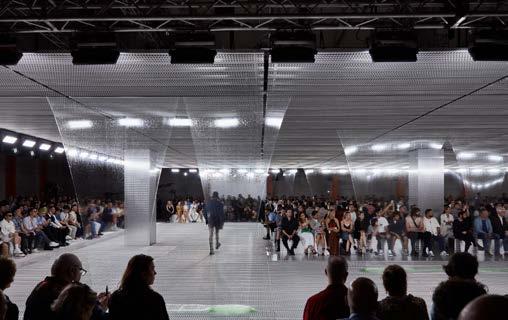
Groundbreaking projects
Architectural projects all over the world demonstrate the typical way in which OMA operates: to come up with solutions that are more than just the making of beautiful buildings, but include a vision which empowers the function of a building in its surroundings and the roles it wants to play. It is this approach that creates the groundbreaking architecture that OMA is known for.
Here are three recent examples:
Museo Egizio
200 years ago, the world’s oldest museum for Ancient Egyptian culture was founded in Turin. Over time, the museum was increasingly becoming enclosed and detached from the rest of the city. With Museo Egizio 2024, OMA addresses the museum’s historic role as a main civic space in Turin and its 21st century social ambitions. The design creates a new covered courtyard known as Piazza Egizia and a series of connected urban rooms open to all, integrating the museum back with Turin’s network of public spaces.
141 DUTCH INDUSTRY OMA
PRADA SS2024 MENSWEAR SHOW | photo by Agostino Osio
Multiple openings have been restored and introduced to the current building façade, inviting the public into the museum and Piazza Egizia for various daily leisure activities. Also, the original architecture and traces of interventions over time are showcased.
A transparent canopy is installed above the piazza to create a tempered environment. The canopy’s grid is in itself a device for rainwater collection, air ventilation, and lighting provision, answering to the museum’s ambitions for sustainability.
The Piazza Egizia and other urban rooms are open beyond working hours and welcome all visitors, with or without tickets. Their public nature offers possibilities for the museum to extend its opening hours to serve as a destination for scholars and an interested public.
Bajes Kwartier
For the ‘Bijlmerbajes’ in Amsterdam, a former prison complex in the south-east of the city built in the 1970s, OMA developed a remarkable urban vision including the four towers of the Bijlmerbajes, which have been a landmark in the periphery of Amsterdam for decades. In OMA’s masterplan, the island character of the prison enclosed by walls is conceptually preserved. The Bajes Kwartier is structured as a series of four clusters, each one with a strong character and programme mix, linked via a central pedestrian and cycle path. One of the towers will be transformed into a ‘Green Tower’, a vertical public park to showcase Dutch urban farming concepts and a viewing platform for the neighbourhood. The Bajes Kwartier will become a largely car-free environment, with gardens and areas for recreation and fitness.
The new development includes around 1,350 new apartments for sale and rent, and a large variety of typologies including 30% of social rental apartments. The sustainability strategy calls for 100% energy neutral buildings and the reuse of 98% of the existing materials. Concrete will be recycled and reused, prefabricated elements from the existing walls are to be reused as cladding for new residential buildings, prison bars will be used as balustrades, and the cell doors are to become edge panels for the new pedestrian bridges. A system to recycle organic waste into soil and energy will be implemented, and excess heat from a nearby Data Centre will be reused for the heating of the apartments.
“With Bajes Kwartier, the overall ambition is big. Here, people will live two years longer than somewhere else.”
Taipei Performing Arts Center
In order to develop a new performance arts center for the city of Taipei, OMA first developed a vision of the ideal role of a theatre in society. It found that as an ancient art form for civic participation, theatre has evolved into the modern world as a vocation of the culturally refined, with its significance in daily life diminished. Theatre space is valued for its potency for formal cultural productions, rather than its power to include, divert and to be instantaneous. According to OMA, contemporary performance theatres increasingly become standardized: a combination of two different-sized auditoria and a black box, with conservative internal operation principles for authentic work.
With the Performing Arts Center in Taipei, OMA had the aim to develop a public theatre that could still be inclusive by accommodating all: the ‘highbrow’ and the masses, the artistic and the social, thus being a place for the creative life of all.
The location at Taipei’s Shilin Night Market is marked by its vibrant street culture. The Taipei Performing Arts Center encompasses three theatres plugged into a central cube and allowing performing spaces to be coupled for new theatrical possibilities. The cube is lifted off the ground for a public loop to extend street life of Taipei on site. The construction also allows new internal possibilities and connections of the theatre: to generate different relationships between producers, spectators, and the public.
Defining the global architecture agenda
With its current organization, vision and approach, OMA feels it is in a very good position to strengthen its role as a leading architectural firm in a global landscape. The ambition is not so much to grow, but to keep defining the architectural agenda for countries and governments world-wide. OMA’s vision will inspire and impact the way people live, work and socialize for many years to come.
In addition, its recently published vision on the future of the countryside will undoubtedly inspire many countries to improve regions outside the urban environment.
142

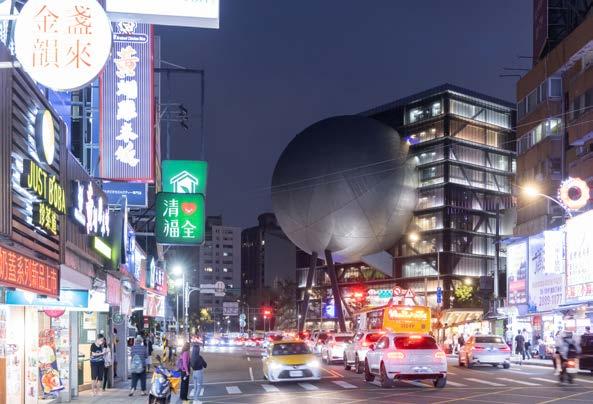


143 DUTCH INDUSTRY
OMA
BAJES KWARTIER, AMSTERDAM | Photography by Robota, Courtesy OMA MUSEO EGIZIO Photograph by OMA
TAIPEI PERFORMING ARTS CENTER | Photograph by Iwan Baan INNOVATION PARTNERSHIP SCHOOL MODULAR SYSTEM | Photograph by Arthur Wong

“We give clients the support they need to operate competitively.”
144 WATER & MARITIME | LOGISTICS | CHEMISTRY | ENERGY
The Port of Rotterdam plays a vital and essential role in the worldwide exchange of raw materials, food, medical supplies, consumer goods and production goods.
As a logistics hot spot, as well as a major production location for many industries, the port serves about 12,500 companies and has over 500,000 jobs in the Netherlands linked to it. The port is crucial to the prosperity of Europe and the Netherlands, now and in the future.
Port of the Future
Enterprising developer
As an enterprising developer, the Port of Rotterdam Authority is working to futureproof both the Rotterdam port and the industrial complex. It becomes clear just how much the Authority is geared towards the future when examining the solutions it provides for major challenges that are related to the global transformation in logistics, changes in the supply of raw materials, the energy transition and major changes in digital technology.
Logistics
The continued rise of e-commerce, is a driver for an efficient and reliable transport and supply chain, including storage capacity. Companies may opt for more regional diversification of their chains, based on closer location of production and consumption, thereby making them more resilient. ‘Just in time’ could become ‘just in case’, with an
increase in the need for storage capacity and cargo tracking.
Energy and raw materials transition
The supply of energy and raw materials will change fundamentally. Improving the efficiency of energy consumption is the first item on the agenda, followed by enhancing the sustainability of energy use by industry and, finally, transforming the raw materials and fuel system. This transformation has already begun. The pace of the introduction of hydrogen may be upped dramatically as this becomes the energy source of the 21st century and a building block in the sustainable chemical industry.
The digital transition and technology: efficiency at the forefront
The use of data continues to increase with improvements in information exchange and analysis allowing more efficient operation.
Port of Rotterdam
Increasingly, far-reaching exchanges of digital information will result in, among other things, an even closer alignment of production and transport processes and their vertical integration. The emerging digital options are also leading to increasing use of online platforms that link supply and demand and compete with traditional activities. Developments such as robotization, artificial intelligence and 3D printing are also playing a more prominent role in the new competitive playing field.
“By creating the right conditions, we give clients the support they need to operate competitively. Additional roles that we can take on with the aim of achieving this goal include those of matchmaker, facilitator, booster, director, investor, and initiator.”
DUTCH INDUSTRY 145
Smart partner in logistics chains
An important tool for improving the efficiency of logistics chains is the continuous improvement of the availability of information and, ultimately, the use of the data. Therefore, The Port of Rotterdam focuses on facilitating internal and external data exchange and providing digital products that strengthen the competitive position. Sharing standardized and reliable, near-real-time, data with parties in the global logistics chains, including other ports and global platforms, provides the basis for this.
“As a ‘smart partner in logistics chains’, we recognize the importance of non-physical factors in the competitive position, and we choose to play a role in making information available. By doing so, we aim to ensure that our logistics clients continue to choose Rotterdam.”
The Port Authority encourages data owners to share information and it works with other ports to create opportunities for connecting systems. The use of data also enhances the efficiency and reliability of physical infrastructure, both in the port and in the hinterland. Better planning with market parties and the optimisation of asset management with the users also contribute to this respect. Examples include Nextlogic, a central planning tool for improving the handling of inland container vessels and Cargo Tracker, a tool that provides (near) realtime tracking of containers and Routescanner. This is the online route planner for containers, which allows shippers and freight forwarders from around the world to search for not only the most efficient, but also the most sustainable routes in terms of carbon emissions.


Improving connections
In addition to the availability of information, excellent access to the hinterland continues to be essential for the efficiency and reliability of logistics chains. This is why the port is continually improving its connections, including by rail, with the European transport corridors that are relevant to Rotterdam.
Sustainable transport is also being promoted. Together with clients and users of the port, the planning of transport is optimized to eliminate unnecessary traffic as well as reducing energy consumption and, as a result, lower carbon emissions. The Port Authority is also encouraging cleaner fuels such as biodiesel, liquified natural gas (LNG), and hydrogen as alternatives to fuel oil and traditional diesel. This is done by providing financial incentives, by facilitating infrastructure to make these fuels available and by working on supportive regulations at the international level.
FACTS AND FIGURES
The Port of Rotterdam is no stranger to most citizens of the world. Once the largest port in the world, it is now proudly the largest seaport in Europe, handling over 30,000 seagoing and 100,000 inland vessels each year, as well as over 40,000 trains. The port, which stretches from the city itself to the North Sea, covers 12,500 hectares of land and water, of which approximately 6,000 hectares are industrial sites. The port is a logistics hub for virtually all types of goods and the area is a major production location for many industries. The Port of Rotterdam contributes an annual 30.6 billion euro, or 3.2 percent of added value, to the economy of The Netherlands.
146
Accelerator of sustainability in the port
“As an ‘accelerator of sustainability in the port’, we generate value by taking on new roles as a project developer and investor. We will be successful if we achieve a reduction of 49 percent in carbon emissions by 2030 compared with 1990 (Dutch Climate Agreement), are on the road to carbon neutrality by 2050, and are able to attract future-proof cargo flows and activities.”
Energy and CO2 infrastructure are indispensable tools for accelerating the sustainability of the port of Rotterdam and safeguarding the future relevance of the port, the industrial complex, and its clients. The Port Authority acts as a project developer for the expansion of the energy infrastructure for hydrogen, heat, steam, and CO2. This includes preparations for upgrading the electricity grid.
In this project role, the port brings together partners, makes space available and invests where necessary in advance of the market. It also draws on the strength and investment capacity of its existing industry cluster and will be working with partners over the next five years on the cluster’s energy efficiency. Examples of this can be found in the Porthos project for the use and storage of CO2 and in initiatives to establish a hydrogen backbone in the port.
“In addition, we are committed to expanding our position as a production location in the value chain for future-proof sustainable activities.”
The Port Authority plays an active role as an intermediary for using space more intensively
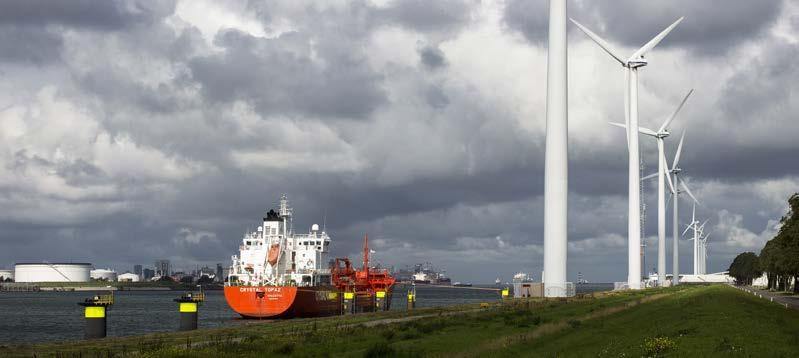
to create extra room for its clients’ sustainable activities. Where the market is not yet mature enough to maintain or initiate the action required for the transition in energy and raw materials, the Authority is prepared to invest temporary risk capital during the initial stages.
The focus is on value chains for renewable fuels and raw materials, including the production of synthetic fuels and biofuels, and the chemical recycling of plastics. These encompass the development of renewable alternatives in conjunction with partners and attracting companies with circular production processes.
In order to accelerate sustainability in the port, the Port Authority is investing in the digital transition. Data exchanges generate new insights and support the planning of transport movements. This is where the roles as a smart partner in the logistics chain and as an accelerator of sustainability in the port come together.


147 DUTCH INDUSTRY
Rotterdam
Port of

Largest European Container Port
Arguably, the Port of Rotterdam is best known for its position as the largest container port in Europe. Its enormous scale provides interesting benefits such as direct connections to hundreds of ports worldwide and excellent intermodal connections to destinations within Europe for the transport of containers. The Rotterdam port area also hosts a wide choice of services and state-ofthe-art terminals.
The container terminals in Rotterdam are among the most advanced in the world. State-of-the-art equipment and the largest cranes on the market ensure fast, safe, and reliable transshipment of containers. The terminals are directly connected to the North
Sea and provide excellent connections to the European rail, inland shipping, and road networks. In 2015, two brand new, state-ofthe-art terminals were opened on Maasvlakte 2 and are still recognized as the most advanced automated terminals in the world.
Within the port, twenty-two container depots offer more than one hundred and twenty hectares of storage space. Apart from storing empty containers, container depots also provide container-related services, such as sales, inspection, cleaning, and repair. These depots are an essential part of the logistics chain. Here, importers can leave, and exporters can collect, empty containers for shipment. For many shipping companies, the Port of Rotterdam serves as the European empty container collection point thanks to its numerous container depots and high-quality service.
BIG IN BULK
Businesses use the Port of Rotterdam as a logistics hub for their products because of the port’s strategic position and large range of options in tank storage and logistics. As a result, the Port of Rotterdam is the largest liquid and dry bulk port in Europe.
In Rotterdam, smaller batches of liquid bulk cargo are collected from surrounding countries and then shipped to international destinations in large vessels, and vice versa. Examples include ethanol from Brazil which goes to Sweden, gas oil for use in German households and palm oil from Malaysia and biofuels that easily find their way via an intermodal network of inland shipping, road, rail and short sea to destinations in Belgium, the United Kingdom, France and Spain.
“We have all the facilities needed for the storage and handling of dry bulk. Due to its ideal location and the unparalleled depth of water, the largest dry bulk ships can be accommodated in the port without any impediments such as locks or tides.”
A broad range of service providers can handle any type of dry bulk cargo, ranging from iron ore to grains, from biomass to industrial minerals.
Also ‘break bulk’ cargo is handled in large quantities quickly and efficiently. The port has specialized terminals for any type of this cargo, for example cars, project cargo, heavy lift, forest products, steel, or non-ferrous metals. The all-weather terminals and dedicated service providers, who are available 24/7, ensure that breaking bulk can be handled at any time of day.
148
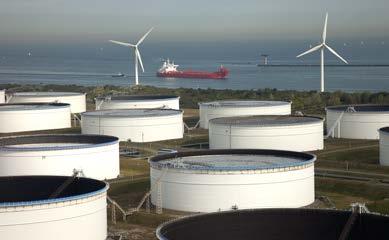


Strategic position in energy
The Rotterdam port plays a key role in the reliable and affordable supply of energy for Northwest Europe. Rotterdam is not only the import centre for raw materials for the region but energy is also produced here.
The energy industry in the Port of Rotterdam benefits from excellent logistical facilities for the supply of energy feedstock, the availability of sufficient cooling water, a well-developed high-voltage grid, and a large petrochemical cluster with extensive energy needs.
The petrochemical cluster comprises five oil refineries, which manufacture products such as gasoline, naphtha, diesel, kerosene, heavy fuel oil and feedstock for the chemical industry. The refineries have a combined distillation capacity of 58 million tonnes while, elsewhere in the Netherlands, Belgium, and Germany, another five refineries are supplied with crude oil via pipelines from the port of Rotterdam.
Chemicals and edible oils
In addition, there are some forty chemical companies, three plants for biofuels and five
vegetable-oil refineries. These produce chemicals, fuels, edible oils, and fats on a large scale for use both in Europe and for global trade.
The large number of chemical companies and refineries within the port area ensures optimum efficiency. For example, the oil refineries supply feedstock to the chemical industry while various chemical companies in turn supply semi-finished products to other parties.
Collaboration and exchange also take place in the provision and use of tank storage, industrial gases, heat, steam, wastewater treatment and electricity. This synergy ensures a highly efficient and profitable business climate for all chemical companies operating in the port area.
From carpets to toothbrushes
With this set-up, the Port of Rotterdam delivers the building blocks for a range of products that are used in daily life; from carpets to coatings, wall isolation and mattresses; from car dashboards and toothbrushes to perfume, indoor and outdoor paint, and the screen of your mobile phone.
Apart from collaboration within the port, the Port of Rotterdam forms a strong wider cluster with the petrochemical industry in other regions of the Netherlands, Belgium, and Germany. This ‘ARRRA’ cluster (Antwerp-RotterdamRhine-Ruhr-Area), which is supported by an integrated pipeline connection, is responsible for forty per cent of the petrochemical production of the European Union.
Furthermore, the port hosts the world’s largest renewable industrial bio-based cluster. Bio companies benefit from endless possibilities for the supply of all conceivable feedstocks and the global distribution options of finished products.
The port also acts as a hub for the import and export of Liquefied Natural Gas (LNG), through the terminal on the Maasvlakte, with LNG carriers arriving from the Middle East, Norway, and other world-wide locations. At the terminal, LNG is reloaded into smaller LNG tankers for re-export, or is transported in gaseous form through pipelines to the gas network in Europe. The port of Rotterdam also plays a leading role in the introduction of LNG as a fuel for shipping and road transport.
149 DUTCH INDUSTRY
Port of Rotterdam


MORE THAN STORAGE AND DISTRIBUTION
Specialized service providers in the port offer optimum storage, distribution, and related services, such as the packaging, repackaging, and labelling of products. There is a warehousing service provider in the Port of Rotterdam for every product type, whether this concerns hazardous freight, fresh vegetables, cars, or dry bulk.
Various independent terminals offer covered and open storage facilities for breaking bulk, whether dry or liquid. Additionally, logistics service providers with their own warehouses are also established in Rotterdam. They focus particularly on ADR freight (the transport of dangerous goods), refrigerated and frozen cargo and consumer products.
As well as storage and freight transport, logistics services providers can organize the entire logistics process. This includes services such as stock management, packaging, repackaging, labelling, assembly, mixing and repair of freight.
Veterinary inspections for meat and fish and quality controls for bulk products are also among the possibilities. They can also take charge of administrative processing.

150
Port of Rotterdam
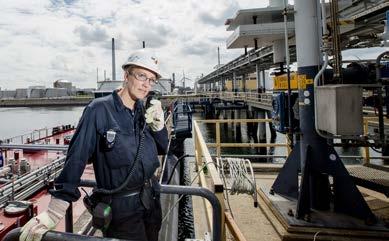
World class maritime business services
A strong cluster of maritime business service providers completes the urban maritime ecosystem. In Rotterdam, this sector is particularly well developed with an estimated employment of around 3,000 professionals at insurance firms, financial institutions, consultancies, recruitment agencies, law and accountancy firms that specifically target the maritime sector. In addition, the Rotterdam court has exclusive jurisdiction in the Netherlands to adjudicate in shipping cases.
Leading hub in maritime insurance Rotterdam is one of the top ten insurance markets in the world. The main international marine insurers and brokers already have dedicated marine offices or desks in Rotterdam. Lloyds of London has a Rotterdam representation and, when needed, Rotterdam brokers are well experienced in international insurance markets. Rotterdam based insurers and brokers offer high expertise in the field of claims handling. It is important to note that the Netherlands is the only European country, besides the UK, that has a co-assurance system
(a system where others with an interest in a unit or vessel are named in a policy).
Specialized maritime legal services
It also makes sense to take care of your legal business in Rotterdam. The Maritime Chamber of the Rotterdam District Court specializes in maritime law, transport law and international sale of goods. Its expertise is recognized within the industry as well as its speed and cost-effectiveness. Rotterdam-based judges, arbitrators, lawyers, and technical experts are internationally renowned for their hands-on attitude and pro-active and practical advice that is available 24-hours a day. The Maritime Chamber offers the option to conduct all litigation in the English language. As Dutch lawyers have no difficulty in conducting these proceedings in English, this can lead to cost savings.
Home to the world’s financial institutions
The major Dutch banks are positioned among the world’s top fifty banking institutions, and are well known for the diversity and quality of their services. All the larger banks and accountancy firms have concentrated their departments specializing in shipping and maritime business in the city of Rotterdam and pride themselves on their longstanding and extensive national and international experience. Also, many foreign banks have offices in Rotterdam.
OPTIMAL BUSINESS CLIMATE
The Port of Rotterdam owes its strong position to a large extent on its good access from the sea, its excellent hinterland connections, unique water depth and the digital availability of reliable information.
The industrial cluster which is active from this region is highly competitive due to:
• the world-class clients located in the area
• the interrelatedness of the industries
• the presence of virtually the entire chemical value chain
• the availability of enough room for development
• the focus on the social infrastructure
• excellent energy facilities
• the extensive pipeline system connecting it to the hinterland
• a professional, multi-lingual, and flexible workforce.
“An optimal business climate for our clients means investing in connections between the labour market and education in the port, a worldclass innovation ecosystem, and legislation and regulations that make the intended developments possible.”
151 DUTCH INDUSTRY
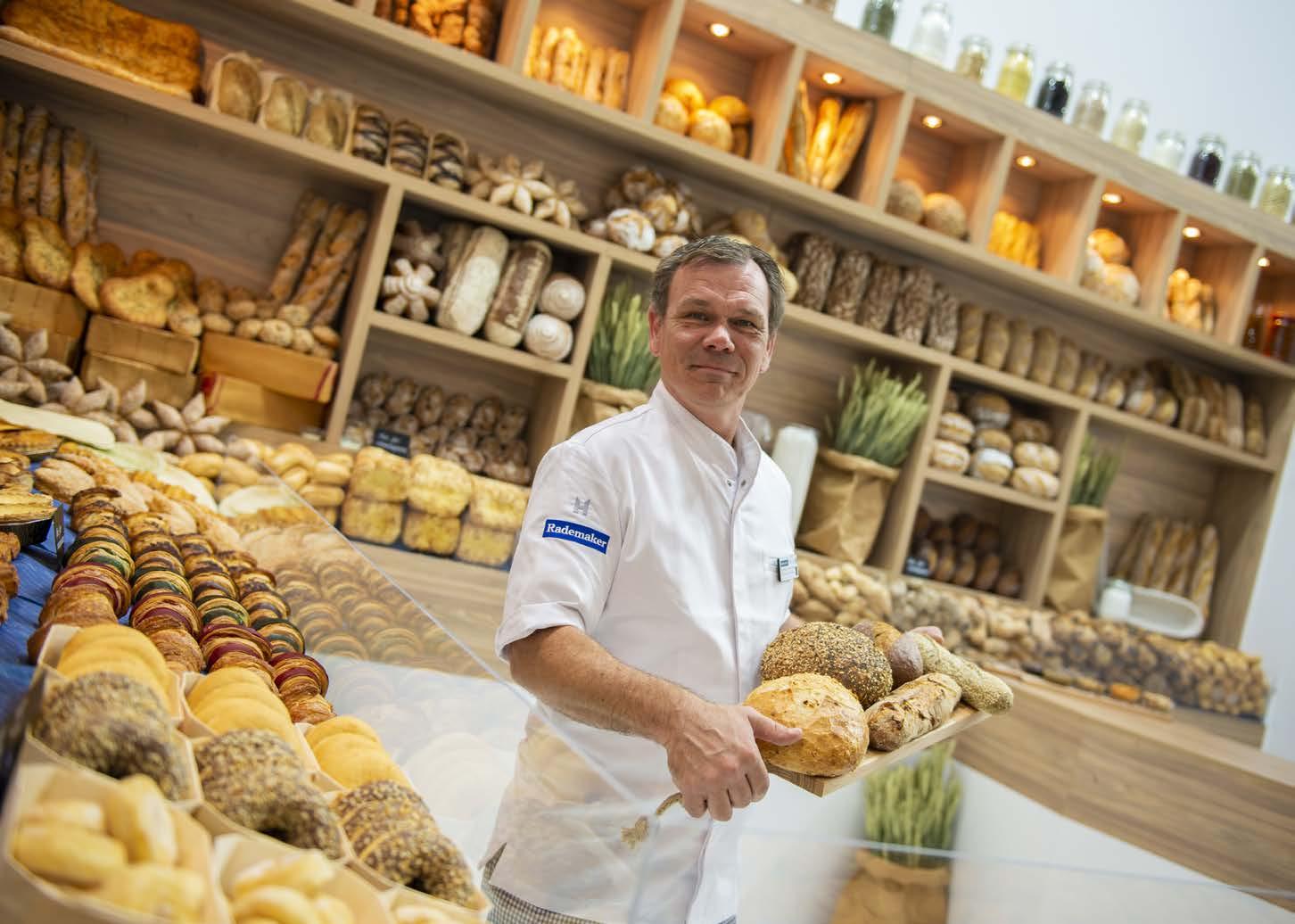
“We constantly strive to improve our production lines and performance.”
152
& FOOD | HIGH TECH SYSTEMS & MATERIALS
AGRI
The bakery products sector has been a cornerstone of the culinary world for centuries, bringing joy and nourishment to people’s lives. Over time, technology has made its way into the baking industry. From artisanal bakeries to large-scale production facilities, the industry is experiencing a technological revolution that is reshaping the way bakery products are created, enhancing efficiency, and ensuring consistent quality. Rademaker is leading these developments.
Leading the bakery revolution
Rademaker develops and provides solutions for the food processing industry in general and the baking industry in particular. The company’s expertise manifests itself in high quality automation, engineering, hygiene, and performance of its delivered machinery. The company has a wide knowledge of food products and their production technology. Dedicated professionals and state of the art engineering techniques provide clients with bakery solutions that were unthinkable just a few years ago. But most of all, everything that Rademaker does reflects its enthusiasm, passion, and dedication for this industry: for its customers, partners and, of course, for bakery products.
Early innovator: with passion.
Founded in 1977, Rademaker was one of the first companies to specialize in the
development and supply of innovative solutions for the bakery industry and it has kept its widely recognized ‘early innovator’ position during the growth of the last decades. Over time Rademaker has gained a tremendous amount of knowledge, not only of production equipment, but of the ever-changing final bakery product as well. Because of that, the company is one of the front runners in its field, with a global presence and a service that goes well beyond the delivery and installation of bakery production lines alone.
Driven by its passion and the opportunities offered by worldwide market forces, Rademaker evolved to become a company with an international outlook. To better serve the wishes and requirements of local customers, it opened sales offices in France, Germany, the United Kingdom, the United States of America, Italy and China.
Rademaker
Global player
As a truly global company, the greatest part of the company’s business today consists of production lines and turn-key solutions for all the continents of the world. But the Rademaker headquarters are still located where they started almost 50 years ago: in Culemborg, the Netherlands.
With dedicated, highly skilled and experienced professionals Rademaker employs the latest engineering technology. Doing so, it provides clients with solutions that allow them to face the future with confidence.
Today, Rademaker is a worldwide supplier of food processing equipment and customized industrial bakery systems. The company’s production lines and turn-key solutions guarantee an efficient machine performance.
DUTCH INDUSTRY 153
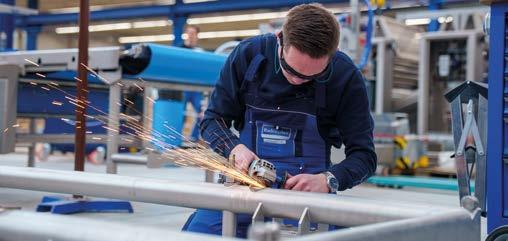


Combined with easy change-overs and highly efficient maintenance, these offerings result in the lowest possible cost-of-ownership for bakeries.
Ever-improving
The bakery products sector is undergoing a technological transformation that is revolutionizing the way bakery products are produced, thus improving efficiency and ensuring consistent quality.
To maintain its position as industry leader in this fast-changing environment, the Rademaker Research and Development department is continuously working on new and improved solutions. Ideas become concepts and these concepts are implemented in new bakery equipment, a process that is driven by customer wishes and requirements. This innovative and openminded approach results in trendsetting designs based on the latest techniques and technologies. The emphasis on solid partnerships exploits the company’s joint expertise to the fullest. Furthermore,
Rademaker is constantly monitoring and revising internal processes in pursuit of improving the equipment’s performance. Hygiene standards meet the highest required in the bakery industry.
As the recognized leader in flexible dough production lines Rademaker guarantees large product quantities at high quality and an excellent return on investment. Over four decades of experience becomes evident in an unmatched dough quality.
Designed according to latest hygiene and design standards, Rademaker production lines are state-of-the-art. A continuous improvement program aims to increase machine performance during operation, change-over, cleaning and maintenance. Internal and external developments based on feedback from the market, as well as the company’s service department, are the basis for optimization of the equipment.
RADEMAKER ACADEMY
Bakery Technology knowledge is one of the key items required when a production line is installed and when the production process starts up. Problems occur when detailed knowledge is lacking about the sheeting process (the mechanized rolling and/or laminating of dough to produce continuous sheets), production line operation and dough processing. This results in problems that will affect the overall production costs and product quality. A general trend in the market is that the traditional bakery industry is increasingly shifting towards sheeting technology, a change that inevitably requires more knowledge of this advanced method of dough processing. For this reason, Rademaker initiated its own academy: to preserve and share bakery knowledge through education and training and enable customers to maximize the profitability of their Rademaker production line.
154
Rademaker
Robotics
Rademaker Robotics further reinforces the already efficient dough processing solutions, with more flexibility, such as through providing automation for labour intensive processes, while keeping product quality, process accuracy and stability and high hygienic standards as key factors. Rademaker’s robots are fully integrated in their process lines, including all the benefits from an integrated Human Machine Interface (HMI), up to and including remote services. Robot tools, grippers and vision are all designed in-house, benefitting from years of dough handling experience to provide customers with a complete high-end solution.
“Our technologies are for the benefit of our clients. They aim to streamline production, enhance product quality, reduce waste, and improve overall efficiency in bakery operations.”
Product solutions
Rademaker offers many solutions for all kinds of bakery challenges: from artisanal bakeries to large-scale production facilities. Rademaker knows how to shape the best possible way bakery products are created, by enhancing efficiency, and ensuring consistent quality. Some examples that illustrate this include:
Bread line - The Rademaker industrial bread production line is designed for medium to large scale industrial bread manufacturers: from tin breads to high water absorption artisan breads and from pre-fermented to


‘green’ doughs. Flexibility and fast production changeovers are guaranteed thanks to its unique modular design and the variety of mobile units. Compared to dedicated industrial bread lines, this results in a shorter return-on-investment, that makes the bread production line the most desired industrial bakery line in the market.
Laminator - The development of dough laminators is a Rademaker core activity. The company sees it as its mission to offer a dough laminating machine that produces the best dough sheet possible for a customer’s bakery products. In close cooperation with customers, the laminators are set up according to production volumes, type of fat used, number of required layers, desired thickness and dough reduction method.
Pastry make-up line - The Rademaker
Universal Pastry line allows the formation and shaping of dough into high-quality pastries, and in large quantities suitable for midsize to industrial bakeries. It can be equipped with a wide variety of options to shape the dough while the production line can also be equipped with numerous tools that are
designed for fast and easy change-over. Decorating by means of depositors, egg yolk or water spraying systems, universal dispensers or a fruit and cheese applicator are also possible. Each operation is carried out automatically.
PROFITABLE CROISSANT PRODUCTION
Croissants were among the very first Rademaker bakery production lines. For decades Rademaker has been regarded as the worldwide leader in croissant production lines. From Italian to Spanish style croissants, Medialuna, gluten free or long shelf-life croissants, Rademaker knows the differences and preferences between countries and areas and offers various technological solutions.
Rademaker croissant machines stand for efficient production and excellent product quality. Their fully automated lines represent the very latest expertise and technology, resulting in a major reduction of manufacturing costs for frozen and fresh baked croissants.
155 DUTCH INDUSTRY

The future of bakery
The bakery products sector is undergoing a technological transformation that is revolutionizing the way bakery products are produced, improving efficiency, and ensuring consistent quality. Highly flexible laminators, high-speed proofers, automated decorating and icing machines and digitalized tool management systems are just a few examples of the developing technological equipment reshaping the industry. As technology continues to advance, we can expect further innovations from Rademaker that will drive the bakery sector forward, allowing bakers to achieve new levels of precision, efficiency, and creativity in creating delectable bakery products.
A HEALTHY AMANDAZI (A TYPE OF AFRICAN PASTRY)
Since 2017, Rademaker has actively supported The Women’s Bakery; an organization that employs women and brings nutritious breads to communities in East Africa. Rademaker helped with professionalizing bakery operations, improving product quality, and financial support to make essential investments. This collaboration has led to formative changes such as refining the business model and goals that create a clear path toward sustainability, as well as transformative changes such as equipment upgrades.
Thanks to staff training and the acquisition of professional bakery equipment in 2022, The Women’s Bakery achieved a remarkable 100-fold growth.
“With the upgrade of our equipment also comes the growth in terms of production and sales. So, we have continued to develop. Where we started with about 200 units a day, now we are selling about 100 times that.”
By sponsoring The Women’s Bakery, Rademaker enables the organization to continue its vital work. Empowering women in Rwanda is a significant result of the cooperation with The Women’s Bakery itself, not to mention the social impact programmes, where Rademaker trains women in financial literacy, health, and other areas, giving them confidence and economic empowerment to make decisions in their homes.
Hidden hunger
Rwanda has a prevalence of undernourishment, which is often attributed to the shortage of food. However, it is not only the quantity of food, but also its quality that causes malnutrition. This phenomenon is called “hidden hunger” and often leads to stunting, the irreversible developmental stagnation in children.
Rademaker is proud to be The Women’s Bakery longest-serving corporate partner. Together with The Women’s Bakery it shares the ambition to address the problem of hidden hunger. The Women’s Bakery initiated the One Bread Project, a transformative initiative aimed at addressing nutritional gaps and improving the nutritional health of school children. Through the One Bread Project students in vulnerable communities receive a daily nutritious bread roll. By providing essential nutrients while attending school, these bread rolls improve the student’s overall health, well-being and school performance.
The project started off with only a few schools, where perhaps only two hundred children received a nutritious bun. Now The Women’s Bakery serves 18,000 children daily. Rademaker will continue to support The Women’s Bakery to reach its ambitious goal of serving 100,000 children daily.
“We hope that we can make a small but meaningful difference in malnutrition.”
156


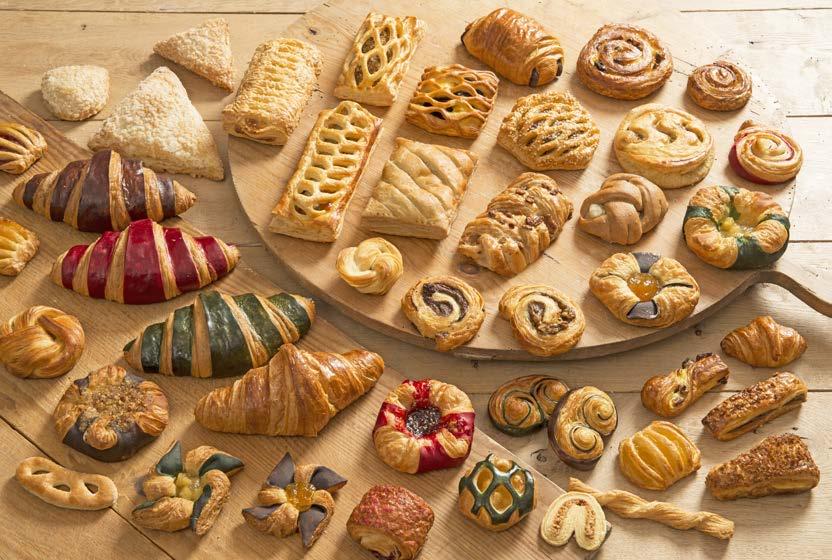

157 DUTCH INDUSTRY
Rademaker
HORTICULTURE & STARTING MATERIALS

“We’re investing heavily in developing more robust vegetable varieties.”
158
As a company that develops vegetable varieties and sells the seeds produced from them, Rijk Zwaan is right at the start of the food chain. This independent, familyowned, company makes a significant contribution to better food production and to the health and well-being of people all over the world.
Sharing a healthy future
Rijk Zwaan is a specialist horticultural company, based in De Lier. It focuses on the development and sales of high-quality vegetable seeds for professional growers, both in greenhouses and outdoors.
The founder of the company, Mr. Rijk Zwaan, started selling seeds in a Rotterdam shop in 1924 and, today, the company has become one of the largest vegetable breeders in the world with a broad product base of more than 1,600 varieties, across twenty-five different vegetable crops. These are sold in more than one hundred countries through thirty local sales subsidiaries and numerous other distributors.
Although vegetable breeding still has its origins in practices that have evolved for a century, it is now combined with high-tech selection techniques, sophisticated data analysis and use of robotics.
“We invest thirty percent of our annual revenue in research and development. Ultimately, varieties can only be assessed in the field: that is why we perform selection trials at breeding locations around the world.”
Solutions for global challenges
Rijk Zwaan’s vegetable varieties are the response to a wide range of market demands and wishes. For example, these may come from consumers and chefs, whose needs may be based on taste and appearance; from growers who may seek high yields and disease resistance; from supermarkets whose priorities are long shelf life and attractive presentation; or from the food processing industry, which constantly seeks increasingly efficient processes with less waste. However, whatever the need, all varieties are firstly rigorously tested by the growers, and only if the variety succeeds in practice, it will be sold.
Seeds form the basis of the world’s food supply. Therefore, Rijk Zwaan has the opportunity to develop varieties that provide solutions for global challenges, such as feeding a growing world population and finding answers to climate change.
By making vegetables tastier, more appealing, easier to use and even better in quality, consumers can be tempted to eat more healthy vegetables. A good example is the development of two product lines; easy to prepare lettuce and snack vegetables. These can make a valuable contribution to increased vegetable consumption and a healthier lifestyle. Also, where the diet is rather ‘one-sided’, vegetables are a healthy addition.
Although Rijk Zwaan has an impact on many elements of the seventeen Sustainable Development Goals (SDGs) of the United
DUTCH INDUSTRY 159 Rijk Zwaan
Nations, there are four main areas in which the company really makes a difference. These are SDGs 2,8,12 and 17:
• Ending hunger.
• Creating decent work for all and contributing to sustainable economic growth.
• Stimulating responsible consumption and production.
• Seeking partnerships to achieve these goals.
“Our work brings with it a considerable social responsibility because the world’s population is expanding at a rapid pace and a growing number of people must be fed using a finite number of natural resources.”
Developing sustainable varieties
Rijk Zwaan develops varieties with traits that help to make vegetable cultivation more sustainable. For example, by breeding vegetable varieties with resistances to specific pests and diseases, allowing growers to use less or no crop protection agents. Or by developing varieties that are fit for more efficient and sustainable cultivation methods, such as hydroponics. In addition, the company’s innovations increase the shelf life of vegetables, with the result that there is less spoilage and food wastage, and the vegetables are thus able to reach more people.
“Resilient and robust crops are becoming increasingly important. The world around us is changing and climate conditions are ever-more extreme. We’re investing heavily in developing more robust vegetable varieties for this.’’
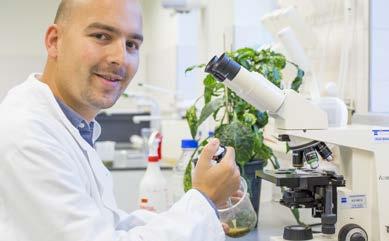

Innovation and creativeness
Rijk Zwaan’s entrepreneurship is based on continuously developing and implementing new ideas that can provide solutions to the demands of the market and wider society. For example, these may include:
• Better emergence and protection of germinating plants.
• Varieties suitable for organic cultivation (forty percent of the company’s product range).
• Varieties specifically designed for sustainable hydro cultivation.
• Drought tolerant varieties.
• Vegetables that can be efficiently processed, which results in less waste.
Knowledge partnerships
The company regularly forms coalitions with partners who share its societal interests:
• With growers and other chain partners to improve the yield and sustainability of production by sharing knowledge such as technical information and data through crop specialists, apps, tours,
demonstration facilities, study clubs and crop registration.
• Through industry associations to represent the sector’s best interests.
• With research institutes to develop innovative knowledge. Rijk Zwaan has over 200 collaborative R&D partnerships with leading crop-breeding research institutes.
• With schools to ensure that educational programmes are more closely aligned with the needs of industry.
As markets mature, companies show trends towards consolidation, increase in size and a higher level of professionalism. These trends influence Rijk Zwaan both as an organization and in its way of doing business with its clients. Next to product knowledge, the capacity to understand and react to the wishes of clients plays a vital role in the company’s evolving relationships with them.
Biodiversity
Having continued access to nature’s genetic diversity is very important in order to be able to develop new varieties. Therefore,
160
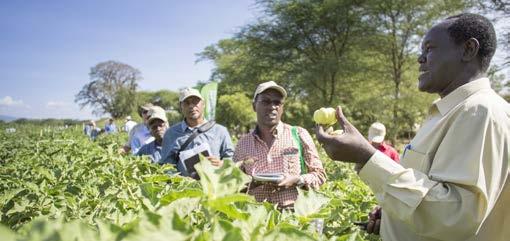

AFRICA: FOCUS ON THE LONG TERM
Rijk Zwaan is always on the look-out for new genetic variation in crops. For this reason, the company works with gene banks around the world, for example by financing missions that enable the gene banks to expand their collections and to safeguard genetic resources for the future, as well as by helping to describe, characterize and multiply these genetic resources. Rijk Zwaan doesn’t use patents to prohibit gene banks from supplying genetic material to others.
“We don’t know which genetic source contains the solutions for tomorrow’s challenges. That’s why we’re building gene banks. Biodiversity benefits everyone and we need to ensure that it stays that way.”
Consideration for the environment
Rijk Zwaan needs a healthy foundation as the basis for trials. Therefore, it is only logical to make respectful and sustainable use of the environment and natural resources.
Consideration of such matters requires Rijk Zwaan to continuously review all its business processes in the search for constant improvement.
Rijk Zwaan is active throughout the African continent, with company subsidiaries from Morocco to South Africa and local distributors in different countries.
In East Africa, Rijk Zwaan’s research and production facilities have been growing very quickly over the last decade. In 2008 Rijk Zwaan Afrisem was founded as a breeding company, which led to the first varieties especially made for African conditions and markets.
By building up a strong distribution network, local trials, events and services, Rijk Zwaan is developing a tailored approach for each country. In more developed markets the company is also working on chain management.
Stronger, productive varieties
Within its program ‘Breeding in Africa, for Africa’, Rijk Zwaan develops hybrid varieties for African vegetables, including African eggplant, African kale and African hot pepper. Although Rijk Zwaan pursues a segmented approach for different parts of Africa, in all regions the company very consciously chooses to develop hybrid varieties, as these have a higher quality than the standard open pollinated varieties. Growers who use hybrid seeds have prospects of higher yields and better quality and are thus able to create their own markets and incomes. As a result,
hybrid varieties contribute to the development of local sales networks and to increasing local vegetable consumption. Rijk Zwaan focuses on growers who appreciate a professional approach and who demand the same high standards for seed quality as anywhere else in the world and it is the company’s intention that small farmers will also see the advantages of hybrids enabling them to grow vegetables of a higher standard.
Transferring knowledge
Good varieties alone are not enough; knowledge transfer is essential to maximise the potential of these varieties. This is why the company pays considerable attention to the transfer of knowledge, by travelling from grower to grower, organizing commercial demonstrations and using SMS and other digital services to spread crop tips and success stories. In this context, Rijk Zwaan works very closely with governments, non-governmental organizations (NGOs) and other more local partners. In the long term, a widespread network of well skilled growers, both large and small, will develop the huge potential of the continent and deliver a direct contribution to food and nutrition security in Africa. This is Rijk Zwaan’s belief, one that drives the company’s commitment and endeavours.
161 DUTCH INDUSTRY
Zwaan
Rijk
Business ethics
Since Rijk Zwaan is active all over the world, the company’s business ethics are very important. The company endeavours to maintain honest business practices with due consideration of values and standards. These apply equally to all countries and the company’s high standards are also demanded of its partners.
Employees
Achieving autonomous growth by capitalising on opportunities has been the company’s strategy since 1924. Yet Rijk Zwaan remains a ‘people company’, seeing its 3,900 employees as its most important asset. Its first and most important goal has been, and remains, to provide all its employees with an enjoyable and long-term job with good terms and conditions of employment.
Food for thought
Rijk Zwaan is growing rapidly, but so is the world’s population: such growth presents both opportunities and challenges. With the extensive experience of its highly motivated employees, as well as its profound knowledge and numerous long-term collaborative partnerships, Rijk Zwaan is both well-placed and keen to contribute to a healthy and sustainable future.
VEGETABLE VARIETIES THAT FIT THE NEEDS OF THE MIDDLE EAST
The world population is increasing rapidly, including notably in the Middle East and North Africa. As a result, the demand for fresh vegetables in densely populated cities such as Cairo, Baghdad, Riyadh and Dubai goes up as well. However, as the soils in the region are sandy and with increasingly scarce supplies of fresh water, Rijk Zwaan is an important partner in the quest to find solutions to the problems of how to grow more vegetables with less water.
Arabic cuisine is dominated by vegetables, whether in traditional lunches or as starters in every restaurant dinner, where they are offered between the soup and the main course. Salads and starters typically comprise cos lettuce, eggplant, tomatoes, cucumbers, peppers, cauliflower, white cabbage, and many other vegetables.
Increasing population
The increasing population not only demands more fresh vegetables, but also more diversity. Visits to the wholesale markets and regular meetings with traders in the supply chain form the starting point to test new vegetables or new vegetable varieties. In this way Rijk Zwaan can meet the needs of both existing and new customers with varieties that not only offer improved yields but also new tastes that can add to the already rich Middle East kitchen.
Harsh conditions, good performance
Cultivation takes place in non-heated plastic tunnels or open fields. The climate in the area is harsh, with cold winters, hot summers, a high incidence of disease and sandy soils that have limited fertility. Water is becoming increasingly scarce as the principal source, deep groundwater, is limited and this scarcity is becoming further exacerbated by changing climate conditions.
As a result Rijk Zwaan has a significant responsibility to breed vegetable varieties that can stand these harsh conditions. The company’s varieties are tested extensively to see how they perform under such conditions, using not only its distributors’ exclusive trial stations but also through direct and intensive cooperation with farmers. Breeding is thus a vital part of the solution.
As a breeding company, Rijk Zwaan shares knowledge, allowing producers to grow more efficiently and sustainably. For example by growing lettuce hydroponically, growers are able to recirculate the water they use. Rijk Zwaan has a leading position in the Middle East and North Africa in the development of suitable varieties for hydroponic lettuce cultivation.
162



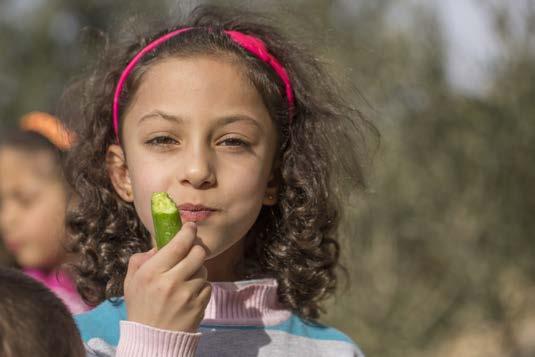


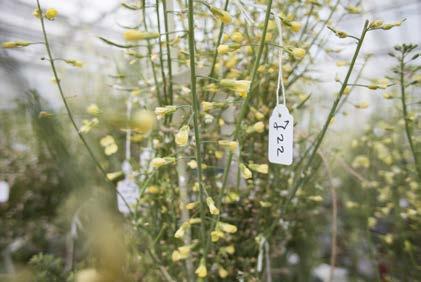
163 DUTCH INDUSTRY
Zwaan
Rijk
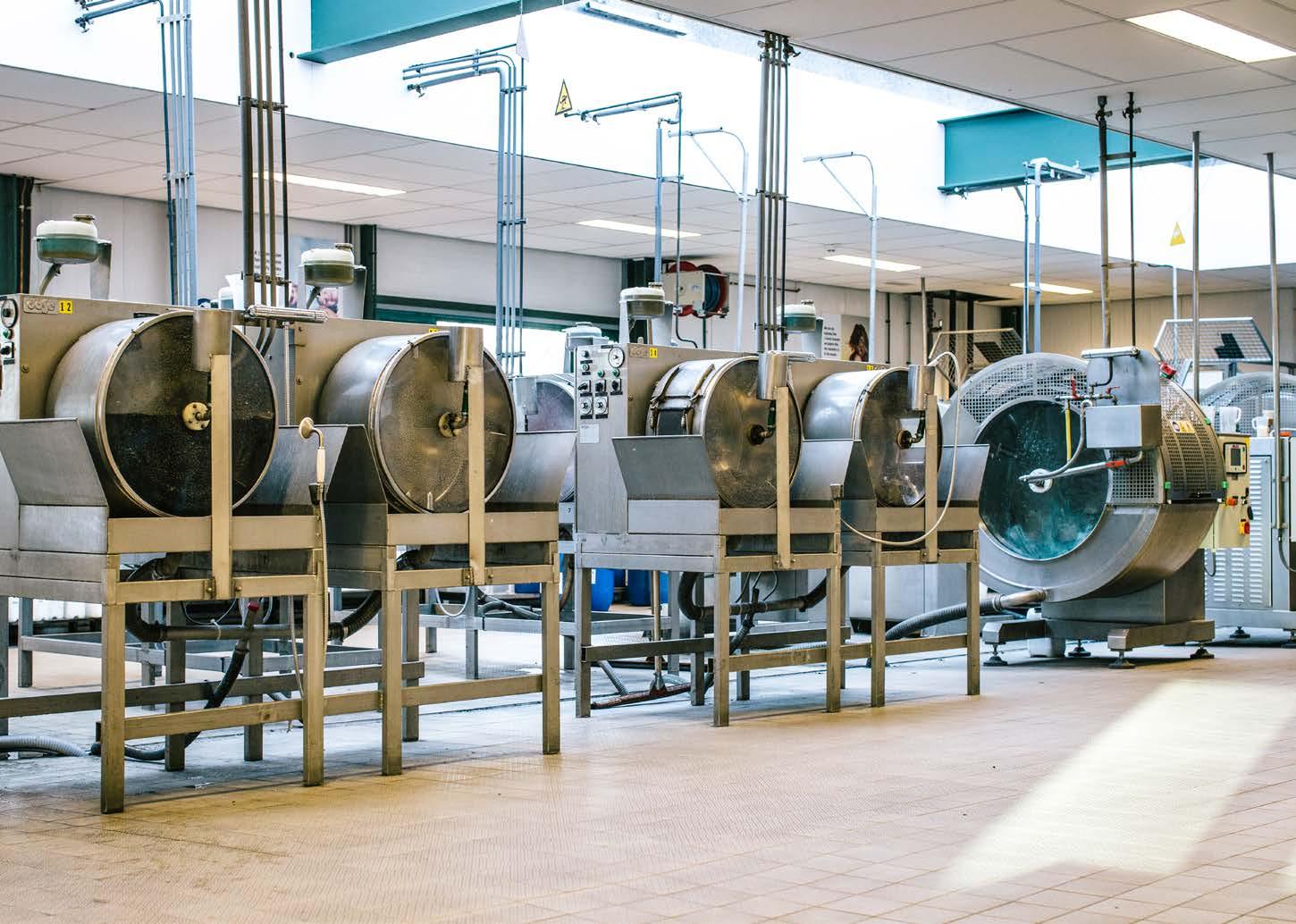
“Sustainability is becoming more and more a qualifier for doing business.”
164 CREATIVE INDUSTRY
With over two hundred and two years of history, an internationally leading role and an ambitious research and innovation strategy, with the aim to provide solutions that enable full circularity, Royal Smit & Zoon is not only a successful company but also confident it can transform the leather industry. To accomplish this, the company is expanding its collaboration with other players in the industry.
Transforming the leather industry
For agents, distributors, customers, fashion brands, non-government organizations (NGOs) and many other bodies, Royal Smit & Zoon acts as a catalyst in the target to make the leather value chain largely sustainable. It is not difficult to understand the complexity of realizing this ambition. The industry is built on a diverse customer base and tanneries operate in many different markets, both geographically and economically. Some of them primarily produce leather for the automotive industry; others for shoes, bags or furniture. As a result, they all have different requirements and demands.
World-wide, tanneries are under pressure to adapt from many different directions: media influence, NGOs, increasing consumer demands for leather products to be produced sustainably and assurances that the environment is being respected, particularly when compared to the effects of available alternatives. Tanneries are
also showing a growing focus on sustainability by applying ever-improving standards while, at the same time, governments are imposing tougher regulations.
These demands and pressures for change generate a strong call to action throughout the value chain, which can support Royal Smit & Zoon in its efforts to create a more sustainable leather industry. To fulfil this role, the company has developed inspiring activities to improve sustainability and education at the important intersection of innovation and responsible quality management.
Royal Smit & Zoon also has to reckon with a changing environmental, social and governance (ESG)-landscape. A new European directive for sustainability reporting, the “Corporate Sustainability Reporting Directive” (CSRD) has been implemented and this CSRD will become mandatory for the 2025 ESG
report. The company collaborates with other stakeholders to determine where they can have the most impact on people and the environment, and which ESG-related risks and opportunities are significance for Royal Smit & Zoon.
The leather tanning process - from beamhouse to finishing
The consecutive steps in the leather value chain help to create an idea of how a leather product is actually produced. From what is termed ‘beamhouse’ to finishing, all steps are conceived and designed to ultimately transform an ancient and natural material that is a by-product from the food, meat and dairy industry, into a unique and precious leather article such as a piece of furniture, a bag or car upholstery.
DUTCH INDUSTRY 165 Royal Smit & Zoon
The steps in the leather value chain comprise:
• Beamhouse. This refers to the stage in the production process that prepares the leather for tanning. This includes soaking, liming, deliming, bating (steeping the skins in a fermenting solution) and pickling, as well as a number of mechanical operations.
• Tanning. This is the process of treating hides of animals to produce leather. Tanning involves a process which permanently alters the protein structure of skin, making it more durable and less susceptible to decomposition, as well as possibly colouring it.
• Re-tanning. As primary tanning is not always sufficient to maintain the desired characteristics specified by the customer, it can be re-tanned. The tannins used for this process are different from those used in the primary tanning stage. This process affects the feel of the leather and its dyeability and fullness, as well as other factors such as light fastness before finishing.
• Finishing is the last step and determines the appearance of the final surface of the leather and its surface properties. This includes colouring, waterproofing and wax dressings, as well as mechanical processing stages such as ironing or embossing.
Historically, tanning used tannin, an acidic chemical compound from which the tanning process draws its name, derived from the bark of certain trees. An alternative method, developed in the 1800s, is chrome tanning, where chromium salts are used instead of natural tannins.
Royal Smit & Zoon uses the latest technologies for a sustainable production of leathers and the company’s partner tanneries use their solutions in an effective and environmentally friendly way. However, the latter do not compromise the high-quality standards of the leading manufacturers of furniture, garments, bags, shoes and car upholstery.
THE ROYAL SMIT & ZOON PRODUCT PASSPORT: A SUSTAINABILITY COMPASS
A good example of Royal Smit & Zoon’s catalyst role is its Product Passport. This provides an easyto-use overview, with data on the performance of Royal Smit & Zoon’s wet end chemicals on both leather and on the environment. It also provides answers to the growing need for transparency and traceability of substances throughout the leather value chain.
Based on information in the Product Passport, a leather producer can choose the products more wisely and, with the help of Royal Smit & Zoon technicians, develop recipes that reduce the impact on the environment. This lowers the cost of environmental processing, while preserving the quality of the leather.


166
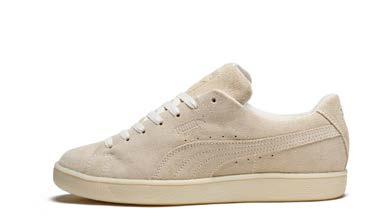
Research and innovations
Royal Smit & Zoon’s bold ambitions to reach a largely sustainable leather industry are empowered by large investments in research and innovation. Some examples of its latest innovations, which are all geared towards the same goal of making the entire leather industry sustainable, include:
• Zeology: a new word for a new standard in leather tanning. Based on zeolite, it is chrome-free, heavy metal-free, aldehydefree and easy to implement; yet it offers unrivalled leather performance. This creates the best of both worlds: the environmental benefits of a sustainable alternative to chrome and glutardialdehyde (GDA) tanning, plus a reliable, consistent, superior quality of the tanned material.
• Biopol: a bio-based product range that is created by using the latest technologies and insights in four areas:
• Biotechnology: designing products by using novel raw materials with natural origins. Circularity – the utilization of renewable
sources, waste streams re-utilization or smart utilization of low- and no-value biomass side-streams.
Products and processes – minimizing the product’s environmental footprint. Biodegradability – reaching for the utmost biodegradability of all waste
• Renewability range: a range of retanning agents and fatliquors to maximize the renewability. They exhibit excellent haptics and properties to enable a more sustainable leather production. The range offers a combination of existing products, as well as innovative new products, allowing environmental and ecological advantages, while ensuring the right performance in leather making. By using these products as a basis, in combination with similar renewable finishing solutions, it is possible to improve the renewability of a leather article while still achieving high quality leather.
• Bisphenol-low solutions: bisphenols have become an important topic of discussion in the leather industry, especially since the restriction proposal of the European Chemicals Agency on bisphenol. To meet regulations and to hold on to Royal Smit & Zoon’s mission statement, to create a sustainable leather value chain, the company has developed a special range of six wet end solutions optimized on bisphenol for high quality leather.
• Smitools: easy-to-use tools to help tanneries to make post-tanning processes simpler and sustainable. For example these help them avoid formaldehyde-based
Royal Smit & Zoon
rejections, to avoid or deal with fatty spew on leather, and to develop other useful guidelines to improve quality and sustainability of leather products.
Royal Smit & Zoon’s research team continuously works to develop new biobased products, to reduce emissions and, by improving the uptake of chemicals in the leather, to reduce the volume of chemicals in the wastewater. This is beneficial to all parties: tanneries save costs by using less and thereby decrease the negative impact of the tanning process on the wider environment. Moreover, based on the data in the Royal Smit & Zoon Product Passport (see text box), tanneries can choose their wet-end chemicals more wisely. Royal Smit & Zoon’s leather technicians are helping to develop optimal recipes, enabling tanneries to produce beautiful leather while reducing their environmental footprint.
The focus of Royal Smit & Zoon as a familyowned company is continuity. Therefore, sustainability forms an important part of its future. Sustainability and innovation will continue to be important strategic drivers and the company will continue to work closely with its customers and fashion brands on developing new products and services in this area. By intensifying these collaborations, Royal Smit & Zoon seeks to make the leather value chain sustainable and to do this, the company will continue in its efforts to maintain its leading role in the industry.
167 DUTCH INDUSTRY

Deserving a better reputation
200 YEARS OF SMIT & ZOON
THE TANNERY OF THE FUTURE
Together with the Leather Working Group (LWG), Royal Smit & Zoon introduced the Tannery of the Future self-assessment tool in 2019 to support leather manufacturers in their journey towards environmental excellence and LWG-certification. Designed as an easy-to-read questionnaire, the tool allows tanneries to evaluate their current environmental and social performance, to identify areas where there is room for improvement and to understand how ready they are to undergo an LWG audit.
Maybe just as important as transforming the leather industry itself, Royal Smit & Zoon feels the need to improve the products’ reputation. Where leather used to be a ‘feel-good’ product, contemporary attitudes, based on increasing attention for animal welfare and the drive to reduce methane emissions, can result in leather products being viewed ‘under a magnifying glass’. Leather is related to livestock and, as such, it is being looked at more critically. However, what is largely ignored is that leather is a by-product and, as long as people consume meat, it is highly advisable to use the skin as well to avoid it being simply consigned as waste.
The company’s history began more than two hundred years, and seven generations ago, when Albert Smit, captain of the ship “De Koornzaaijer”, founded Smit & Zoon. Originally the company traded in dried codfish, salted herring and medicinal cod liver-oil, but soon expanded its activities to trade in animal oils, vegetable oils and proteins. From there, Smit & Zoon gradually developed into a specialized leather chemicals company.
“Leather is a truly sustainable material. Hides and skins are a by-product of the meat and dairy industry that would otherwise be turned to waste. By transforming them into leather, we are creating a product that is both natural and long-lasting.”
As a member of the ‘Leather Naturally’ initiative, Royal Smit & Zoon promotes the use of globally-manufactured sustainable leather and seeks to inspire and inform designers, creators, and consumers about its beauty, quality and versatility. The leather industry is facing intense competition and pressure: on the one hand from synthetic materials manufactured from non-biodegradable petrochemical derivatives and, on the other, from special interest groups. Leather Naturally seeks to stimulate discussions based on facts, to highlight the natural beauty of leather and, even more importantly, to educate the buying public, designers and youth about leather and the leather industry. What is significant is that the leather value chain is, in a true sense, a value-creating chain. It processes hides, which are in reality a waste product and, ultimately, produces a high quality and luxurious product.
Today Royal Smit & Zoon offers its customers, who comprise tanneries world-wide, products for the leather-processing industry; more specifically for the tanning, re-tanning and finishing stages of the leather-making process. The company’s products have a necessary and important effect on the characteristics of leather, for example softness, stretch, water repellency, fashion and colour.
Royal Smit & Zoon leather chemicals can be found in many high-end brands of footwear, handbags, furniture upholstery, automotive interiors and other leather goods.
Royal predicate
On the occasion of the company’s 200th anniversary, King Willem-Alexander of the Netherlands granted Smit & Zoon the Royal predicate.
“With this honor, the King is granting Smit & Zoon a visible reward for the efforts of seven generations of entrepreneurship, innovation, and care for our customers. For us, this is also an incentive to continue on our road to sustainable innovation. Today, being innovative comes with responsibility: creating a socially and environmentally sustainable leather value chain.”
168
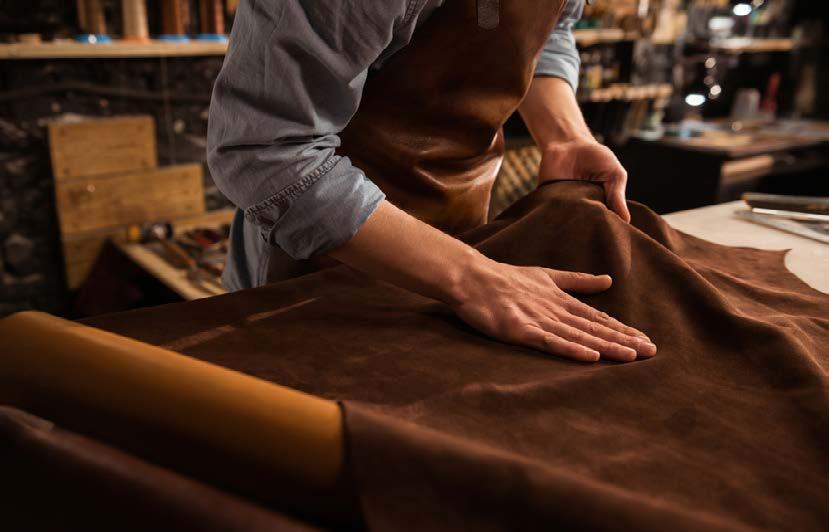





169 DUTCH INDUSTRY
Royal
Smit & Zoon

“We are a family business, and we are working for the next generation.”
170 CREATIVE INDUSTRY
As the printing and publishing industry is changing rapidly and several companies in the sector have disappeared in recent decades, Royal Van der Most has embraced this period of transformation and is coming out stronger. The company is re-inventing itself and transforming the printing industry at the same time.
Re-inventing the printing industry
The period of change in the printing and publishing industry has been caused by powerful technological shifts, that have created difficult times and have lasted for over a decade. As a result, quite a shakeout has occurred in the industry.
Despite this, some players have used the period of transformation to change their business models, including Royal Van der Most. Instead of being a producing industry, the company changed its vision as it became aware that printing had become a part of the much broader orientated service industry. Therefore, based on a strong ‘all in one’ service concept, Royal Van der Most has repositioned itself successfully as a one-stop shop for business communication needs.
This repositioning was not new to the company. Even in its early days Royal Van der Most showed itself to be adaptable
to changing circumstances and the company quickly chose to diversify its portfolio with different printing products and, as a result, proved to be less vulnerable. These days, the same diversification strategy includes online communication and additional services.
Not just a printing company
At first sight, Royal Van der Most is an allround graphics manufacturer and partner for organizations that have extensive communication needs. The company produces and finishes all possible types of communications in-house, with 350 committed employees in the design studio, the printing plant, the print and mail centre, postprocessing/fulfilment, the logistics hub, the envelope factory, the digital mailroom and the IT department.

“We do not only provide a single address for a client to turn to for graphics consultations, but also we offer a team of professionals in IT, Marketing and Logistics, who are happy to advise on how to use communications to generate maximum conversion within one’s target audiences.” - Marriel van der Most, CEO
DUTCH INDUSTRY 171 Royal Van der Most
However, the company offers much more than just quality production. As a communications and campaign partner, it uses its products and services to help clients to improve effectiveness in the field of communications. The latter can include the implementation process for new corporate identities, as well as setting up, executing, and analyzing online and offline campaigns.
In this way, Royal Van der Most can act as a one-stop shop for all online and offline communications, an approach that has proven to offer a unique selling proposition.
What is valued most
Royal Van der Most is one of the larger players in the Dutch manufacturing industry. A close-knit and solid family business, it cherishes craftsmanship, vitality and being connected as its core values:
“Craftsmanship means to us being really good at what we do. And with that we mean everything that we do; from quotation to delivery.”
According to Marriel van der Most, vitality is a foundation which makes for a healthy organization: “We work sustainably for and in our environment and we are a close-knit team and enjoy our work.”
The third core value is being connected: with clients, employees and suppliers. “All of us have often worked together for many years and because of that we have built mutual connections that can really make a difference.”

MORE THAN 100 YEARS OF HISTORY
The history of Royal Van der Most started in September 1904 when Willem van der Most opened the ‘W. van der Most Printing Works’. Initially, working from the back of his brothers’ bookstore, he started printing bills, stationery, envelopes, labels, and address cards.
The first transfer of ownership took place in 1946. Willem’s three sons were at the helm from then on, supported by a group that had grown steadily to total twenty-one employees. The next milestone in the company history was the purchase of the first envelope
machine in 1956. This marked the start of a period of impressive growth because machine production of envelopes took off very rapidly.
Throughout the ensuing years, Van der Most continued to develop, and its manufacturing site went through multiple expansions. In 2004, on the celebration of its one hundredth anniversary, Van der Most was granted the label ‘Koninklijk’ (‘Royal’ in Dutch). Today, the company is being managed by the third and fourth generations of the Van der Most family, namely Cor van der Most and Marriël van der Most.
172
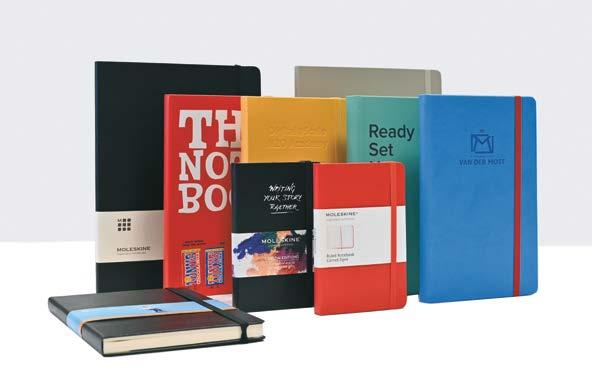
While these three core aspects represent what the company values most, there are other aspects that also are embedded in the company’s DNA and are just as important. For example, entrepreneurship and innovation have always been a crucial part of the company culture. They require creativity, flexibility and decisiveness and are always based on craftsmanship.
Together these factors have been a valuable legacy on which the company has been building for almost 120 years and on which it continues to build.
Royal Van der Most is also building a sustainable future. It not only it wants to make the company future-proof, but also the living environment; for example, by helping to restore ecosystems.
“A sustainable future starts with protecting our limited natural resources. So not only do we compensate for CO2 emissions, we also want to reduce them.”

INVESTING IN THE NEXT GENERATION
Being a family-owned business, Royal Van der Most is focused on continuity and building a future for the next generation. It goes without saying that they do this sustainably. They invest in people. They look out for each other, and they connect and try to be meaningful to the world around them. Royal Van der Most opts for sustainable solutions that really contribute to a better balance between people and the environment.
As a family business, they also believe it is important that children are well educated, regardless of where they grow up. Especially for girls, it is not self-evident everywhere in the world that they can shape their lives on their own. Because of this conviction, the company is a business partner of Free a Girl and War Child.
“Children are the future. Anyone who teaches a child something useful invests in future generations.”
Most Branded: part of the Van der Most graphic house
In 2023, Royal Van der Most launched its own graphic design studio Most Branded. Being part of Royal Van der Most it offers an online platform for creating, organizing, managing and ordering communication products, with one easy access, central ordering point that offers many options for different users.
“With studio Most Branded we continue to build the future together. We are becoming a graphic house, a trusted address for all communications. From strategy to advice from concept to production.”
With ‘Most Branded’ Van der Most inspires, creates and connects with clients in new ways. The services are centered around simplicity, offering clients easy control over complex processes.
Brand portals: making communication easier
From governmental organizations, to hospitals, and financial institutions; they are all in need of advanced and effective communication tools. To make the world of communication easier for these heavy users, Royal Van der Most offers user-friendly brand portals for creating, organizing, managing and ordering all communication products. There is one central ordering point with many options for all users and custom functionalities can be added to the portals. From a brand book to content planners, but also a webshop, inventory management and a digital mailroom are among the options.
173 DUTCH INDUSTRY
Royal Van der Most
“We make a seemingly complex digital environment easily accessible a large group of people.”
Printing as a marketing tool
The times when packaging served only to contain products until the moment of delivery have long since passed. Today, for many products, the packaging is an essential part of the relevant product experience. Royal Van der Most’s cardboard envelopes are a good example of this: apart from providing better protection for documents during shipping, they are also a significant marketing tool. They are also equipped with ‘stick and tear’ strips so that they are easier to open.
Another advanced service offered by Royal Van der Most as part of its servicing strategy, is personalized printing, also known as ‘Personal Print on Demand’. While this may sound like an expensive option, the costs are often more than compensated for when set against the benefits. As such, it has become a major marketing tool for many company brands. Recently, the demand for personalized printing has risen rapidly and Van der Most has equally risen to meet this increase.
“We have the latest high-end production printers at our disposal, enabling us to digitally print, personalize, and/or address small print runs even better.”
Personal Print on Demand can be used, among other things, for brochures, envelopes, sheets, cards, information guides, stationery, invoices, packaging materials and much more.

‘ROYAL VAN DER MOST ACADEMY’ - THE PRINTING CRAFT
The art of printing is a true craft. And learning this craft is something that does not take place just in school. Most skills can only be learnt when on the ‘shop floor’ where workers can start learning the secrets of printing. Therefore, at Royal van der Most, employees such as machine operators or process operators are learning to improve their workmanship on a regular basis. With a specialized internal academy and in close cooperation with educational institutions, employees can start their diploma internally and grow their career with additional education. The printing craft is also shared with clients and partners. This is particularly valuable for all the parties involved, as it appears that many people are unfamiliar with not only the printing process itself, but also the consequences of sometimes minor changes in design or specifications.
Towards a new future of printing
To contain its competitive advantage, Royal Van der Most has embedded its strategic vision and company values deep into the company culture. These are based on three separate pillars which enable the company to stay strong in difficult times for the printing industry.
The first strategic pillar is internally referred to as ‘Last man standing’ and is based on the ambition to continue producing 1.5 billion envelopes and 2 billion letterheads and forms per year for as long as possible. It offers a strong base from which to further develop products and services.
The second pillar is to offer more to existing customers. ‘Mostshop’, has been further developed into an online platform with which the complete communication needs of clients can be met.
The third strategic pillar is aimed at the policy of continuing development of new groundbreaking products, much as the company pursued in its early history. Before the Second World War the company mainly produced flour bags and carton boxes to transport chicken. After the Second World War the envelope became their main product. Soon, a new, future-proof product will take this place as the new basis from which to continue exploring the future of printing.
174





175 DUTCH INDUSTRY
Royal Van der Most

“We think it is high time to intervene and turn the tide positively.”
176
CREATIVE INDUSTRY
Schiphol Area Development Company (SADC) seeks to fulfil an active role and add value to its own business practices, as well as to the region, the business environments it develops, and to the natural environment where the developments take place. With smart collaborations and a balanced strategy, the company improves business, nature, and society in a very challenging environment.
Improving business, nature, and society
In a global context, the trend towards megacities is evident: highly urban areas in which technology and the integration of nature and water play an increasingly prominent role. This trend is also visible in the Amsterdam Metropolitan Area, which continues to grow as an attractive, internationally-orientated region for talent to live, work, and develop. At the same time, scarcity is a limiting factor and results in fierce competition on the markets for labour, raw materials, and space.
This context is hugely challenging for a company developing an area, that has the mission to strengthen and increase the economic, social and ecological value of the unique, internationally oriented Schiphol region, and far beyond.
A stimulating role
Over the past 37 years, Schiphol Area Development Company (SADC) has been the trusted partner for many public and private parties in the Schiphol region. The development company was founded in 1987 by both public and private-sector parties. Their goal was to utilize the economic potential of Amsterdam Airport by joining forces to enhance the region’s competitive position, both domestically and internationally. Also, it was their ambition to develop Schiphol into a dynamic hub of aviation in order to act as an accelerator for economic growth. State of the art business parks were seen as essential for facilitating foreign direct investment and the growth of job opportunities, serving as the primary reasons why SADC was founded.
To this day, SADC still develops high quality and accessible business locations in the

“We connect the interests of our shareholders for a more powerful region. As an area developer, we aim for high-quality for the long term.” - Eva Klein Schiphorst, CEO
DUTCH INDUSTRY 177
SADC


Amsterdam Metropolitan Area, that compete at both national and international levels. The company operates a governance model in which four shareholders each hold a 25% stake: the Municipality of Haarlemmermeer, the City of Amsterdam, the Province of Northern-Holland and Schiphol Group. The model brings shareholders and stakeholders together and guarantees solid decision making with an eye for all interests involved.
A balanced strategy
For the area development of the Schiphol region, SADC has based its strategy on four pillars.
The first strategic pillar is maintaining and strengthening the quality of the region. This has always been a major challenge in the Schiphol region, especially in the current trend ‘from volume to value’, which stresses the importance of quality even more. Additionally, scarce space in the region makes retaining and strengthening high-quality work areas even more important. SADC aims to invest in lasting relationships with the community of
users, and by focusing on adaptability, being able to respond quickly to new developments and opportunities. The second strategic pillar of SADC is creating more sustainable areas that are also visibly greener and healthier. In recent years, SADC has led the way with high standards for sustainable and circular area development and has worked closely with entrepreneurs to experiment with sustainable solutions. The challenge is to continually shift the boundaries and thus increase sustainability. The focus towards 2030 is on nature-positive area development and visible greening of work locations - from the perspectives of natural value, well-being, health, and broad prosperity.
The third pillar is Innovative Collaboration. While the global economy is digitizing, internationalizing and becoming more sustainable at a rapid pace, new challenges emerge, such as a scarcity regarding the use of space, energy, nitrogen, raw materials, and talent. By giving substance to purpose-driven entrepreneurship and public-private partnerships, SADC sees its role as to stimulate social innovation in the development and use of work locations.
SADC’s fourth strategic pillar is about keeping the area accessible. As a hub of major importance, the Schiphol area will always face the challenge of remaining accessible, this being an important part of the regional area development.
SADC approaches its area developments with a broad vision: it should not only be about creating financial value, but also the values of inclusion, health, well-being, and happiness. Additionally, careful consideration must be given to the local ecosystem, including factors such as CO2 emissions, biodiversity, chemical pollution, nitrogen, and clean water.
Stimulating growth, quality of life and biodiversity
In its role as an area developer, SADC must prioritize the interests of all its stakeholders. This involves addressing various aspects, such as the transition to a circular economy, the rise of the digital economy, and the nurturing of business ecosystems. In a rapidly changing world, the balancing role of SADC is increasingly valued. However, the development company goes further by improving these three dimensions through its projects.
SADC stimulates economic growth in a manner that not only enhances the quality of life, but also contributes to the improvement of biodiversity in a given area. Improving these dimensions is a consistent focus in all SADC’s projects, requiring a close collaboration among stakeholders, including project developers, investors, and end-users.
178
VIRTUAL GRID – THE POWER OF WORKING TOGETHER
One of SADC’s key strategic pillars is fostering innovative collaborations, and the power of these can be transformative. This was evident at the end of 2020, when Schiphol Trade Park, one of SADC’s area developments, faced an unexpected challenge: the regional power grid was overloaded precisely when most companies were seeking to establish themselves on the new industrial estate, and the power company was unable to accommodate additional connections.
In collaboration with the companies involved, SADC developed a creative yet highly effective solution: establishing a virtual grid to optimize the limited space on the power grid and enable sharing of capacity among the companies. Within just three years, fifteen companies, ranging from hotels to logistics service providers, have successfully established themselves at Schiphol Trade Park, each drawing sufficient power from this innovative virtual grid.
The virtual grid relies on a smart system which continuously measures supply and demand on the industrial estate and ensures that the grid does not become overloaded. If this does happen, a company will fall back on a battery that runs on solar energy, or in extreme cases on a gas generator. In addition, the participating companies invested in solar panels and other forms of renewable energy and, although there is a generator for backup, so far this has never been used.
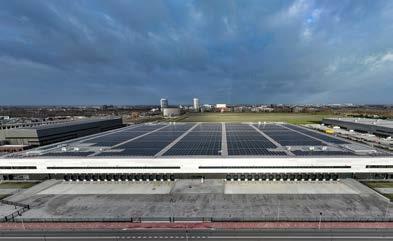
The softer side of sustainability
SADC believes, as a developer of large areas, it can make a significant impact with its balancing role. The company is also convinced that the technical side of sustainability is only part of the solution and has already secured a place in the DNA of everyone involved. With the overarching objective of making SADC’s business parks the most sustainable business parks in Europe, SADC is looking to broaden the sustainability spectrum and increasingly focus on improvement opportunities on the softer side of sustainability.
The ultimate goal is to create spaces where everyone enjoys staying, benefits from various functions, and experiences comfort and safety, for both people and animals. The vision is for everyone to show a sense of ownership and responsibility, with all end-users i.e. residents, having an intrinsic motivation to progressively embrace sustainability and contribute to a more future-proof area. The aim is not to set a fixed sustainability standard at the time of creation, but to create self-evolving area’s that grow in quality over time.
DIGITAL TWIN
The Amsterdam Metropolitan Region is facing a major urbanization challenge. Within the Airport Corridor, the area between the Amsterdam Zuidas and Hoofddorp, there is room for the development of new, high-quality, and sustainable living-working locations. However, this does bring challenges, for example, how to deal with the energy transition and sustainable accessibility in a region with so many people and very limited space?
To overcome these challenges, it is vital to oversee economic and social consequences. This requires current, useful information. However, the data required is spread across various public and private parties, making it very difficult to make the best choices for the future.
To be able to combine the required data, SADC has developed what is termed a ‘Digital Twin’ of the Airport Corridor, together with other parties. The Digital Twin is an innovative tool for area development, generating a digital representation of reality that allows for the integration, analysis, and simulation of all relevant information. This tool enables the visualization of real-world consequences resulting from specific decisions. The Digital Twin can balance choices among society, sustainability, ecology, well-being and the economy.
179 DUTCH INDUSTRY
SADC
Nature positive
Just as much as SADC is trying to improve business opportunities and accelerate economic growth, the company also aims to improve the ecological quality of the region. This means going a lot further than the often heard ‘climate neutral’ approach. To realize this natural improvement in the area, SADC has developed an ecological vision for Schiphol Trade Park with the ultimate goal of creating a nature-positive business park.
The ecological vision supports decision-making in the pursuit of ambitions related to health and well-being, nature inclusivity, ecology, quality of life, functional optimization, and the amenity value of the area for its users. It provides direction and the right ingredients not only for the further development of Schiphol Trade Park as a whole, but also looks beyond the boundaries of the area. After all, nature does not adhere to planning boundaries. During plan development, it is made clear which frameworks and preconditions apply, which design elements are important and which types of flora and fauna should or can be accommodated. The phased approach to the development of Schiphol Trade Park allows for temporary productive use of the agricultural land, for instance by cultivating miscanthus (elephant grass), or other crops playing an important role in the creation of a bio-based economy.
In this way, Schiphol Trade Park becomes the example of a place where people and animals can live in good balance with each other, and a new frame of reference is created for all other area developments.
WORLD’S MOST SUSTAINABLE LOGISTIC BUSINESS PARK
The Dutch Green Building Council (DGBC) has awarded Schiphol Trade Park with the Outstanding BREEAM-NL certification, making it the world’s first logistics business park to receive this BREEAM-NL qualification. With a score of 87.67% in BREEAMNL Area Development v2018, Schiphol Trade Park is now the most sustainable logistics business park in the world, as well as the first business park in the Netherlands with a BREEAM-NL recertification for sustainable area development.
In 2014, SADC received an Excellent BREEAMNL Area Development Design Certification for Schiphol Trade Park.
The upgrade to Outstanding (the highest available designation on a scale of 5) for the recertification in the realisation phase is partly due to links between new initiatives by SADC and BREEAM-NL, such as a sustainability dashboard and circular procurement. Requirements and applications are constantly scaled up based on new experiences and developments. In addition, seven new buildings at Schiphol Trade Park were certified with BREEAM-NL New Construction.
A unique detail is that 3% innovation credits were awarded with the certification, which will further stimulate pioneering sustainable initiatives. One of the innovations involves the virtual grid in which parties with and without power capacity share the available capacity. This ensures that supply and demand are optimally aligned and unnecessary CO2 emissions prevented.
Connecting people, businesses, and ideas
One of the best strengths of SADC is the ability to connect people. Following up on the success of its collaborative approach, SADC also works with the Amsterdam Airport Area Association (AAA) for the international marketing of the Amsterdam Metropolitan Area and its locations. AAA is a partnership of public and private organizations involved in the development of business locations. Through joint international marketing and promotion activities, AAA aims to attract and facilitate international companies, in collaboration with the Invest in Holland network. The services offered comprise assistance in search and selection of temporary, flexible, and permanent business locations, and include site visits. Additionally, AAA has the capability to provide market intelligence, including specific data on logistics, aerospace, and data centers, as well as insights into the Dutch investment climate. This encompasses information on the Dutch tax climate, incentives, legal and regulatory frameworks, and labour market details. Also, tailor-made fact-finding programs can be arranged for information about the fiscal climate, the market, the availability of talent, the business climate, the quality-of-service providers, and the availability of business locations.
“We connect people with each other. We connect businesses, and we connect ideas.”
PHOTOS: THE FLYING DUTCHMEN
PHOTO EVA KLEIN SCHIPHORST: PETER BOER PHOTOGRAPHY
180
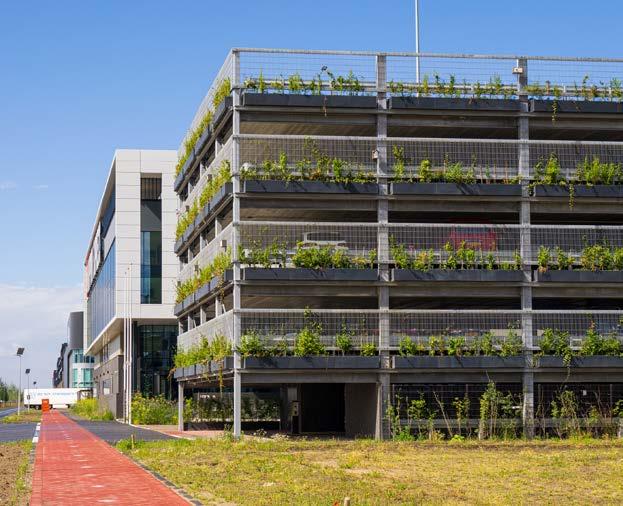


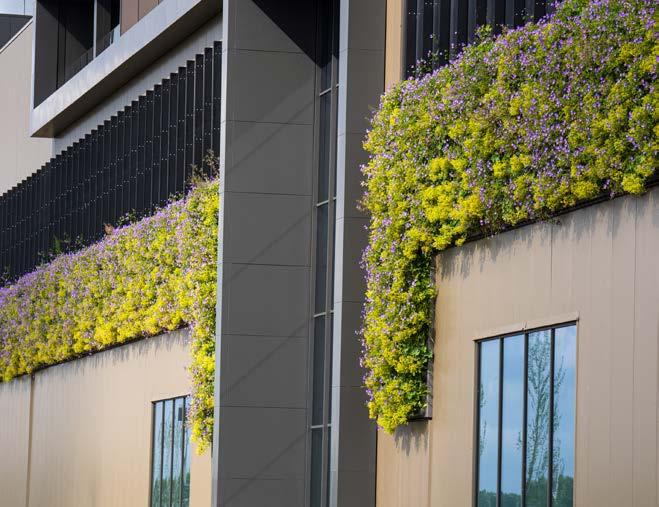
181 DUTCH INDUSTRY SADC
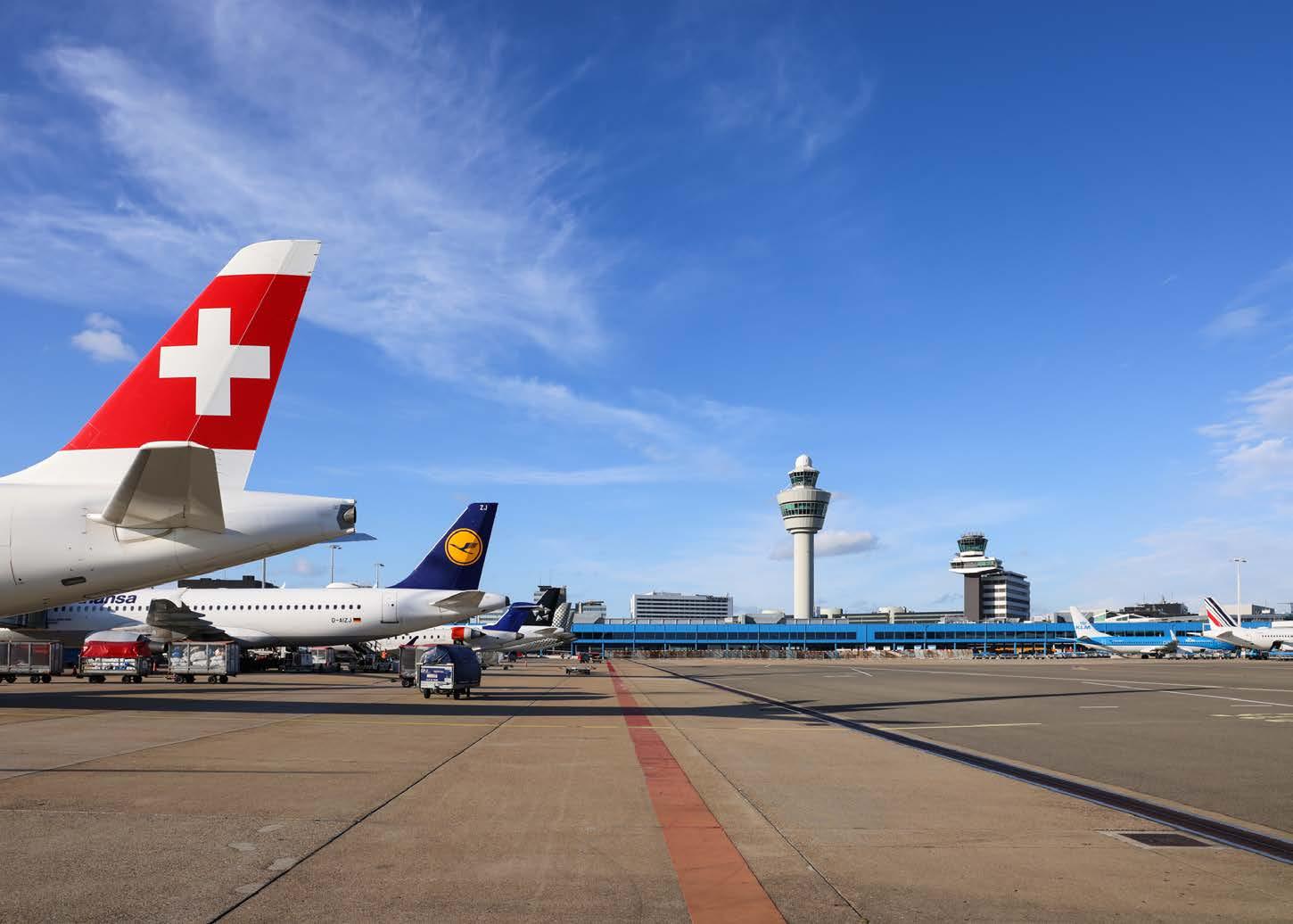
“We want to create the world’s most sustainable, high-quality airports, setting a new, aspirational goal for our organization and the aviation value chain.”
182 LOGISTICS
Royal Schiphol Group (‘Schiphol’) wants to keep connecting the Netherlands in the future, but they know they must shift up a gear. That’s why they are going for a quieter, cleaner and better Schiphol: an airport and an aviation industry which is in better equilibrium with the world around it.
Creating the most sustainable airports in the world
Schiphol has been connecting the Netherlands with the rest of the world for more than a century. It’s something Schiphol has done with pride. But, in the current timeframe, the airport is very much aware that its activities have an impact on the environment and the local area. Schiphol is entering a new era, where these pressures will play a greater role in the choices made by the Group.
Connecting your world
Royal Schiphol Group has an important socioeconomic function. The airports in the Group create value for society and for the economy, with safety as a key enabler. Together, with international activities, Schiphol Group’s Dutch airports are part of their ‘Why’ which they have called ‘Connecting your world’.
Schiphol invests in infrastructure and facilities across its airports to connect the world and to fulfil its ambition of creating the world’s most sustainable, high-quality airports. Its robust financial policy aims to safeguard the independent financing of its business, both today and in the future.
“We want to ‘connect your world’ by orchestrating inspiring journeys and building connections for passengers and other stakeholders. As part of this ambition, we are transitioning into an airport that will act as a front runner in sustainability.”
Airport in transition
The ‘Why’ of Schiphol may have remained unchanged, but, as has been the case for most airports in the world, the environment in which the airport operates has greatly changed.
The impact of the pandemic, combined with the huge demand for labour and the surge in passengers and flights shortly after a period of travel restrictions and lockdowns, created problems. Consequently, these exceptional circumstances demonstrated to Schiphol that a change was needed in the way needed to manage its business.
“Schiphol must be a place where everyone works with pride and dignity: with good working conditions and with a good salary. This is the foundation on which we want to bring the service we offer travelers and airlines to the desired level.”
Schiphol has used this difficult period to refocus and change its international operations to match the new world that has emerged. It wants to become a group of airports which is in better equilibrium with the world around it.
DUTCH INDUSTRY 183 Schiphol
Vision 2050
In these turbulent times, a strong long-term vision offers valuable guidance. Schiphol, which aims to achieve its long-term ambitions depending on the ability to adapt to its muchchanged operating environment and the many logistical and economic challenges this brings, has outlined its ambitions in ‘Vision 2050’.
The cornerstones of this vision, are ‘Quality of Network’, ‘Quality of Life’, ‘Quality of Service’, and ‘Quality of Work’. These four qualities rest on a foundation of two key enablers: ‘Safety’ and a ‘Robust Organization’. Together, these are the six fundamental pillars that will guide the aviation group through the challenging period ahead.
High quality network: Schiphol provides and facilitates the connectivity that is vital for an open economy such as the Netherlands. At the same time Schiphol is determined to find a long-term solution that will not only safeguard the quality of its network, but one which also focuses on environmental impact instead of the number of air transport movements. This will provide perspective for all stakeholders involved.
Quality of life: Schiphol Group aims to ensure a healthy living environment for local residents. This means prioritizing the needs of local communities such as ensuring acceptable noise levels. The airport group is also making a concerted effort to improve the quality of life for employees, starting by providing better employment terms and working conditions.
Quality of service: This goes beyond the traditional goal of serving air passengers. Airports are a place where people from all walks of life, such as travellers, businesses, students and research institutions, can come together. Schiphol’s real estate and commercial teams further support the local business community and knowledge economy by connecting people, businesses and ideas from around the world, and by providing highquality workspaces for tenants.
Safety: This is a key enabler. As an operator of airports, Schiphol has a responsibility to safeguard the health of passengers, employees and other visitors by carefully managing facilities and processes.
Robust organization: This is the second key enabler of Vision 2050. It means that Schiphol aims to be a financially resilient, flexible and forward-thinking organization. This involves making the most of the diverse qualities and capabilities of the people and the different airports that together make up the Schiphol Group.
“An important part of the Quality of Work-pillar is the well-being of employees. We want everyone here to be able to do meaningful, healthy, and varied work, and preferably for employees to also have a bit of fun.”

RENEWABLE FUEL FOR GROUND HANDLING
In 2023, all aircraft ground handling vehicles on Schiphol airport switched to HVO100 fuel. This renewable fuel emits 98% less CO2 than the kind of diesel that was used before. About 1,900 diesel-powered ground handling vehicles are in use on Schiphol’s platform. It is a small but clean step towards lower impact aviation. Schiphol sees renewable diesel as a temporary solution. It will be used until all ground equipment is electric or hydrogen-powered and emission-free.
184
Short term action plan
When you want to become the most sustainable airport in the world, you have to act accordingly. Schiphol has been making the airport more sustainable for many years and will be doing a lot more over the coming years as well. The airport is taking action and leading the way to initiate change with eight concrete steps in a broadly communicated action plan. Most of these steps need to be in place already by 2025/2026.
Step 1: Clear limits for noise and CO2 emissions
The airport wants to transition to a new system with clear agreements on noise and CO2 emissions. Flying in cleaner and quieter aircraft, and with sustainably produced fuels, is how to achieve this lower impact aviation. In this way, Schiphol can better balance its operations with the needs of the environment and its employees, and contribute to global climate goals.
Step 2: Avoiding the noisiest aircraft
The noisiest aircraft cause above-average noise nuisance. For this reason, Schiphol wants to prevent the noisier types of planes from coming to the airport. By tightening the maximum permissible daytime and night-time noise limits and further encouraging the use of quieter aircraft, nuisance in the surrounding area will decrease.
Step 3: No take-offs and landings at night
Schiphol wants to stop flying during a large portion of the night. By no longer allowing aircraft to depart between 00:00 and 06:00
and by no longer allowing flights to arrive between 00:00 and 05:00, there will be around 10,000 fewer night flights, which will help the local environment get a better night’s sleep.
Step 4: Stop small aviation
By stopping the facilitation of business air traffic and air taxis at Schiphol-East, and by only accepting social air traffic, such as police and ambulance helicopters and the coast guard, the nuisance and emissions from small aircraft are significantly reduced.
Step 5: No additional runways
Schiphol has welcomed the Ministry of Infrastructure and Water Management’s decision to free up land that had been reserved for a possible second Kaagbaan Runway. Land for this runway had been reserved for more than 20 years but the airport has concluded that this is not needed in the new airport strategy and that it puts unnecessary pressure on the already scarce space in the area.
Step 6: Investing in local environment and residents
Despite all nuisance-reducing measures, aviation continues to have an impact on the local environment. Therefore, Schiphol Airport is setting up an environmental fund. Between now and 2030, Schiphol will be making €70 million available through this fund, to be invested in innovative construction concepts, home insulation and area development.

SUSTAINABLE TAXIING
Schiphol and partners have started conducting follow-up sustainable taxiing tests. At the airport, a KLM plane drove from Schiphol-Centre to and from a platform near the Zwanenburgbaan Runway with its engines switched off. This way of taxiing can significantly reduce fuel consumption and therefore CO2, nitrogen and ultrafine particle emissions.
7: Safeguarding cargo
As the cargo sector provides many employment opportunities in the area and is valuable for the economy and business climate, Schiphol Airport is committed to keep 2.5% of the available take-off and landing slots available for cargo. Cargo companies are expected to comply with the new, stricter, rules for noisy aircraft.
185 DUTCH INDUSTRY
Schiphol

BAGGAGE ROBOTS
In the baggage hall at Schiphol, Aviapartner employees have started using the first of the airport’s new baggage robots. The robot is taking over the heavy physical work of lifting suitcases from the baggage handling staff.
Schiphol purchased 19 robots after positive reactions from employees during a trial earlier in 2023. In addition, the airport has acquired a 10% stake in Cobot Lift, the company that makes the robots, in order to ensure a swift roll out and scaling up at Schiphol.
“People must come first again at Schiphol, which is why it’s important we improve the working conditions of baggage employees. These robots do that.”
8: People first
This step marks a shift of focus: from lowering costs to creating better working conditions. The airport is committed to better pay in all sectors, better protection against emissions, less competition between handling companies and better conditions of employment in baggage handling.
Together towards sustainable aviation
The leading principle in Schiphol’s long-term strategy is that the airport group aims to be a leader in the transition towards making global aviation more sustainable. To do so, the group aims to find new ways in which to avoid extra pressure on the planet, while adding value to it instead.
With its Vision 2050 and eight-steps action plan, the airport group is showing that it is taking this quest seriously: but it is not alone in thus. As leading member of the TULIPS consortium, Schiphol brings together parties in the aviation chain to accelerate sustainable aviation.
The TULIPS consortium comprises four frontrunning airports, airlines, knowledge institutes and industrial partners and is funded by the EU as part of the European ‘Green Deal’. The consortium aims to accelerate the implementation of innovative and sustainable technologies to reduce emissions at airports. Collaborating at four very different airports, with the input from the broad coalition of partners, will allow the impact of the solutions
on the European climate targets to become apparent. Successful demonstration of specific actions to accelerate sustainability in different scenarios will showcase these innovations and how they can be implemented throughout Europe. The outcomes of the project are expected to contribute significantly to the decarbonization of the aviation sector. The relevant knowledge gained will be shared and will allow the aviation industry and other European airports to apply the TULIPS concepts and technologies through practical roadmaps.
Equally important, they will continue to play a leadership role in driving sustainability across the aviation sector, aiming for net-zero carbon emissions in aviation by 2050.
CREATING CLEAN AIR
Schiphol conducts pilot projects to reduce ultrafine particles released by aircraft and diesel engines on the airport apron. The airport is testing an innovative installation to filter the air in indoor areas adjacent to the runways, while also exploring the possibility of using the system outdoors. Together with partners from the TULIPS consortium, Schiphol is also advancing research into the use of mist to remove ultrafine particles from the air.
This study is part of the European Green Deal program TULIPS, which is led by Schiphol. (see earlier text for more information on TULIPS).
186
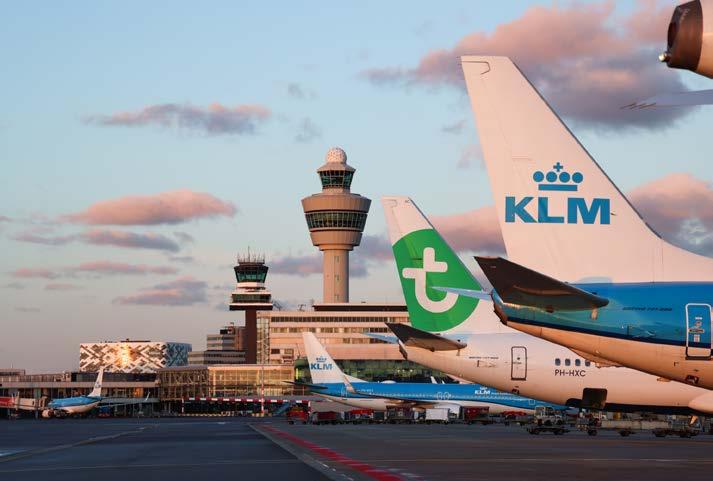


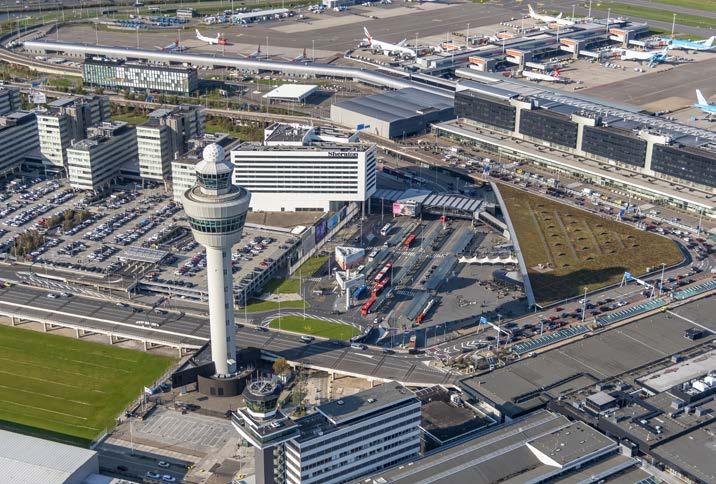

187 DUTCH INDUSTRY Schiphol

“Good health should be accessible to everyone, regardless of education or social background.”
188 SECTOR LIFE SCIENCES & HEALTH | ICT
Studies show that 90% of cardiovascular diseases are lifestyle-related and also that preventive care has a huge influence on health risks. With a digital lifestyle platform and smart tools, Smart Health aims to make good health accessible to anyone, regardless of education or social background.
Good health for everyone
Prevention in healthcare should be approached in a similar manner as a company approaches its business. Suzanne van Pelt, founder of Smart Health, believes that there is too much talking and too little action.
Suzanne advocates that, for prevention to be effective, it should not be selective, but rather inclusive: available to everyone, including healthy people. In order to achieve this and improve public health as a whole, Suzanne started the digital lifestyle platform ‘Smart Health’ in 2016, together with a co-founder; medical doctor and scientist Leonard Hofstra.
Happy people are more effective
Suzanne and Leonard have been lifestyle activists from the very beginning: but they also possess keen business backgrounds. They believe that good health is a right for
everyone, but also that an organization’s opportunities are maximized by energetic people. Research clearly shows that people who have greater vitality are happier and they are therefore more effective.
The common drive of both founders is to give people more self-control. Everyone, regardless of education or social background, deserves the most optimal knowledge about their own health. When people become a smart master of their own lifestyle, they reduce their risk of illness and increase their energy levels. Lifestyle intervention also offers organizations and society the greatest benefits.
With a healthcare system under pressure, the government is making a large budget available for prevention in the National Healthcare Agreement.

“We promise to empower people to take charge of their health and wellbeing with the best technology available.” - Suzanne van Pelt, founder of Smart Health and Leonard Hofstra, co-founder
DUTCH INDUSTRY 189
Smart Health
Tools for employers
Smart Health offers the platform to employers in order to reach as many people as possible. With smart tools, the digital platform is able to speedily measure and scientifically validate how people are doing. The employer doesn’t have to do anything, because the smart system puts the individual employee in the ‘driver’s seat’, with access to the best calculated advice and tools. This self-control strengthens the selfimage of employees and the actions that result from this have a positive influence on fitness, health and effectiveness.
Gain insights
So, how does it work? The first step is to gain insight into people’s health and lifestyle with the online Preventive Medical Examination. Such an examination is normally carried out by an Occupational Health and Safety Service, but with Smart Health it takes place completely online. The digitally conducted research meets the legal requirements of the occupational health and safety research which is mandatory for employers. All answers are compared with 500,000 practical experiences in a database. Smart Health’s technology quickly and accurately maps the current lifestyle scores and possible risks for an employee.
Personal scores and a handy dashboard
Next, all lifestyle areas are questioned, which results in one lifestyle figure and one heart
risk score. Smart Health shows where the employee and organization stand and immediately sets out a plan for the necessary approach. The lifestyle figure developed by Smart Health is calculated from the following factors: Exercise, BMI, Fat, Sodium, Vegetables, Fruit, Alcohol, Sleep, Smoking, Sugar, Stress, Heart Risk, Blood Pressure and Cholesterol.
The Preventive Medical Examination also leads to medically validated advice that presents the situation and solutions to the participant in a handy dashboard. The total score is immediately followed by an action plan that provides useful tips, for example, to lose weight, exercise more, quit smoking and how these can be approached.
This dashboard is also built on the application of successful behavioural science techniques, such as ‘smart nudging’ (how to make a fresh start through changes in behaviour). Technology is used to influence the participant in a predictably positive way. The system stimulates employees with personal goals and quick wins that provide energy. Often the result is that the entire community becomes almost contagious in wanting to tackle their own lifestyle and improve their health.
Everyone wins
The solutions are linked via algorithms to the most suitable lifestyle services and products. Health partners and modules from the platform provide employees with the tools to get started themselves: from physiotherapist
SMART WORK TEST
All over the world, stress and burnout symptoms are reaching epidemic proportions and, as a result, employers are increasingly interested in the mental health and the resilience of their employees.
To support employees in this area, the Smart Health platform for lifestyle improvement and wellbeing has recently been expanded with what is termed a ‘Smart Work Test’. This is a new scientifically based questionnaire that measures the sustainable employability of employees and provides better insight into someone’s ability to work, their work experience and resilience to stress. To gain these insights, an employee’s health, competencies, attitude towards work and work-life balance are examined. The higher the resilience of employees, the higher the ability to cope better with stress and the lower the vulnerability and risk of developing disease.
“Resilience may seem like a subjective term, but it can be expressed in a scientifically substantiated figure in about five minutes, using ten statements. Of course, these are completely anonymized.”
190
to online training, from gym to mental coach. Based on the data, the system provides a perfect insight of which service, and in which area, a participant will achieve the most.
To make the offering even more interesting to employers, Smart Health made it easy to add partners to the system with whom the employers are already working. In this way, Smart Health uses the good solutions that are already available, and everyone uses the right tools to get themselves started. As a result, the Health Index of the organization structurally increases.
For managers and team leaders, the system provides excellent opportunities as it provides insights into where opportunities for success lie, while the company health dashboard gives a strong grip on the wider organization. By watching permanent measurements of activity, managers can monitor how progress is being achieved and where there are opportunities for even more profit through lifestyle interventions.
An excellent example of this is that, as Smart Health puts people in control of their own health, this immediately provides companies with a 20% reduction in absenteeism due to illness.
Smart Health enjoys a lot of positive feedback from clients. Organizations that use Smart Health are particularly enthusiastic about the rapid steps they are making with the tech platform. The individual gets a grip on their health while the organization can monitor its total Health Index: everyone wins.
INCREASING EMPLOYABILITY AT ZEEMAN
Zeeman is a popular and fast-growing retail chain with 1,300 branches in seven Western European countries. Within the company, absenteeism and staff turnover in the branches and the distribution centre have been relatively high. Smart Health provided Zeeman with smart tools to motivate employees to start examining their lifestyle, while continuous monitoring gives managers datadriven insights into the health and engagement of employees.
Smart Health’s e-health platform offers an all-inone solution for increasing the employability and involvement of staff. The platform is available in multiple languages and allows employees to work on vitality in a fun and accessible way. This increases their involvement, employability and job satisfaction.
The results of the first Preventive Medical Examination showed a clear cause for the high absenteeism rate: an increased stress level throughout the organization. Based on this data-driven insight, Smart Health developed a campaign with the special Zeeman vitality team to improve mental health.
Together with Zeeman, the campaign devised, among other things, the Smart Health Roadshow. This is used during visits to Zeeman branches in order to motivate employees to register. One approach was a ‘step challenge’, in which different branches compete with each other to take the most steps in two weeks. Both the Roadshow and the step challenge turned out to be great successes.

Creating healthy cities
A healthy lifestyle is, unfortunately, not easily accessible to everyone. Increasing numbers of people are living unhealthy lives, especially in cities. The result is rising social costs and unsustainable pressure on healthcare. This is why Smart Health also offers its platform and tools to local governments, such as municipalities, to improve the health of its citizens.
‘Smart Health Cities’ offers insight into personal lifestyle, provides tailor-made health advice and makes knowledge accessible to every resident. Everyone can improve his or her vitality and health, regardless of education, background, income or language skills.
The municipality is a key player to making a healthy lifestyle accessible. With Smart Health’s
191 DUTCH INDUSTRY
Smart Health

BETTER HEALTH FOR THE CITIZENS OF ROTTERDAM
The life expectancy of Rotterdam residents is lower than that of other Dutch people. At the same time, inequality in access to health care is growing across the country and the Dutch health care system is overloaded. The resulting health gap not only affects personal quality of life, but also has negative economic and social consequences.
Research shows that the growing health gap is directly related to socioeconomic status. Differences in language proficiency and education play a major role in this. Therefore, the VITR (the ‘Vital Innovation Program Rotterdam’) seeks to offer every citizen equal knowledge, and, as a result, equal opportunities.
The VITR was started by Smart Health in order to bridge the gap between the City of Rotterdam and other health and lifestyle knowledge partners. VITR not only motivates participants to work independently on their lifestyle but also points them to dieticians,
coaches and gyms in the area. Through this preventive approach, VITR reduces the pressure on the healthcare system.
With smart technology, VITR links the individual lifestyle situation of residents to the most suitable solution in the neighbourhood. The Smart Health scan maps the health of the city or city district in advance. This gives the municipality the tools to govern and move towards an increasingly healthy city. Smart Health’s e-health platform then gives Rotterdam residents insight into their personal lifestyle and health risks, including practical and accessible tools to get started.
The differences between the initial and final scan of the pilot showed a clear health gain. The overall lifestyle rating rose from 6.9 to 7.5, and heart risk fell by 1.3 percentage points to 11.9%. Participants also started eating more fruit and vegetables.
practical lifestyle tool, municipalities offer their residents equal opportunities to become and stay healthy. A scientifically validated health test, and Smart Health scans, give participants insight into their personal situation. Smart algorithms then show an overview of local health partners. The anonymous data provides real-time insight into the health of the city for municipalities.
With a recent project in Rotterdam, Smart Health demonstrated that it is indeed possible to reach people effectively from all backgrounds.
“By using smart, accessible, technology and by collaborating with the municipality and local partners, we can move people towards a structurally healthier lifestyle. The best part is that the participants also seem to enjoy it. This is a promise to the future and proof that our bottom-up approach works and the results are longer lasting.”
A healthy future
If it were up to Smart Health, everyone should have a chance of a healthy future, regardless of education, social background and place of residence. That is why founders Suzanne van Pelt and Leonard Hofstra fully intend to make their digital lifestyle platform even more accessible to more companies, in more cities and in more countries.
Collaboration is crucial: with organizations, knowledge institutions, governments and, of course, with the people themselves. This is what it is ultimately about: more people with a healthy and happy life.
192


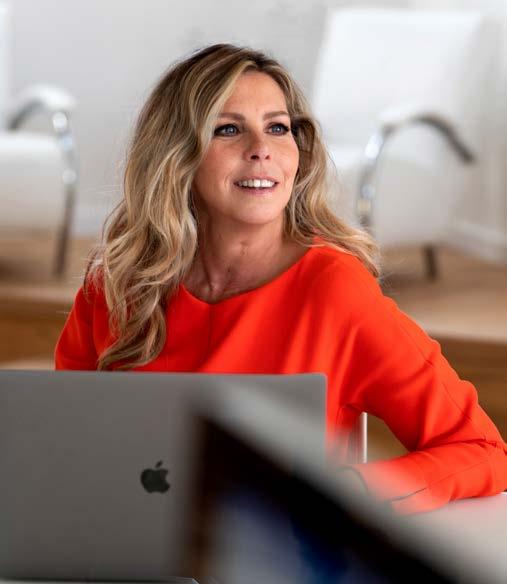

193 DUTCH INDUSTRY
Health
Smart
ENERGY

“We are continuously developing innovative energy transport solutions for the future.”
194
As the global energy transition is gaining momentum, the Netherlands has a strategic position that enables it to play a major role in this development.
The country is blessed with an extensive network of pipelines, originally intended for the transport of gas, that is rapidly being made suitable for hydrogen (H 2 ). The Dutch company, SoluForce, has developed the ultimate solution for H 2 transport by pipeline and is geared to speed up the energy transition.
Revolutionizing the way hydrogen is transported
The Netherlands is positioning itself to become the most important green energy supplier for Northwest Europe. Step by step this ambition is being realized. Memorandums of Understanding (MOUs) for the import of large quantities of H2 from all over the world are being concluded, while the formerly state-owned company Gasunie is quickly adapting its existing backbone for the transit of hydrogen cross country and across the border. Additionally, under the European IPCEI (Important Projects of Common European Interest), subsidies are being released for large hydrogen production factories in the Netherlands.
So far so good: but what about the next steps? How can this hydrogen be distributed in the region and how can it reach the chemical industry or other potential end users? How can decentralized and smaller-scale production of hydrogen be stimulated for direct use in the region for mobility or local industry?
These are all challenges which can be met by SoluForce. The company has developed a groundbreaking solution for hydrogen transport by pipeline: a safe, sustainable, costefficient and, above all, quickly deployable infrastructure for local hydrogen distribution.
Innovative pipe systems
SoluForce started producing completely non-metallic pipeline systems almost 25 years ago. These were originally conceived as the best solution to prevent corrosion for pipes to transport traditional fossil energy supply. SoluForce is therefore the originator of Reinforced Thermoplastic Pipes (RTP) for the transport of water and hydrocarbons in the traditional oil and gas industry. Its pipes have been used worldwide for more than two decades and today, more than 4000 km of SoluForce pipes have been installed in various applications.

“One of our most important suppliers of raw materials has its factory in the Delfzijl chemical park and we can immediately bring green hydrogen as energy carrier to our own supply chain.” - Robert-Jan Berg, Managing Director.
DUTCH INDUSTRY 195 SoluForce

HYDROGEN TIGHT PIPES
The SoluForce system has been certified for hydrogen applications. The pressure resistance of these pipes is (more than) high enough to enable direct connection to 100% green H2 production from any electrolyser. Moreover, the system can even facilitate the storage of H2 within the pipe itself up to 100 bar.
Up until now, this H2T, ‘Hydrogen Tight’, product is unique in the world of hydrogen transport: the completely reusable material has an up to four times lower CO2 equivalent footprint compared to steel alternatives. This ready to use pipeline solution has a major impact on the feasibility of green hydrogen and a sustainable energy mix.
The pipe comes with a uniquely manufactured bonded permeation-
tight layer. Permeation is the process of molecular penetration of gases, vapours or fluids through a solid, in this case preventing hydrogen from escaping from the pipe, and resulting in the industry’s only completely Hydrogen Tight Reinforced Thermoplastic Pipe, or RTP, system.
These properties eliminate possible health, safety and environmental issues. The pipe is reinforced with a strong synthetic ‘Aramid’ fibre, and the inside and outside layers are made of a non-corrosive high-density polyethylene (HDPE). No additional special treatment is needed, thus reducing installation and maintenance costs. Being fully flexible, it is ideal for even the toughest applications and can be installed anywhere.
To innovate means to combine
SoluForce believes in the crucial importance of collaboration in innovation. By joining forces, sharing expertise and combining resources, the company has been able, with its partners, to further develop the pipeline system for hydrogen applications.
Groningen Seaports (GSP) became the launch customer for SoluForce when, five years ago, they asked whether the company could develop a completely non-metallic pipeline transport and distribution system for hydrogen. GSP needed such a distribution system for their future plans: the construction of a hydrogen pipe network to distribute locally produced green hydrogen to nearby industry, and in this way to effectively link supply with demand.
The rest is history. SoluForce developed and constructed the pipes, which have been tested and certified by KIWA, the global specialist in Testing, Inspection and Certification. The pipes are proven to be non-permeable and suitable for hydrogen transportation. The permit preparation process for the intended distribution network was completed in 2023. Next step is the actual realization of the pipeline infrastructure.
196
The ‘why’
The non-metallic pipeline systems and connectors that are developed by SoluForce offer many advantages. First of all, they are quick to deploy in challenging terrain. With ease, they go round corners, up hills, across gullies and under water. Also, the pipes have a designed lifetime of up to 50 years and are maintenance-free.
Because of this ease of installation and maintenance-free use, what are termed the ‘Total Costs of Ownership’ are much lower than comparable piping systems. In addition, the SoluForce product is supplied on ‘coils’ and connections between two coils only need to be made once every 400m. The result is a very speedy installation process with significant savings on installation costs. Also, by definition, there is no chemical reaction between the pipe-material and the transport medium, which makes the installation of anodes, among other things, unnecessary. This maintains the purity of the produced green hydrogen, which is an important factor for usage in mobility.
Last but not least, the footprint of production of these non-metallic pipes is significantly lower than ferrous alternatives. The amount of CO2 emissions that occur during the production process and use, is reduced by a factor of four.
“If we want to achieve significantly less CO2 emissions towards an ultimate Carbon Neutral climate goal by 2050, we can at least start using materials that emit less CO2 in the production process, wherever possible.”

HYDROGEN APPLICATIONS
In the rapidly evolving world of hydrogen technology, SoluForce’s flexible pipelines play a major role in connecting countless hydrogen projects with a wide range of innovative and impactful applications. Some of these applications are:
• Regional Hydrogen distribution: SoluForce flexible pipelines facilitate the distribution of hydrogen in a scalable and efficient manner. They can be used to transport hydrogen from production facilities to distribution points and end users, forming a crucial link in the local hydrogen chain.
• Refueling stations (HRS) for hydrogen vehicles: Building hydrogen refueling stations is an important step towards greener mobility. SoluForce pipelines ensure a safe, reliable and cost-efficient supply of hydrogen from storage to filling stations, allowing the infrastructure for hydrogen vehicles to be expanded more quickly.
• Industrial applications: Hydrogen is increasingly
being generated locally and used in industrial processes, such as refineries and chemical plants. The SoluForce system offers the flexibility and robustness needed to transport hydrogen locally in these demanding environments.
• Energy storage: Hydrogen is seen as a promising form of energy storage. SoluForce can provide the infrastructure needed to store and deliver hydrogen when demand peaks, enabling efficient use of renewable energy sources.
• Offshore and Maritime Applications: The SoluForce system, being flexible and non-metallic, creates an alternative solution for maritime applications, where the system can create integrated pipeline grids to collect the hydrogen produced at Offshore wind farms.
With a proven track record, the SoluForce pipeline system can contribute to the acceleration of the hydrogen revolution. The system can play a unifying role in creating a cleaner and more sustainable future.
197 DUTCH INDUSTRY
SoluForce


Decentralized hydrogen production
Because of the properties of the SoluForce system, it is proven to be highly suitable for decentralized hydrogen production, which is exactly one of the challenges the world is facing. To test these possibilities in a real-life situation, the company is involved in the Dutch demonstration project ‘Duwaal’. The aim of this project is to convert the electricity into hydrogen directly at the wind turbine and then supply the hydrogen to a nearby refueling station (HRS) via a 5 km pipeline.
Duwaal, which was set up by a group of companies, has already proven to be successful. Progress gained momentum with the backing of a supportive local government and a joint ambition to simultaneously organize supple and demand of hydrogen in this region. There is a strong spin-off to various subprojects. The ultimate goal is to scale up and create a nation-wide, publicly accessible transport and distribution system for hydrogen, just as is already the case with electricity and natural gas.
Installing a SoluForce pipeline is many times cheaper than installing an electricity grid. So, where there is no existing electricity grid with available overcapacity, the electrolyser/ hydrogen production can be located near the sun and wind farms and the electricity will be converted directly into hydrogen.
“Sun and wind farms that can produce green hydrogen are mostly not located directly next to the port terminals that must handle exports. Our systems enable a new possibility: to decentralize hydrogen production and make use of a new green energy source.”
Global potential
Due to its fast installation options and easy adjustments to cross uneven terrain, the SoluForce H2T pipeline system is extremely suitable for transporting hydrogen over many km to the ports where the green hydrogen can be used, for examples in an ammonia factory near the port. Brazil, Chile, Namibia, South Africa, Morocco, Egypt, UAE, Oman, Saudi Arabia, Canada and Australia are a few examples of countries outside of Europe that are well located for producing hydrogen from renewable solar and wind sources and have access to ports for shipping it, including to Europe. In this way, SoluForce also aims to contribute to the Dutch government’s ambition to import hydrogen in large quantities from outside Europe.
The Middle East is also a market where SoluForce products are already extensively used, especially in oil and gas applications.
“Many large energy companies in the United Arab Emirates, Oman and Saudi Arabia already have special ‘Non-metallic Innovation Programmes’ that encourage the use of non-metallic pipelines in order to limit CO2 emissions from material suppliers where possible. Unlike in Europe, the use of non-metallic pipelines is already a standard and hopefully the use of non-metallic SoluForce pipes for the transport of renewable energy in this region will become a given in the future.”
198





199 DUTCH INDUSTRY
SoluForce
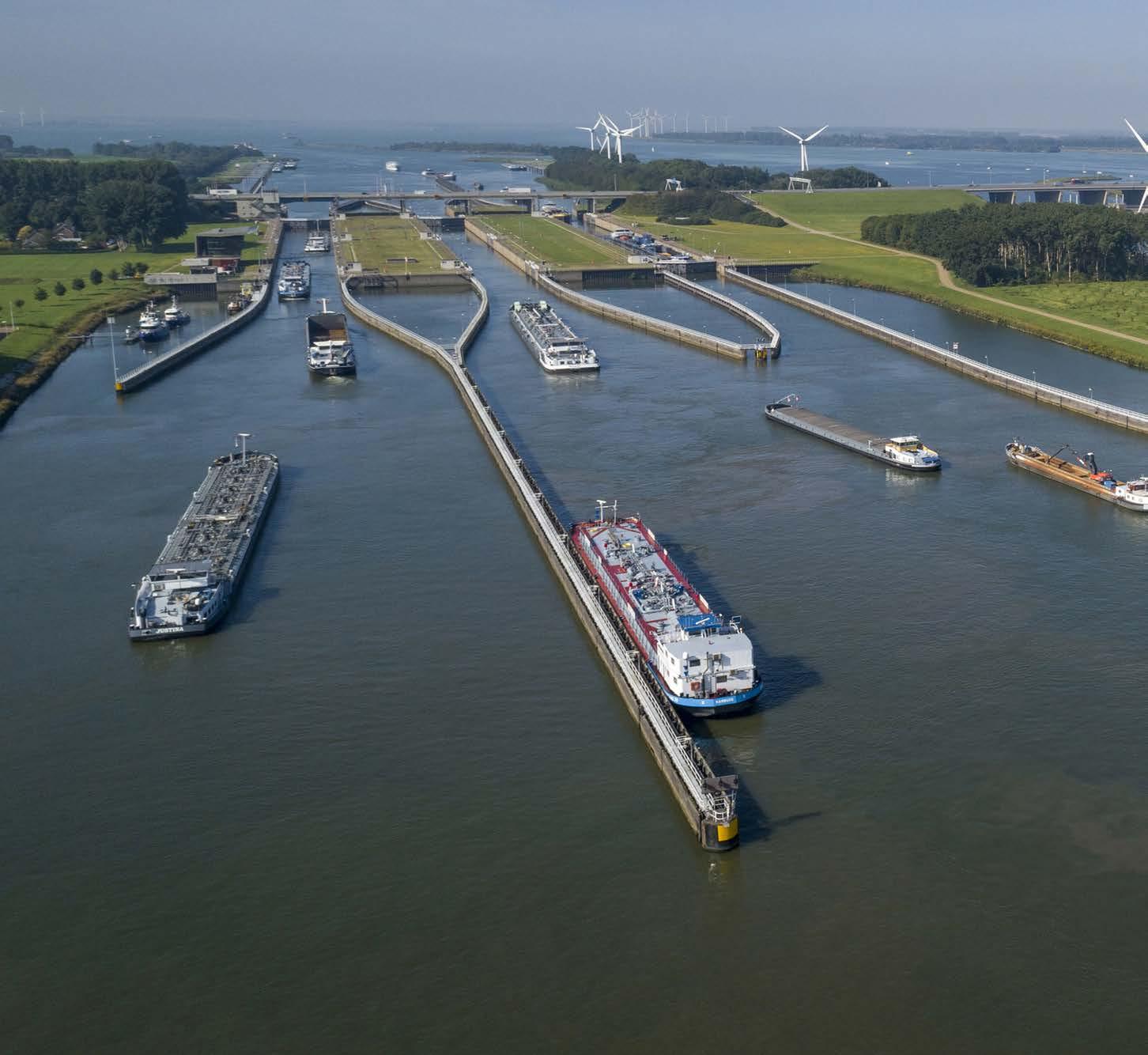


202
INVESTING IN THE NETHERLANDS
The Netherlands, also known as the “gateway to Europe”, is the most competitive economy according to the WEF Competitiveness Index (2020) in Europe and one of the best countries for business investment in the world. With just over 17 million inhabitants, our country is small but full of innovation. Our nation has a lot going for it. A great location, extremely well-connected, and a highly educated and skilled workforce, make the Netherlands an attractive place for business.
INVESTING IN THE NETHERLANDS*
A well-connected business location
The Netherlands is strategically located on continental Europe with access to 170 million consumers within 500 km and 244 million consumers within 1,000 km. This means that major European economies, like Germany, the United Kingdom, France, are all within a day’s reach. In addition to physical connectivity, the Netherlands is a digital frontrunner and has the highest broadband penetration per capita in the world, which means companies can stay connected online or in person. Add to that the Netherlands’ stable and pro-business climate and it’s no wonder why it’s known as an ideal base for companies looking to expand into Europe.
Fostering a growth environment for international companies
Collaboration is in the Dutch DNA. The Dutch take a unique, quadruple-helix approach to collaboration, involving participation from businesses, knowledge institutions, government and citizens. Together, we create a dynamic location where foreign companies can also innovate and excel – and that’s exactly what’s happening. According to the Global Innovation Index (GII) 2019, the Netherlands ranks in the top five countries for innovation.
In addition, companies seeking an Englishspeaking workforce have come to the right place. 90% of the Dutch population is fluent in English and a higher percentage speaks German and French than their counterparts elsewhere.
The Netherlands’ education system produces some of the best graduates in Europe. In tandem with top education, quality of life is high in the Netherlands, with several cities recognized for their liveability. When you pair a high quality of life with an outstanding education system, it’s no wonder why both international companies and their employees find a great new home in the Netherlands.
A competitive economy
The Dutch economy rivals European and global competitors making it a welcoming, stable and rewarding choice for foreign businesses to invest. The Netherlands’ GDP per capita is above EU averages and ahead of most nations. The Dutch economy has proven time and time again to be a powerhouse on the global stage. The Dutch punch
203 DUTCH INDUSTRY
THIS CHAPTER IS BASED ON SOURCES FROM THE NETHERLANDS FOREIGN INVESTMENT AGENCY.
*


above their weight by ranking as the most competitive economy in Europe and fourth in the world according to the World Economic Forum, the fourth most competitive nation in the 2020 IMD rankings and fifth in the 2020 Global Innovations Index.
Attractive business climate
A competitive business climate rewards companies with government-sponsored incentives, especially for innovators. These fiscal endeavors are buttressed by a highly educated multilingual workforce and an openness to new ways of thinking. The country’s Expat Centers welcome internationals living in the Netherlands, creating a dynamic and diverse workforce to contribute to this economic success.
In 2019, a record number of foreign companies invested in the Netherlands, taking advantage of these benefits.
HIGHLY
SKILLED,
PRODUCTIVE AND MULTILINGUAL WORKFORCE
For businesses seeking a multilingual and highly skilled workforce, look no further. The Netherlands is an internationally competitive location for a workforce. The country is also renowned for welcoming, developing and nurturing talent. The Netherlands moved up to sixth place in the INSEAD Global Talent Competitiveness Index 2020. The IMD Competitiveness ranking scored the Netherlands particularly well on factors like employment and labor market, with high attractiveness indicators for education level and skilled workforce. By the numbers, talent in the Netherlands is split with 82% in services, 16% in manufacturing and 2% in agriculture, according to Statistica.
Life-long learning
To say the workforce in Holland is skilled would be an understatement. With the help of the Netherlands’ exceptional academic education and vocational training, Dutch participation in life-long learning is very high. This means that the Dutch
continue to grow workplace skills even after completing formal education. A testament to these skills, the Netherlands has the largest share of inhabitants who are proficient in using the internet, computers and software, according to Eurostat and Netherlands Statistics. The Dutch knowledge of English as a second language is also continuously recognized as the best in the world in the EF English proficiency index.
Dutch education and universities
With a robust university system that produces some of the best graduates in Europe, it’s no surprise that talent in the Netherlands is a huge draw for foreign companies. In the QS World University Rankings 2019, 13 universities in the Netherlands were ranked within the world’s top 350. Seven of those universities are within the top 150. Upon graduation, 6% of international graduates end up starting a business in the Netherlands. Additionally, since the Netherlands is part of the European Union, companies based in the Netherlands can hire talent from all other member states.
204
INVESTING IN THE NETHERLANDS
State-of-the-art infrastructure
The Netherlands is a strategic choice geographically. 95% of Europe’s most lucrative markets just 24 hours’ drive away from Amsterdam or Rotterdam. State-of-theart infrastructure connects the Netherlands domestically and internationally, with efficient airports, railways, waterways and ports.
The Netherlands’ infrastructure is among the best in the world, powering business growth through its sophisticated airports, ports, digital network and rail, road and waterway connections. This infrastructure powerhouse is
home to leading transport hubs with the Port of Rotterdam, Europe’s largest port; and Amsterdam Airport Schiphol, ranked as the second best airport in Europe in 2020.
Through its world-class airports and high-speed rail, road and waterways, the Netherlands’ infrastructure opens opportunities within the rest of Europe, and beyond. It provides access to 170 million consumers within a 500km radius and 244 million consumers within a 1000km radius of the Netherlands. Major European economies like Germany, U.K. and France, are all within a day’s reach. This means the Netherlands
offers companies the perfect springboard to reach the whole European market.
With 23 million bikes and 17 million citizens, the Netherlands has long been known as a bike-friendly nation and leader in sustainable transportation. In fact, more than 33,000km of Dutch roads are dedicated to cycling infrastructure – underlining the healthy lifestyle and high quality of life in the Netherlands. The Netherlands’ cycling infrastructure makes it safe and convenient to drop your kids off at school, make your way to the central station, park your bike and catch the train just in time for work.

205 DUTCH INDUSTRY


DIGITAL FRONTRUNNER
If we look beyond bikes, the Netherlands is also a digital frontrunner, with the adoption rate of single technologies above the EU and US average for platforms, Internet of Things and big data. The Netherlands rated first for digital intensity by the European Investment Bank (2019), with the services and infrastructure sectors very willing to adapt to new technologies.
On top of that, the IMD’s 2019 World Digital Competitiveness Ranking, scored Netherlands third in the world for IT integration, third for its future readiness index and sixth for its digital competitiveness. In 2017, PWC ranked the Netherlands first in the EU for outstanding use of ICT. Time and again the Dutch digital adaptation proves to be amongst the best in show.
As the world’s most connected country according to DHL’s Global Connectedness Index, the Netherlands leads for its digital infrastructure. 194 data centers support computing needs – with Amsterdam as the number one European hub. Together with excellent mobile and landline connections, one of the world’s largest internet exchanges the Amsterdam Internet Exchange (AMS-IX), and the NL-IX, provide companies in the Netherlands with an excellent data transfer infrastructure

206
INVESTING IN THE NETHERLANDS

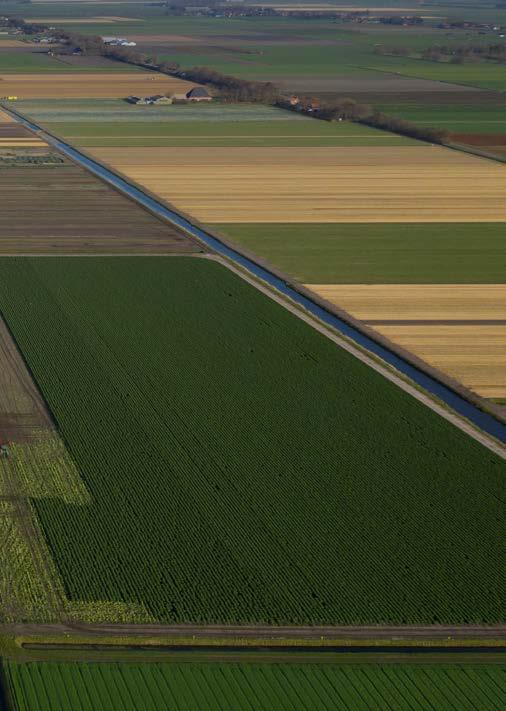
Future proof
The Netherlands fosters an unrivaled entrepreneurial spirit. By embracing innovation, sustainability and digitalization, the Dutch economy attracts the world’s leading businesses. Companies look to the Netherlands to tap into the public-private partnerships between the private sector, research universities and government that lead the way in future-thinking applications related to everything from agrifood and financial services to quantum technology. The EU Innovation Scoreboard 2020 ranked the Netherlands as the fourth best nation for innovators, a nod to the nation’s prowess for future-oriented thinking.
The Dutch national color may be orange, but the Netherlands’ sustainability initiatives prove that the country has thoroughly green ambitions. As a signatory to the 2015 Paris Climate Agreement, the Netherlands is commited to bold steps to achieve a circular economy and reduce greenhouse gas emissions to zero by 2050. With strengths in transportation, renewable energy and agrifood, along with a future-focused government approach, the Netherlands is leading the way in creating a sustainable future for all.
Working towards a sustainable future
It’s not surprising that a country known for its windmills is on the forefront of developments in renewable energy. The Netherlands is home to one of the largest offshore wind farms and the largest floating solar energy park in Europe. The Dutch are also committed to providing 50% of electricity through renewable sources like wind and solar by 2025. Meanwhile, the Port of Rotterdam is working with businesses to produce sustainable biofuels. The Dutch government supports initiatives by offering incentives to stimulate energy innovation and promote use of renewable energy sources.
In addition, the Dutch government works with industry, knowledge institutions, civil-society organizations, and other authorities to achieve a sustainable economy. Ranked first worldwide for material reuse rate, first for waste management and second in food system sustainability, the Netherlands is fully committed to developing that serve as a model for the rest of the world.
The Netherlands’ sustainability efforts are also embodied in the Dutch Smart City Strategy. The multi-stakeholder approach invests in smart technology and infrastructure to meet major social challenges like climate change. In fact, nearly one in eight Dutch households have solar panels on their roof, according to energy research institute DNER . The country is also home to the first ‘live’ smart grid community in Europe and has the second largest fleet of plug-in electric vehicles in the world.
207 DUTCH INDUSTRY

ECO-FRIENDLY AS A WAY OF LIFE
The Netherlands’ sustainability values are deeply rooted in Dutch culture. The country’s robust and eco-friendly transportation infrastructure is just another way that sustainability is woven into the Dutch way of life. In 2017, the Dutch Railways decided to run its trains using 100% wind energy. It also currently houses the world’s highest density of charging stations for electric vehicles. Looking ahead, the Dutch are committed to making all cars by 2030.
The Dutch cycling culture is not to be overlooked either. The Netherlands has long been known as a bike-friendly nation and a leader in sustainable transportation with more bicycles per capita than any other country in the world. The country has 33,000 km dedicated to cycling infrastructure, which makes it easy for Dutch citizens to incorporate sustainable transportation into their daily routines.
208
INVESTING IN THE NETHERLANDS
A culture of innovation
When it comes to the most innovative countries in the world, the Netherlands is one of the frontrunners in Europe. The Netherlands’ innovation culture has been long-standing, the inventors of Wi-Fi, Bluetooth and even the stock market. The Dutch have been innovating for centuries, and they haven’t stopped.
First and foremost, the Dutch foster a forward-thinking culture that is open to experimentation and cross-disciplinary ideas. This open-minded attitude helps Dutch innovators break the mold time and again. Work structures eschew hierarchy, giving workers more flexibility and removing barriers to benefit companies that engage with Dutch work.
International institutions underline the forward-thinking culture of the Netherlands. The EU Innovation Scoreboard ranked the Netherlands as an innovation leader in 2020. The Global Innovation Index named the nation a Global Innovation Leader in 2020.
Government incentives
The government stimulates cooperation between the private and the research sectors, providing fertile ground for innovation to sprout and grow. More than just solid policies, forming partnerships and fostering an innovation-friendly business environment is one of the top priorities of the Dutch government. To ensure companies are enabled to reach innovative ambitions, the Dutch government provides companies with incentives to finance for new ideas and businesses.

Research and education
The Netherlands is home to 14 universities, 34 centers of professional education and a variety of specialized training facilities. Wageningen University and Research, for example, is a world leader in agrifood innovation that’s pioneering solutions for global challenges. Another example is Delft University of Technology, which is advancing cyber security and artificial intelligence. The country is also known as a hub for research and development for major companies.
Startup culture
The Netherlands is full of startups, incubators, accelerators and other innovation hubs that provide growth opportunities for innovative concepts. Recent Dutch success stories include Adyen, a payment solutions startup valued at nearly $23 billion and Elastic, which raised $252 million in an IPO and is currently valued around $6.7 billion. The nation is home to 13 unicorns, ranking fourth in Europe for financial investors to support new ideas.
209 DUTCH INDUSTRY
LIFE IN THE NETHERLANDS

On 30th April 2013, the day when “the Queen had resigned and it was the King’s first day at work” British writer Ben Coates was in Amsterdam noticing a typical Dutch phenomenon. “The Dutch capital had been hit by a serious outbreak of what the locals called, whose chief symptom was to urge to cover oneself from head to toe in bright orange clothing.” In the preface to his book “Why the Dutch are different?” Ben Coates describes a scene that is recognizable to all the Dutch around the globe. We Dutch are worldly, outgoing and industrious but we also like an opportunity to have a good party and dress up in the national color.
This approach to life, or quality of life in the Netherlands, plays an important role in attracting internationals and companies looking for a new home. It is not just based on anecdotes that the Netherlands is a good place to live and work, rankings show it too: the world’s sixth happiest nation according to the United Nations Happiness Report. The OECD reports that the Netherlands has the best work-life balance in the world and gives the Netherlands above average scores in numerous sectors including employment, health, housing and subjective well-being. The Dutch agree, with 87.3% of the population giving their life a score of 7/10 or higher in 2019 according to Netherlands Statistics.
Balance
Living in the Netherlands means embracing a healthy work-life balance. Dutch employers and employees share the idea that a healthy worklife balance makes employees more motivated and productive. And it shows: part-time labor is popular in the Netherlands and the efficiency of Dutch workers is extremely high compared to other European nations according to the OECD. The Dutch value their time off, and employers offer a vacation stipend as part of salaries.
Education
Children living in the Netherlands are amongst the happiest in the world. The high level of happiness could be in part due to the Netherlands’ effective educational systems. US News ranks the Netherlands in the top 10 for education worldwide,
with its universities consistently ranked as some of the world’s best and with 13 Dutch centers of higher education featuring in the Times Higher Education rankings. A healthy public education system and quality international schools help create a secure environment for families and their children.
Safety
Dutch cities and villages are equipped with a network of cycle lanes that are so safe and comfortable that even the youngest and the oldest riders use bikes as the easiest mode of transport. In addition to increasingly demarcated bike paths to make transportation safer, life in the Netherlands is generally safe and calm. Only 1.4% of the population over 15 often feels unsafe according to Netherlands Statistics in 2019.
Healthcare and pension
The Netherlands ranks second in the 2018 EHCI (PDF) ranking for best healthcare system, with equitable access to high quality services. There’s also a great pension system for later in life. Melbourne Mercer Global Pension Index (PDF) ranks the Netherlands as the best nation for pension and only Denmark also received an A-grade in 2019.
Cohesion
Gezellig, another essential Dutch concept, means cozy, but also embraces the idea of togetherness and a welcoming environment. Living in the Netherlands will illustrate this idea, where social and work environments function together, for local Dutch residents and foreigners alike.
210

211 DUTCH INDUSTRY
INVESTING IN THE NETHERLANDS KINGSDAY IN AMSTERDAM.
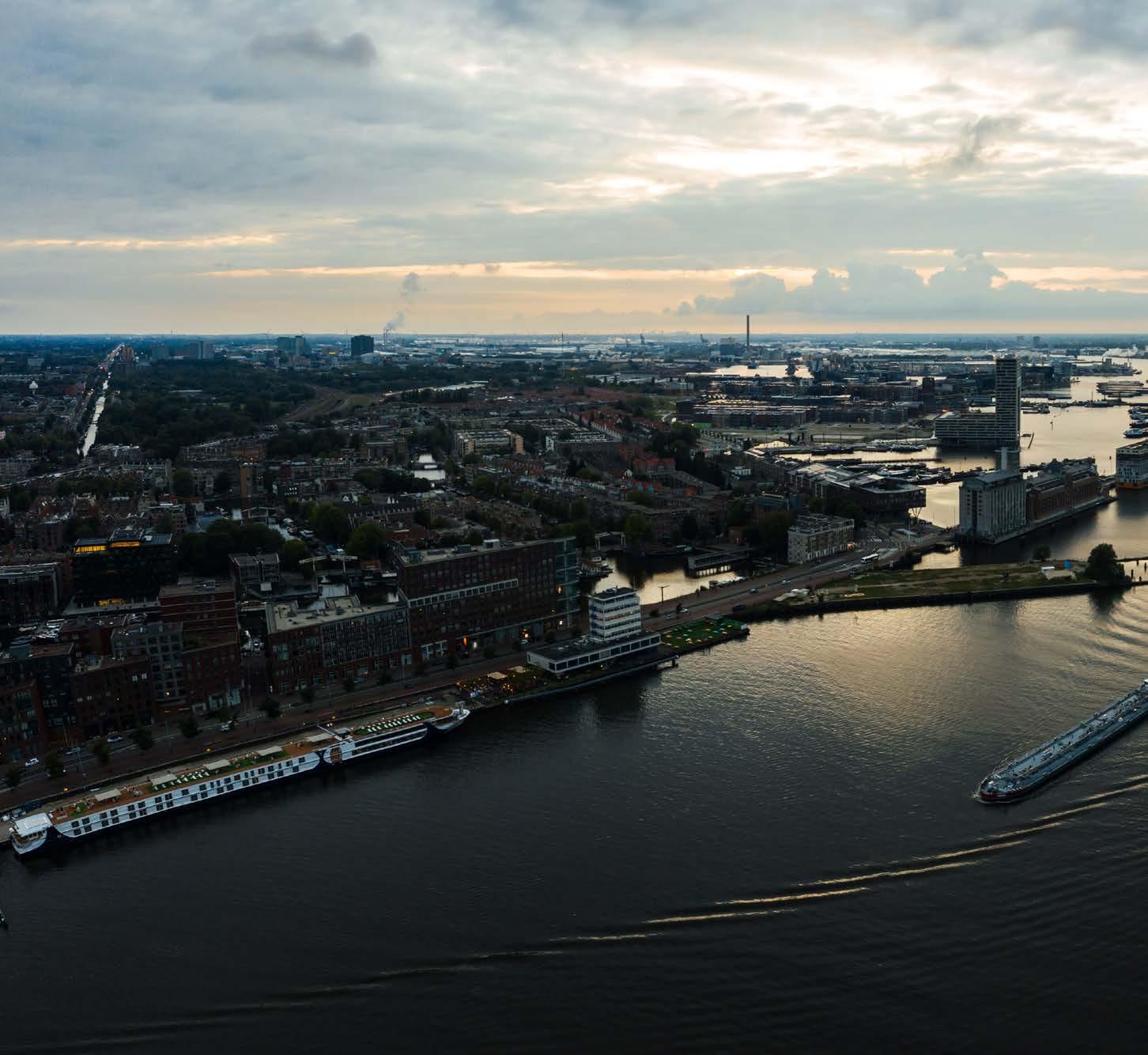


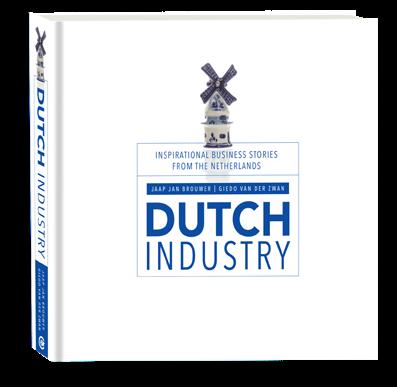
DUTCH INDUSTRY PUBLICATIONS
Dutch Industry books give Dutch entrepreneurs a platform, describing how their various companies operate at the forefront of the modern global market, each company in its own sector or niche.
“[These] book[s] offer a wide-angle perspective of Dutch industry. The individuals featured talk about the competition abroad, about innovation and about the challenges they encounter in their day-to-day business.

I am confident [these] book[s] will give you a clearer picture of how Dutch companies operate and work towards a better, more sustainable world, as well as a better understanding of the engine behind our unique and thriving industry.”
Mark Rutte Prime Minister of the Netherlands
Dutch Industry underwrites the international positioning strategy of the Netherlands and endorses its key philosophy of solving global challenges together. To join the conversation, visit NLplatform.com.
214

ABOUT THE AUTHOR
Giedo van der Zwan (1967) studied business economics at the Erasmus University, Rotterdam. He worked for several PR consultancy firms and specialized in corporate communications, building the reputations of companies and sectors. One of Giedo’s main strengths is to give ‘consultancy’ language a journalistic twist and being a keen photographer he is able to capture the ‘soul’ of a company with his camera.
215 DUTCH INDUSTRY
WWW.DUTCHINDUSTRY.ORG
Text
Giedo van der Zwan
Translation
Stephen Mercer
Design and layout
Josta Bischoff Tulleken
Photography
All photographs are provided by the companies described and in some cases additional images are created by Giedo van der Zwan.
Print
Royal Van der Most, Heerde
This issue has been printed in an edition of 2.000
Publisher
C2i Business Stories
Kerkhoflaan 6
2585 JB Den Haag
The Netherlands
www.c2i.nl
ISBN 978-90-828383-4-3
© 2024
All Rights Reserved. No part of this book may be reproduced or utilized in any form without permission in writing from the publisher.
216
“Wherever I go in the world, I find Dutch businesses active there, often helping to tackle the major challenges of our time. Challenges like producing enough food to feed the planet’s growing population, or anticipating the impact of climate change on water management, reducing greenhouse gas emissions and halt global warming.
Netherlands aims to be a world leader in smart, clean and energy-efficient technologies. Dutch industry fulfils its role as a partner by sharing its knowledge on how to increase crop yields, combat flooding or optimise communications, safety, and infrastructure, to name but a few examples.
The individuals featured in this book talk about the competition abroad, about innovation and about the challenges they encounter in their day-to-day business. I am confident this book will give you a clearer picture of how Dutch companies operate and work towards a better, more sustainable world, as well as a better understanding of the engine behind our unique and
thriving industry.”
Mark Rutte Prime Minister of the Netherlands


 GIEDO VAN DER ZWAN
GIEDO VAN DER ZWAN















































































































































































































































































































































